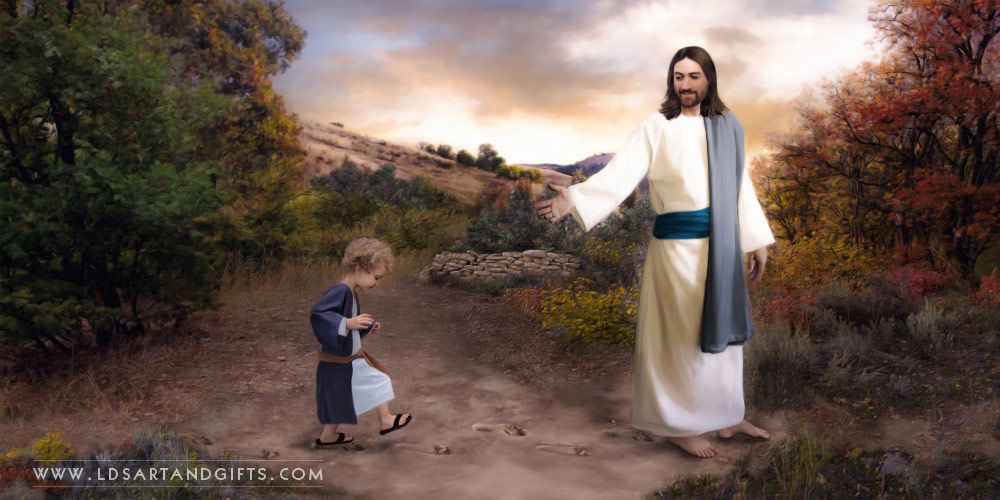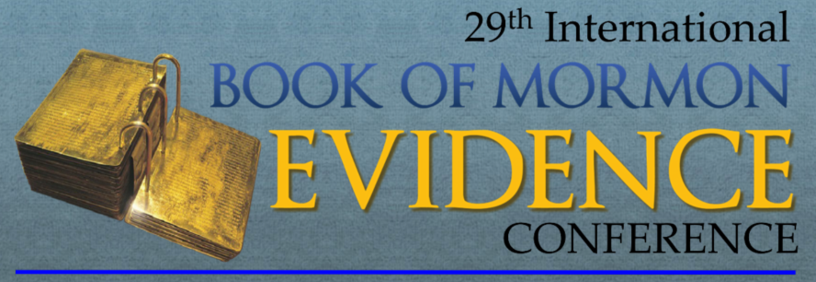*Where did the idea that the Book of Mormon occurred in central America originate?
*What historical evidence from Joseph Smith exists to support the many Mesoamerica theories speculating about its geography?
*Where did the Book of Mormon history really take place and what did the Prophet, Joseph Smith, know about it, if anything?

“BYU law school graduate, former JAG attorney and author Jonathan Neville has conducted one of the most important, monumental and history clarifying research on these subjects. His research has culminated in one of the most important books on the Book of Mormon that has been written, a book that will finally lay to rest speculation about where to complete our search for the evidence of the reality of the Book of Mormon, a book that reveals new research that is destined to become… THE SMOKING GUN OF BOOK OF MORMON GEOGRAPHY…” Rod Meldrum
Saturday, June 11, 1842, was unusually cold in Boston, Massachusetts. It snowed in the city that day, the latest snow in Boston history. Also on that day, the Dollar Weekly Bostonian published the first in a series of articles written under a false name–a pseudonym–that were part of a scheme to change LDS thinking about the Book of Mormon. The scheme would misdirect Book of Mormon research for 173 years.
By 1842 standards, it was a simple plan, but there were complications. The now virtually unknown perpetrator–who will become known as the “Smoking Gun” of Book of Mormon geography –was well known at the time. He had to work anonymously. He had to work from a great distance. And he needed an accomplice, someone very close to the Prophet Joseph Smith whom no one would suspect until it was too late.
To pull off this scheme, it had to be an inside job.
It was brilliantly executed. The seeds sown by the conspirators in 1842 took root and prospered. Even today, the fruit is visible inside thousands of LDS chapels around the world, in the pages of Church manuals and magazines, and in illustrations published inside the Book of Mormon itself. Millions of people–members, investigators, and critics–have formed opinions and mental images of the Book of Mormon based on the work of the Smoking Gun.

Try this experiment. With your mind’s eye, picture Samuel the Lamanite on the city walls, preaching to the Nephites.
Did you see a man standing on top of a massive stone wall, his red cape blowing in the wind? The sun setting behind him? A muscular archer aiming directly for his heart?

If that is what you pictured (see picture left), you are experiencing the influence of this man… the Smoking Gun of Book of Mormon geography.
Editors note: Let’s update your visual reference. See our great friends new Heartland depiction of Samuel the Lamanite (right)
Arnold Friberg, who painted that image of Samuel the Lamanite and eleven other paintings in the famous series on Book of Mormon events, specifically set his paintings in Central America. His painting titled “Lehi and His People Arrive in the Promised Land” includes white birds flying around the ship. Friberg explained, “The birds are not seagulls, but rather swallow-tailed roseate terns, which are found in the tropical waters around Central America. Such details helped define the geographic location for this painting.” 1
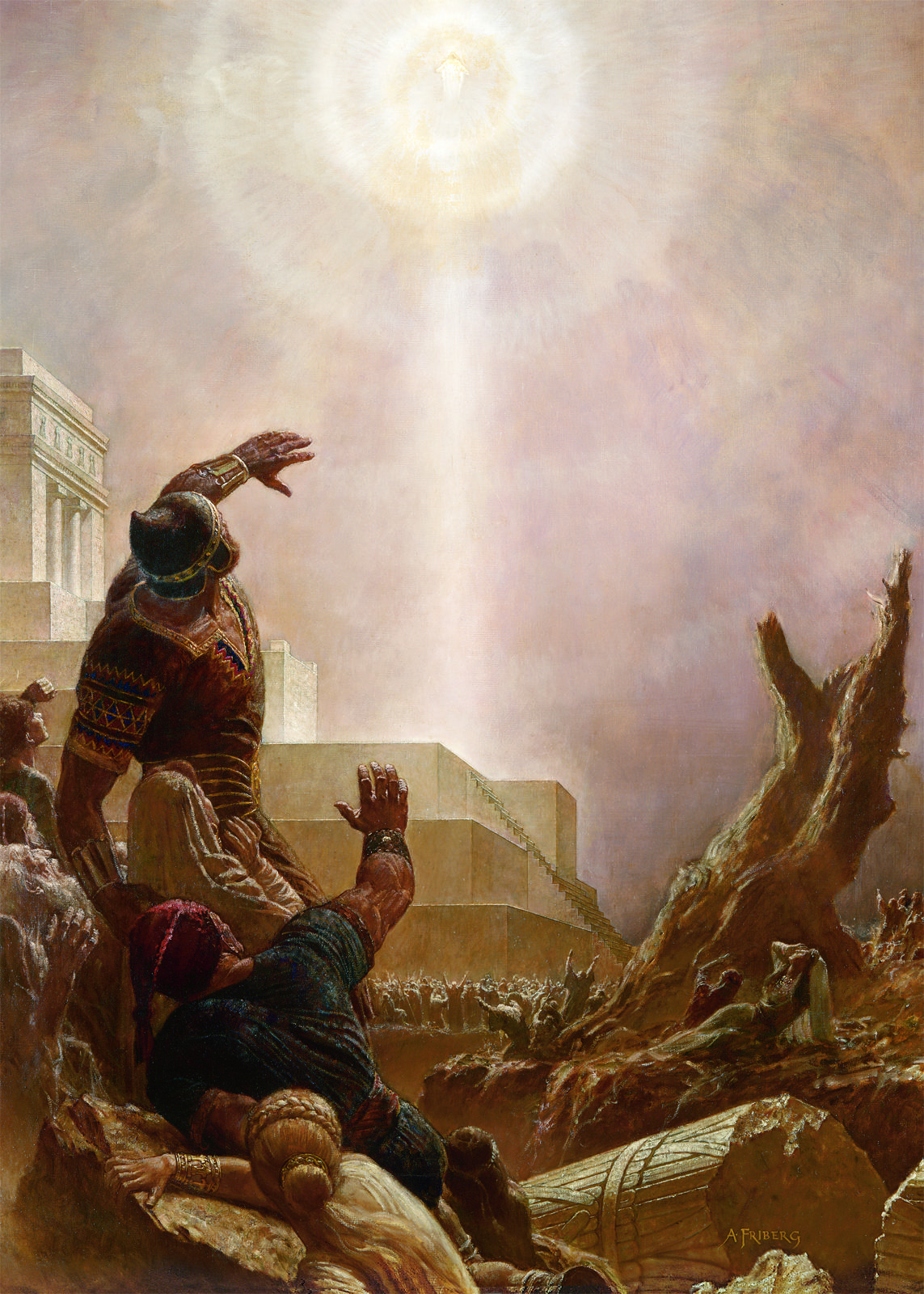 Why did Friberg choose a Central American setting? (See picture left). Why do so many people–perhaps most members of the Church today–think Book of Mormon events took place in Mesoamerica?
Why did Friberg choose a Central American setting? (See picture left). Why do so many people–perhaps most members of the Church today–think Book of Mormon events took place in Mesoamerica?
It was the work of a small group of men, led by the Smoking Gun.
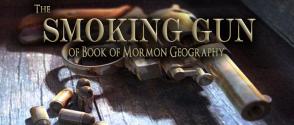 Early church members speculated that the Book of Mormon events took place across the Americas. The “narrow neck of land” had to be Panama, they guessed, while the Nephites lived in North America and the Lamanites in South America. Such a hemispheric model might have made sense in a day when people did not have accurate maps–let alone satellites–to reveal the distances and geography involved. But Joseph Smith made statements that, had they been more widely
Early church members speculated that the Book of Mormon events took place across the Americas. The “narrow neck of land” had to be Panama, they guessed, while the Nephites lived in North America and the Lamanites in South America. Such a hemispheric model might have made sense in a day when people did not have accurate maps–let alone satellites–to reveal the distances and geography involved. But Joseph Smith made statements that, had they been more widely
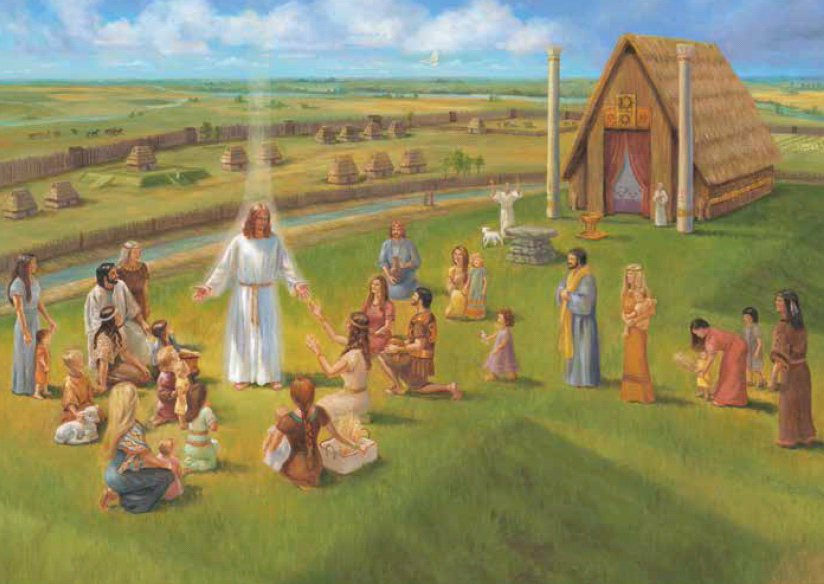
known, likely would have focused the Saints’ attention on a smaller geographic area.
(Today, the picture on the left represents a better picture of what the Heartland Geography of the Book of Mormon looks like near Newark, Ohio in the United States)
Joseph Smith’s and Oliver Cowdery’s view
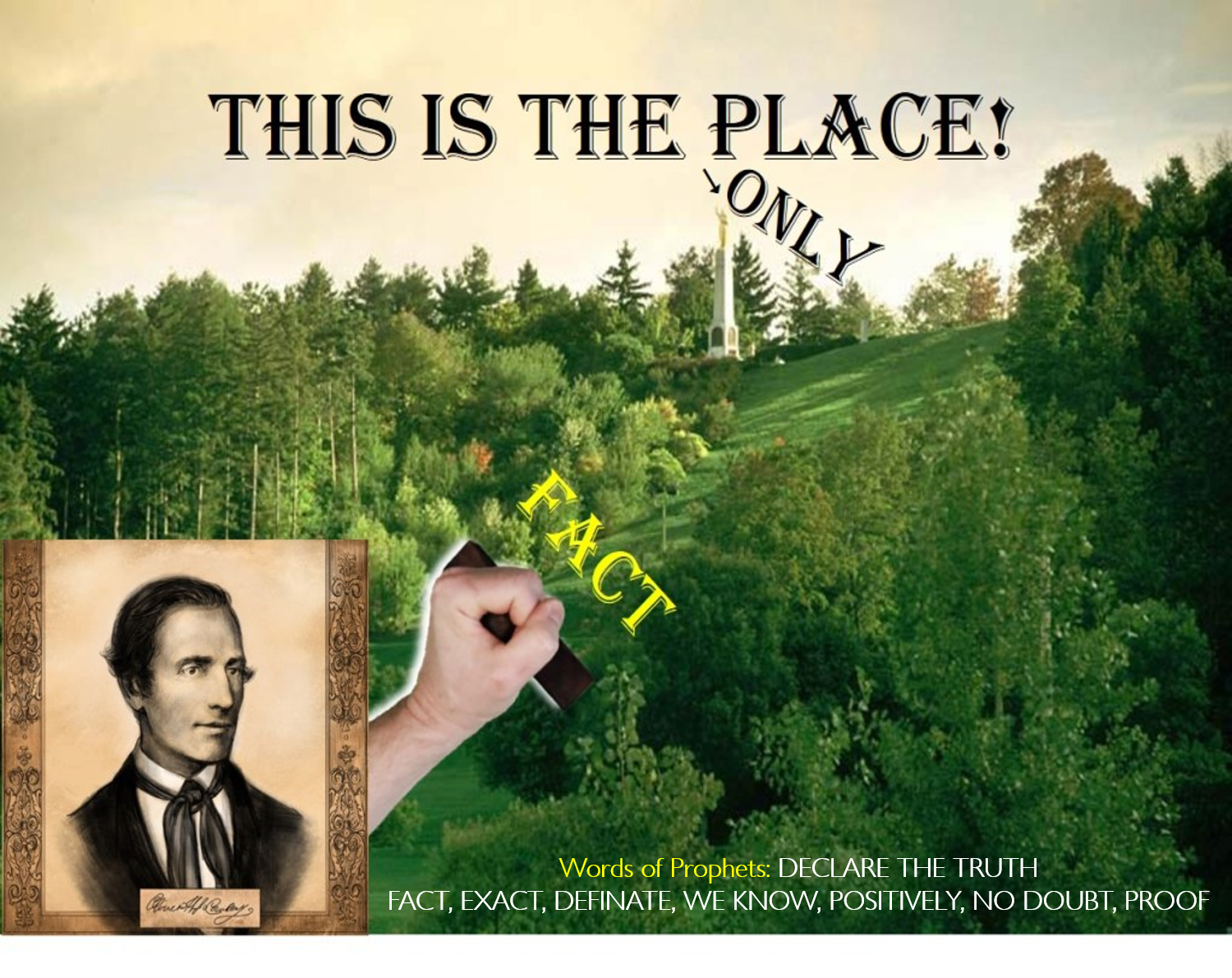 The Book of Mormon text mentions only one site–Cumorah–that relates to a modern location. Cumorah is where the last great battles were fought, and is also the place where Joseph Smith obtained the plates. Some people believe there is one Cumorah; others believe there are two, one in New York and another–the scene of the last battles–in Mesoamerica. This raises the question, how did Joseph Smith’s Cumorah end up in Mesoamerica?
The Book of Mormon text mentions only one site–Cumorah–that relates to a modern location. Cumorah is where the last great battles were fought, and is also the place where Joseph Smith obtained the plates. Some people believe there is one Cumorah; others believe there are two, one in New York and another–the scene of the last battles–in Mesoamerica. This raises the question, how did Joseph Smith’s Cumorah end up in Mesoamerica?
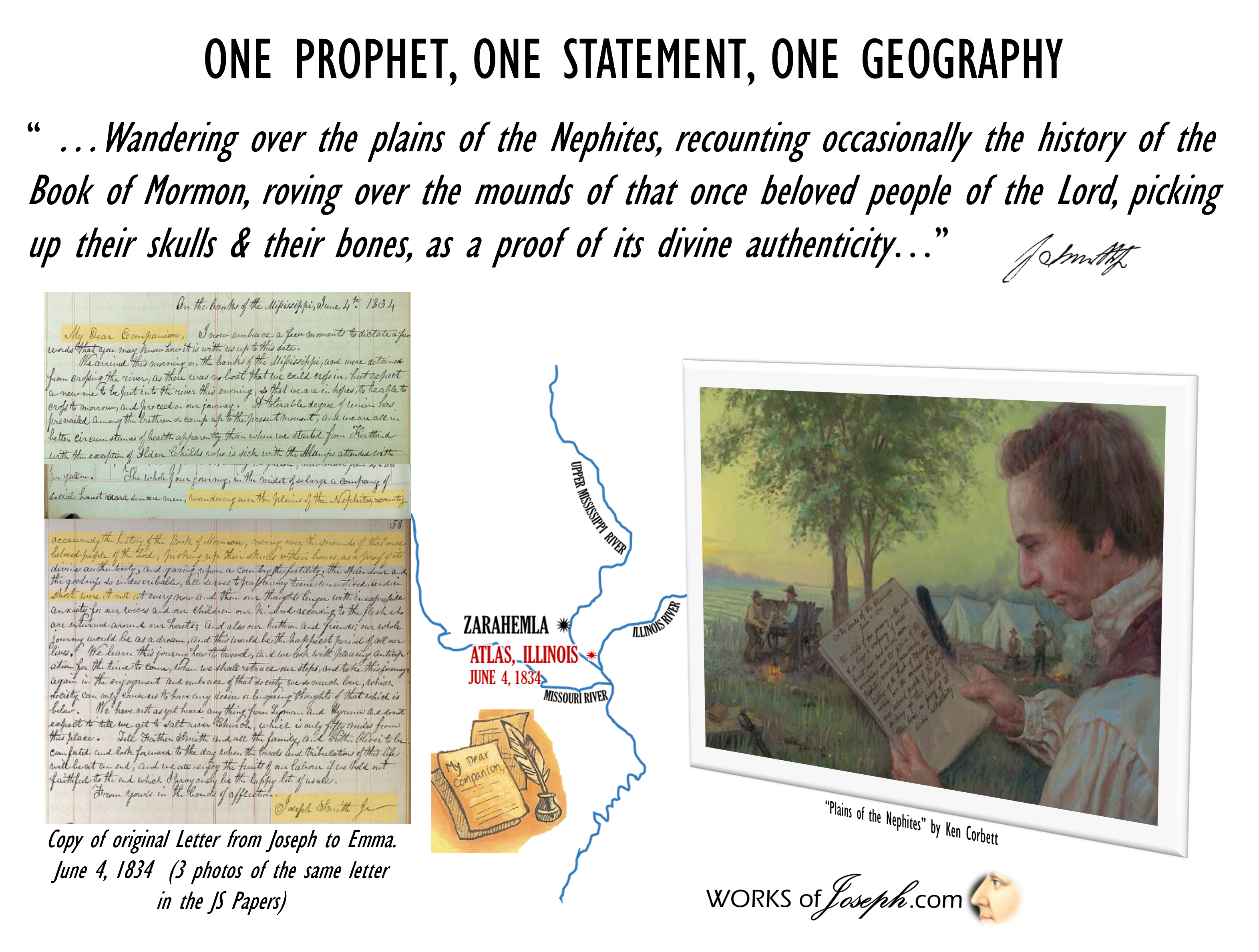
After crossing Ohio, Indiana, and Illinois as part of Zion’s Camp in 1834, Joseph wrote a letter to his wife Emma. (See picture above). He described “wandering over the plains of the Nephites, recounting occasionally the history of the Book of Mormon, roving over the mounds of that once beloved people of the Lord, picking up their skulls & their bones, as proof of its divine authenticity.“
Where are the plains of the Nephites? The Book of Mormon describes several plains where events took place, including plains near the city of Mulek (Alma 52:20), the plains of Agosh (Ether 14:15), the plains of Heshlon (Ether 13:28), and the plains of Nephihah (Alma 62:18). Joseph could have been referring to any or all of these.
As recorded in the Doctrine and Covenants, the Lord sent missionaries to the Indians living in New York, Ohio, and Missouri, specifically identifying them as Lamanites and telling them that He (the Lord) “would go with them and be in their midst.” (D&C 32:2) During this mission, Joseph Smith told tribes from Michigan that the Book of Mormon was the history of their ancestors. He wrote that the Book of Mormon is a record of “the forefathers of our western tribes of Indians.” 2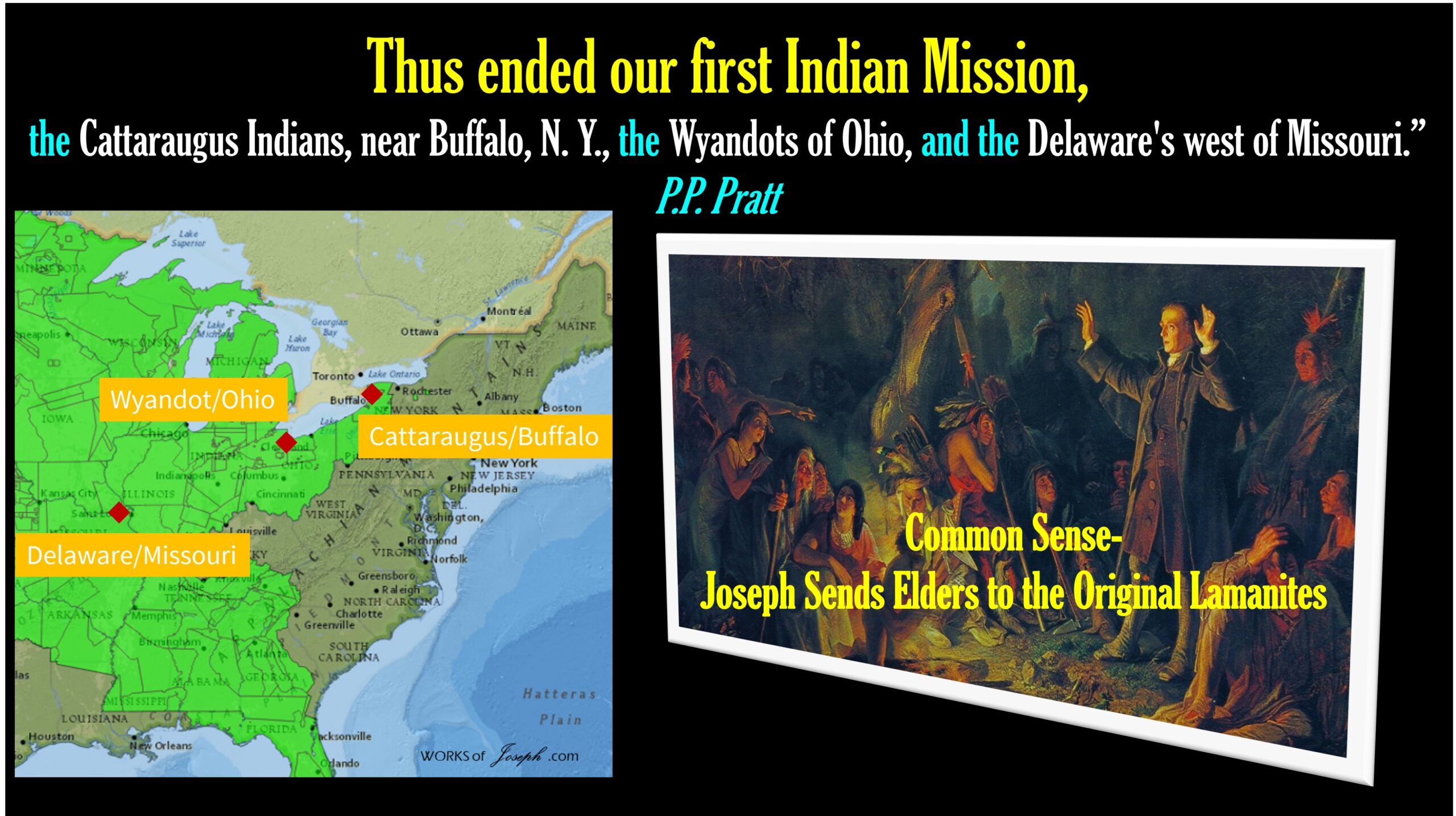
Joseph identified an old Nephite altar in what is known as Adam-ondi-Ahman. He had a vision on Zelph’s Mound of a fallen Lamanite who was killed during the last great struggle with the Lamanites and Nephites, and who served under the great prophet Onandagus, who was known from the Hill Cumorah or east sea to the Rocky Mountains. Cumorah and “east sea” are both locations named in the Book of Mormon text. The Book of Mormon explains that the last battles occurred between Zarahemla and Cumorah. Zelph’s Mound is located about 70 miles southeast of Nauvoo–between Zarahemla and Cumorah.
Mormon claims that when he was eleven years old, he “was carried by my father into the land southward, even to the land of Zarahemla. The whole face of the land had become covered with buildings, and the people were as numerous almost, as it were the sand of the sea.” Mormon 1:6-7. (See painting below). One non-Mormon observer in the 1800s claimed that anciently, there were 5,000 cities at once full of people in eastern North America. Another reported over 3,000 tumuli, or mounds, along the Ohio River alone. Today there are 170,000 known “Indian” archaeological sites in Illinois alone. Artifact collectors in Iowa, directly across the Mississippi from Nauvoo, have found tens of thousands of arrowheads in the vicinity. More wash up whenever the rivers flood.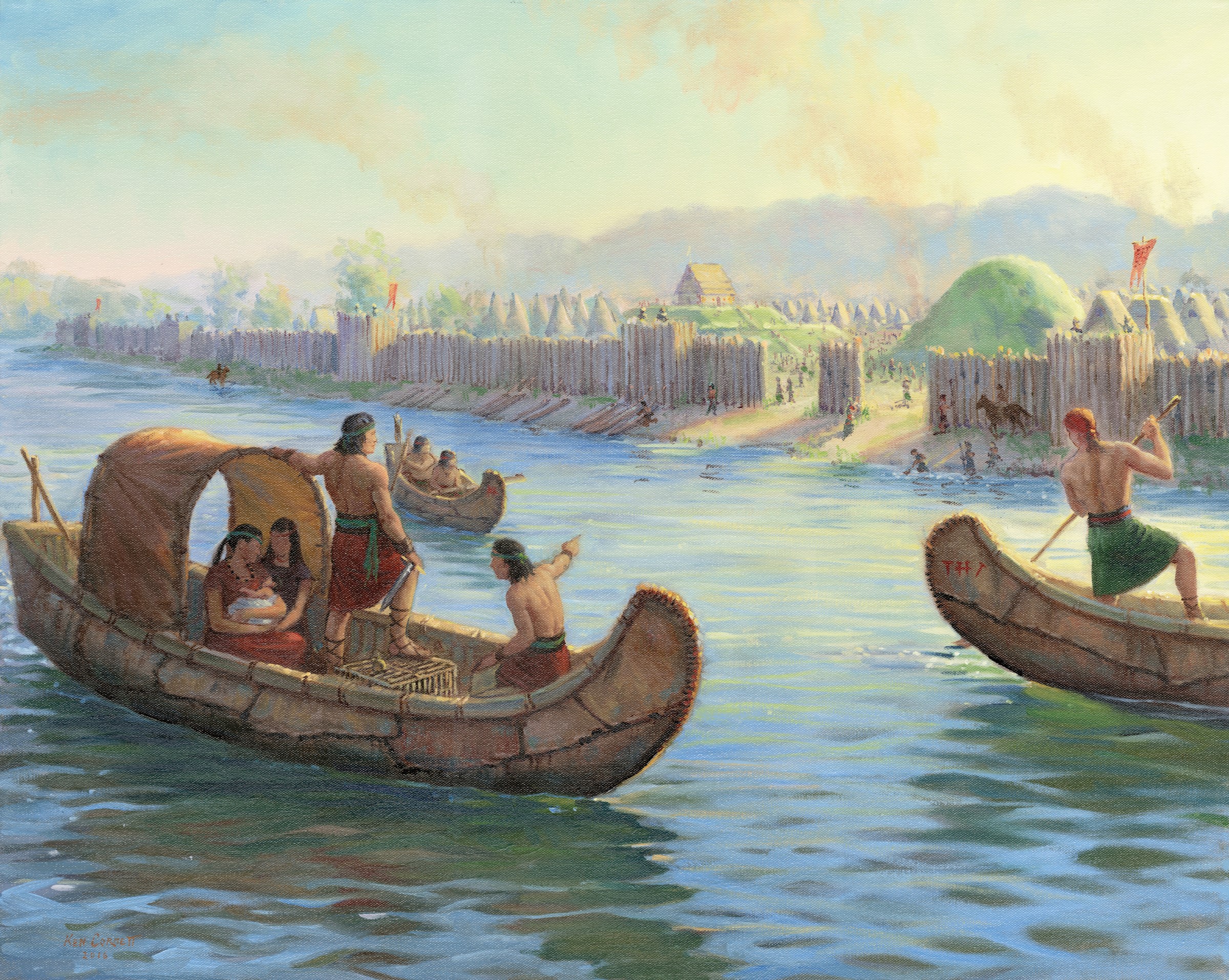
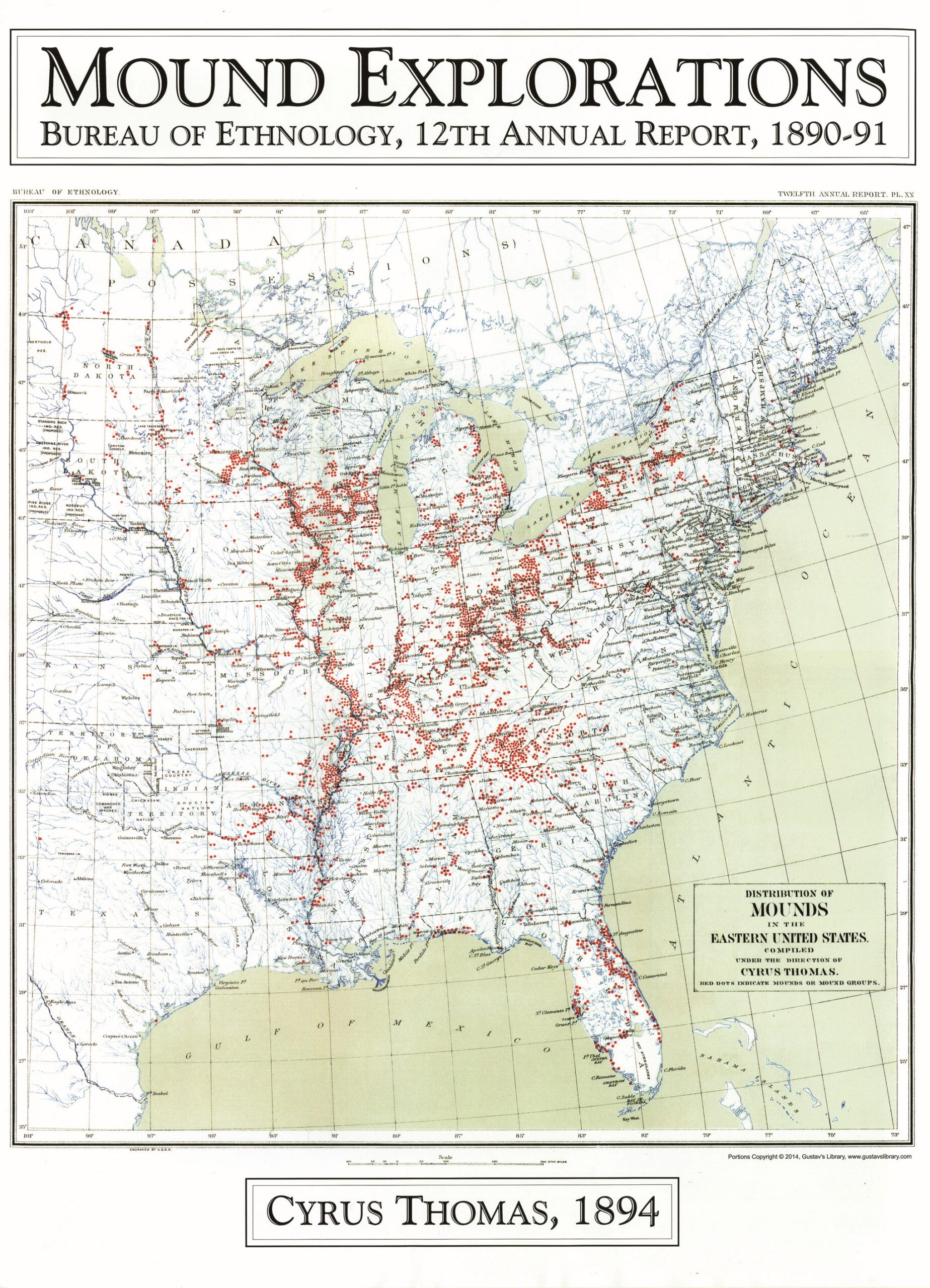
To help you understand how many mounds really did exist in North America, listen to what Dr. Gregory L. Little has said. “The most common question that is asked about mounds is, “How many exist?” In the 1800’s the Smithsonian sponsored many expeditions to identify mound sites across America. A map (shown below) was produced by Cyrus Thomas in 1894 in a Bureau of Ethnology book. They found approximately 100,000 mound sites, many with complexes containing 2 to 100 mounds. The figure of 100,000 mounds once existing— based on Cyrus Thomas map revealing 100,000 sites—is often cited by others, but that estimate is far, far too low. After visiting several thousand mounds and reviewing the literature, I am fairly certain that over 1,000,000 mounds once existed and that
perhaps 100,000 still exist. Oddly, some new mound sites are discovered each year by archaeological surveys in remote areas. But in truth, a large majority of America’s
mounds have been completely destroyed by farming, construction, looting, and deliberate total excavations” – Gregory L. Little, Ed.D., The Illustrated Encyclopedia of Native American Mounds & Earthworks, Eagle Wing Books, Inc., Memphis, TN [2009].
(We have taken the above map and laid on top of it the current Heartland Geography as we believe it to be. You will see an incredibly nice fit within all the red dots which constitute thousands of mound complexes.)
D&C 125:3 named the area in Iowa across from Nauvoo as “Zarahemla” and that location fits the proposed ancient Zarahemla when an abstract internal map based on the Book of Mormon text is overlaid on North America.
Despite all these links to North America, Arnold Friberg, who “established for Latter-day Saints what Book of Mormon people, landscapes, and events might have looked like,” 3 picked Central America–as have most artists who depict Book of Mormon events.
Why Central America?
As listed above, prior to 1842, there was a consistent record of Joseph Smith locating Book of Mormon peoples in North America. What caused the shift to Central America?
The Times and Seasons–the equivalent of today’s Ensign–reprinted the Bostonian articles mentioned in the opening paragraph. These articles prepared readers for three additional articles published in the September 15th and October 1st issues of the Times and Seasons that specifically linked Book of Mormon cities to Mesoamerica.
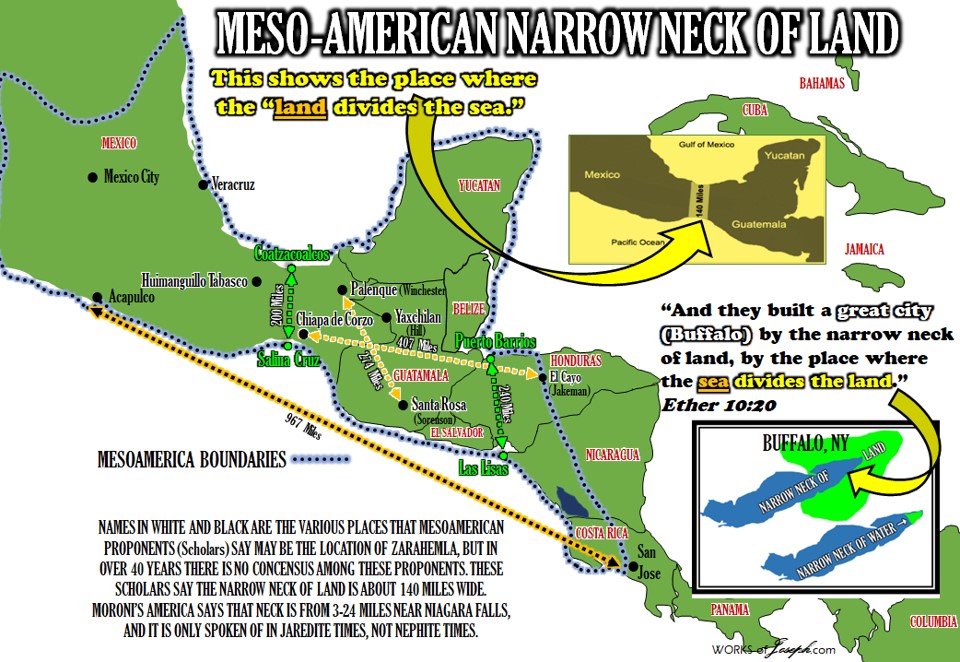 The first Mesoamerica article claims “these wonderful ruins of Palenque [Mexico] are among the mighty works of the Nephites,” and “the Nephites… lived about the narrow neck of land, which now embraces Central America.” A second article reads new material into the Book of Mormon text: “When we read in the Book of Mormon that… Lehi… crossed over to this land and landed a little south of the Isthmus of Darien…” The third outright states that “The city of Zarahemla… stood upon this land [referring to Central America or Guatemala]… It is certainly a good thing for the excellency and veracity, of the divine authenticity of the Book of Mormon, that the ruins of Zarahemla have been found where the Nephites left them.”
The first Mesoamerica article claims “these wonderful ruins of Palenque [Mexico] are among the mighty works of the Nephites,” and “the Nephites… lived about the narrow neck of land, which now embraces Central America.” A second article reads new material into the Book of Mormon text: “When we read in the Book of Mormon that… Lehi… crossed over to this land and landed a little south of the Isthmus of Darien…” The third outright states that “The city of Zarahemla… stood upon this land [referring to Central America or Guatemala]… It is certainly a good thing for the excellency and veracity, of the divine authenticity of the Book of Mormon, that the ruins of Zarahemla have been found where the Nephites left them.”
Joseph Smith was listed as the publisher and editor of the Times and Seasons when these articles were published. For that reason, even though the articles themselves are unsigned, many historians and scholars assumed that Joseph wrote, or edited–or at least approved of–these articles. No one knew for sure, but this assumption has become the prevailing view and is the underlying basis for the Mesoamerican theory.
Now, thanks to new Church history research, we know Joseph did NOT write these articles. The Smoking Gun of Book of Mormon geography is now revealed.
Smoking Gun(s)
The earliest case in the career of Sherlock Holmes (1880) was titled “The Adventure of the Gloria Scott.” In the story, a fake chaplain shot the captain of the ship–proven because “the chaplain stood with a smoking pistol in his hand“–the first “smoking gun.” Now the term “smoking gun” refers to a fact that provides conclusive evidence of a crime.
Writing the three “Mesoamerica” articles for the Times and Seasons was not a crime in the technical sense of the word. But the mystery about their authorship has endured for 173 years because the stakes involved are so high. What reader of the Book of Mormon has not wondered where the events took place? Millions of people–members, investigators, and critics, as well as the curious and studious–have read the Book of Mormon. Having an idea of the actual setting is important in order to understand the Book of Mormon people and their society–as well as to establish the historicity of the book. If Joseph Smith wrote the Mesoamerican articles, then those who sustain him as a Prophet generally feel compelled to accept the Mesoamerican setting. In fact, it was the presumption that Joseph wrote, or at least approved of, these articles that led Church members to formulate the limited geography of Mesoamerica as the setting for the Book of Mormon in the first place. LDS scholars have worked diligently to vindicate what they thought were Joseph’s teachings about Mesoamerica.
But if Joseph did not write these articles, then shouldn’t the other things he wrote about the North American setting take precedence?
This brings us back to the central question: is there solid evidence of authorship? Is there in fact, a smoking gun?
Modern proponents of the Mesoamerican theory have used stylometry–the statistical study of linguistic style, word usage, etc.–to demonstrate that Joseph Smith was the author. Stylometry can find a “smoking gun,” but only if the actual author is among the candidates tested.
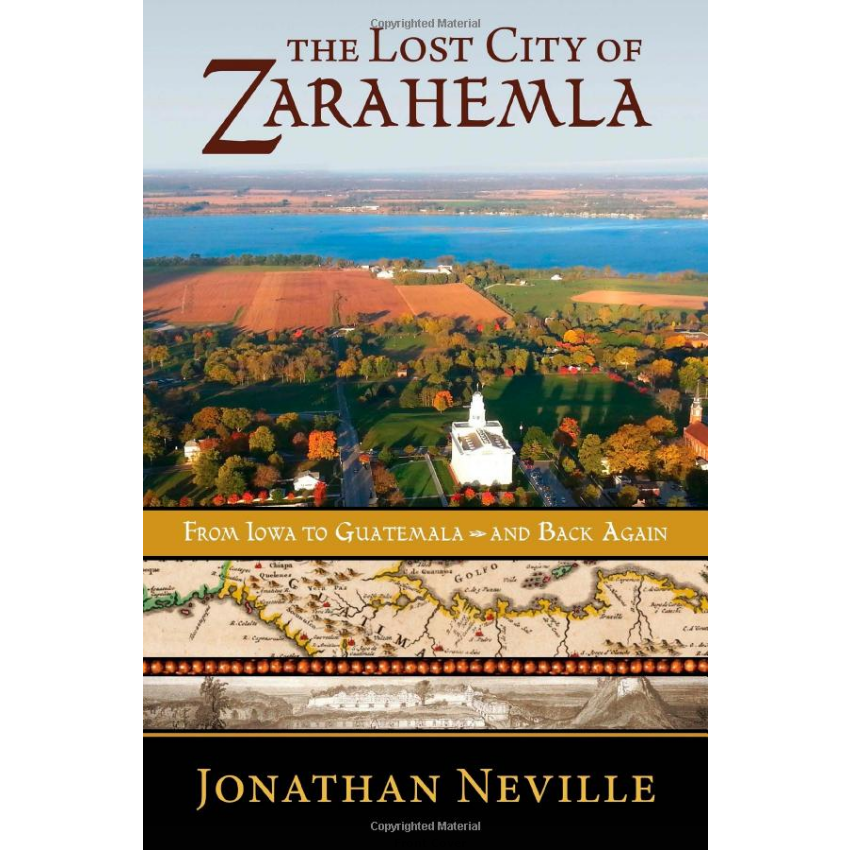
Two stylometry studies by LDS scholars have purported to prove Joseph was the author (or co-author) of the Times and Seasons articles. However, both studies limited their examination to only three possible authors: Joseph Smith, Wilford Woodruff, and John Taylor. Of the three, Joseph’s writing style was closest to the actual author’s, but not by much. The Mesoamerican articles were linguistic outliers. The results of the study showed it was unlikely that any of the three candidates they tested were the actual author. In fact, these studies essentially proved Joseph could not have been the author. (That analysis is too detailed for this article, but it is included in the book, “The Lost City of Zarahemla,” which discusses the historical facts in depth.)
So what went wrong? How and why did these scholars reach what seemed to be an incorrect result?
The scholars who wrote these stylometry studies are also proponents of the Mesoamerican theory. Perhaps there was an element of confirmation bias; i.e., because they believe the Book of Mormon took place in Mesoamerica, they believed Joseph was the author of these articles and when the results seemed to verify this, the analysis ended. But in fact, it was the articles in the Times and Seasons that led to the Mesoamerican theory in the first place! The stylometry studies did not solve the real mystery of who wrote the articles.
There are two key facts that have been overlooked regarding the authorship of the Mesoamerican articles. First, much of the material in the Times and Seasons consisted of reprints from other sources that were mailed to the newspaper. Some articles were even written under pseudonyms. Second, someone other than Joseph Smith was actually editing and publishing the Times and Seasons in August and September of 1842.
What no one noticed before now was a number of similarities between the Mesoamerican articles and the known writings of one Benjamin Winchester. Words, phrases, and concepts were common to both sets of documents–and unique to Winchester.
Winchester, in fact, was the Smoking Gun of Mesoamerican theory.
This realization led to further inquiry. Who exactly was Benjamin Winchester? Why did he write these articles? How did he get them published in the Times and Seasons? What did Joseph Smith think of them?
Benjamin Winchester
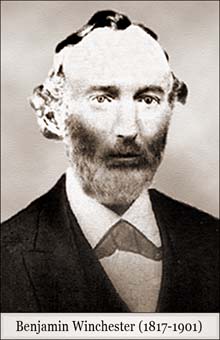 Although he is mostly forgotten now, Benjamin Winchester was well known in the early days of the Church. He had been the youngest adult (age 16) on Zion’s Camp in 1834. He had been ordained an Elder and a Seventy by the age of 20. He had been present when the original members of the Quorum of the Twelve were chosen and ordained. Along with them, he had received a blessing and a promise that he “shall push many people to Zion.” In fulfillment of that blessing, he became a zealous missionary–successful enough that the Times and Seasons published an account of his missionary work in its very first issue in 1839.
Although he is mostly forgotten now, Benjamin Winchester was well known in the early days of the Church. He had been the youngest adult (age 16) on Zion’s Camp in 1834. He had been ordained an Elder and a Seventy by the age of 20. He had been present when the original members of the Quorum of the Twelve were chosen and ordained. Along with them, he had received a blessing and a promise that he “shall push many people to Zion.” In fulfillment of that blessing, he became a zealous missionary–successful enough that the Times and Seasons published an account of his missionary work in its very first issue in 1839.
Winchester settled down in Philadelphia, where he became the Branch President Presiding Elder (equivalent to today’s Bishop). Frustrated with the anti-Mormon opposition and the inadequate success of the missionary work, he started his own newspaper, called The Gospel Reflector, to promulgate his ideas about Church doctrine and the Book of Mormon, he developed a “new course of argument” that he believed would persuade the world to read the Book of Mormon and join the Church. A thrilling book by John L. Stephens, titled Incidents of Travel in Central America, Chiapas and Yucatan, was riveting readers with descriptions of an expedition that uncovered mysterious, long-lost civilizations. Accompanied by detailed illustrations of exotic ruins, the book became a national best seller. Winchester had previously sought to popularize the Book of Mormon by linking it to other books about archaeology, but the Stephens book was more sensational.
John E. Page, an Apostle who visited Philadelphia and conducted missionary meetings with Winchester along with another Apostle, William Smith (the Prophet’s younger brother), liked Winchester’s ideas. He wrote a letter to Joseph Smith, explaining this “new course of argument” with great enthusiasm. He gave the letter to William to hand-deliver to his brother Joseph. Winchester traveled through New York on his way to Massachusetts. Shortly thereafter, a member of the Church in New York, Dr. John Bernhisel, bought a copy of the Stephens book and sent it to Joseph Smith in Nauvoo. Winchester abandoned his mission and hastily relocated to Nauvoo, where he secured a job at the Times and Seasons following the death of Don Carlos Smith, another of Joseph’s brothers. He managed to reprint many of his Gospel Reflector articles in the Times and Seasons but the Quorum of the Twelve suspended him before he could reprint his Mesoamerica promoting articles, which were first published in the Gospel Reflector back in March 1841.
Later in May of 1842, Brigham Young formally silenced Winchester, printing a notice in the Times and Seasons so Mormons everywhere would see it. But Winchester remained convinced that his new course of argument would dramatically improve missionary work. His overriding motivation was missionary zeal. He was well intentioned, but he disregarded the counsel of his leaders, a problem Joseph Smith himself explained several times to Winchester personally. Joseph once told John Taylor, “You can never make anything out of Benjamin Winchester if you take him out of the channel he wants to be in… he can write for thousands to read while he can preach to but few.” And Winchester did not want to be out of the channel of proving the Book of Mormon with archaeological evidence from Mesoamerica.
But how could Winchester accomplish his goal when he was living in Philadelphia, especially after the Quorum of the Twelve had suspended him from the Times and Seasons and publicly silenced him? Was someone in Nauvoo working with him? Did he have an accomplice?
The first paragraph of this article mentioned a pseudonymous article published in a Boston newspaper. There were actually four such articles written, two by an author using the fake name “Q” and two by another named “A Lover of Truth.” The articles purported to be written by non-Mormons who were inordinately impressed with the Mormon preachers in Boston–including the link between the Book of Mormon and archaeological discoveries. The Times and Seasons reprinted these articles in July, August and September 1842.
There was no explanation in Church history regarding the authorship of these articles, but there was something suspicious about them. Winchester had been present at the Boston meetings, but he was not mentioned in the articles. A closer look at the linguistic style of the articles revealed another smoking gun: clearly, Winchester was “Q.” Why would he write under a pseudonym?
The answer was easy. He had to.
Winchester was posing as a non-Mormon. Plus, he needed to avoid attention from Joseph Smith and Brigham Young, who had previously reprimanded him so many times.
But who was “A Lover of Truth?” The writing style excluded Winchester. A series of investigatory breakthroughs uncovered yet another smoking gun. A Lover of Truth was a friend of Winchester’s.
Still, it seemed improbable that Joseph Smith, John Taylor, or Wilford Woodruff would have published articles from pseudonymous authors. Such an author could have been an enemy of the church, writing falsehoods to fool the saints and then discredit the Times and Seasons. Someone had to know the true identity of “Q” and “A Lover of Truth,” but who?
There was only one person in Nauvoo who knew their identity: William Smith, the brother of Joseph. William was the editor and publisher of The Wasp, another Nauvoo newspaper, but what did he have to do with the Times and Seasons? No account of Church history mentions William Smith in connection with the Times and Seasons. In fact, as the stylometry articles mentioned above showed, William was never even considered as having had anything to do with the Times and Seasons.
What everyone seemed to have forgotten is that William was publishing and editing The Wasp from the same printing shop using the same printing press as the Times as Seasons. In fact, there is abundant evidence that William was the acting editor of the Times and Seasons during August and September 1842. This is an astonishing discovery–yet another smoking gun–but it makes sense in the context of the other facts of this case. It was William who had hand-carried the letter from John E. Page to Joseph Smith that described the “new course of argument” Winchester developed. William had reprinted Winchester’s pseudonymous articles from the Bostonian. Therefore, it was William who published Winchester’s unsigned articles about Mesoamerica in the Times and Seasons.
But why would William participate in a scheme to link the Book of Mormon to Mesoamerica, especially if it contradicted Joseph’s own teachings? For one thing, William had a long history of confrontations with his brother Joseph. Shortly after Joseph’s assassination, William apostatized and became President of the Quorum of the Twelve Apostles under James Strang. In that position, he continued to promote the Mesoamerican theory of Book of Mormon geography.
So William Smith was Winchester’s Nauvoo insider and accomplice.
Joseph not only didn’t write the Mesoamerican articles, he didn’t edit, publish or even approve them. For several reasons (which are discussed in detail in the book), he couldn’t simply retract the articles. But he took action to mitigate their impact and prevent their recurrence. Within days of the unauthorized release of the three Mesoamerican articles in the fall of 1842, Joseph fired William from The Wasp, had Winchester removed as Branch President in Philadelphia, and resigned as Editor of the Times and Seasons himself.
The Legacy
The conspiracy fomented by Benjamin Winchester and William Smith is not merely an interesting and previously unknown aspect of Church history. George J. Adams, a close associate of Joseph’s, wrote that shortly before their martyrdom, “Joseph and Hyrum said that Winchester was rotten at heart, would apostatize, and injure the church as much as he could.” But as noted at the outset, Winchester has been largely forgotten. Few people other than serious students of Church history have ever heard of him. Has Joseph’s prophecy been fulfilled? Has Winchester injured the church?
The answer comes back to Winchester’s three Mesoamerican articles in the Times and Seasons. Certainly they have had a major influence on the Church through Mesoamerican Book of Mormon theories ever since.
For 173 years, faithful Mormons have been searching in Mesoamerica for evidences of the Book of Mormon. Scientific expeditions have been conducted. Books have been published, films produced, tours undertaken, and artwork and photos created and displayed, not only in chapels and temples but in the pages of the Book of Mormon itself. And yet, after all this time, energy and expense, not a single piece of evidence of the Book of Mormon civilizations has been discovered in Mesoamerica. At best, scholars find parallels and similarities. They’ve made an honest and sincere–but terribly costly–mistake.
All because of one Benjamin Winchester.
The Problem with Mesoamerica
The underlying premise of the Mesoamerican geography is that there are problems with the text as translated by Joseph Smith.
As an example, Mesoamerica has an east/west orientation. To the north is the Gulf of Mexico. To the south is the Pacific. However, the Book of Mormon speaks of the land northward and the land southward, not the land east and west. For Mesoamerica to qualify as the setting for the Book of Mormon, proponents must redefine the term “north” as used in the Book of Mormon (“Nephite north”), claiming it cannot be the same as the direction we call “north” today.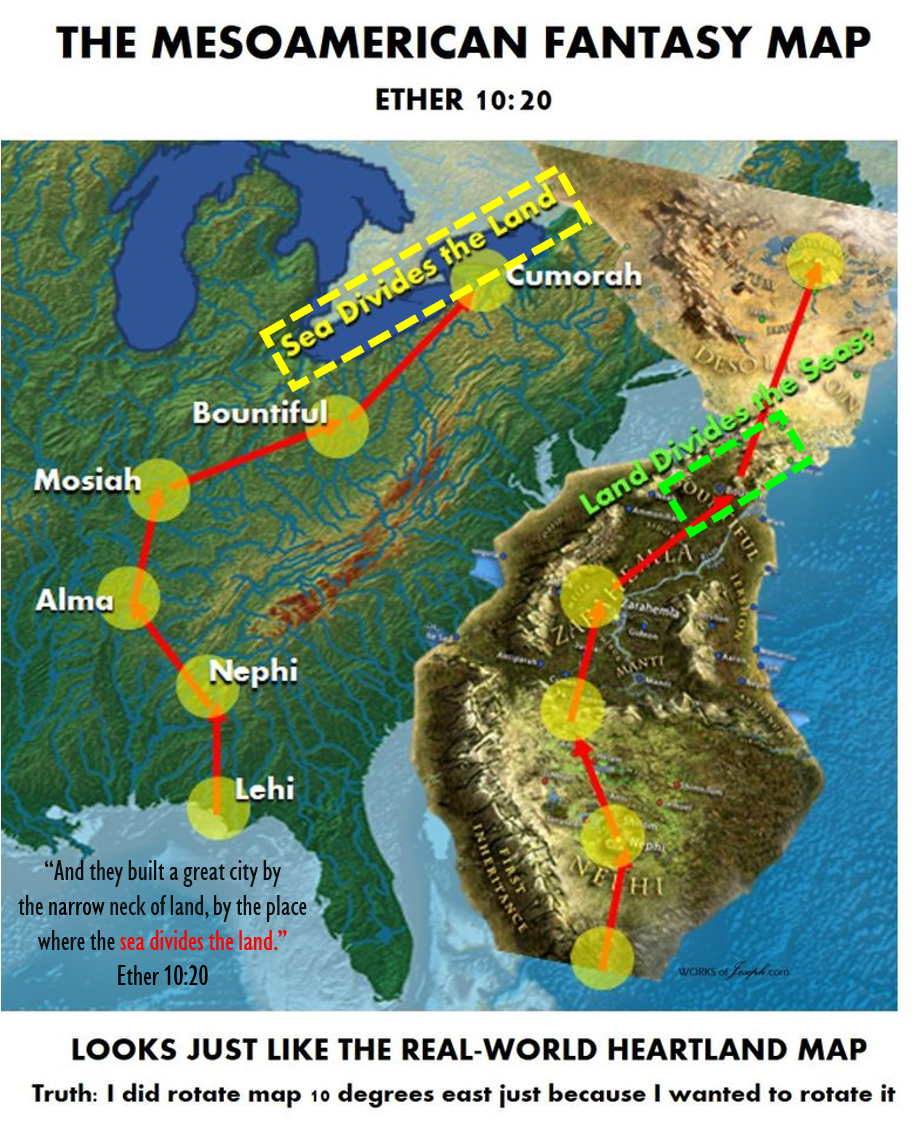
This has led one faithful LDS scholar to make the following statement:
“The Book of Mormon is the translation of a document from a culture with which Joseph Smith was not familiar. We have evidence that Joseph dictated ‘north.’ What we do not have evidence of is what the text on the plates said.” 4
This scholar doesn’t think Joseph’s translation is evidence of what was on the plates. It is difficult to conceive of an argument that undermines the Book of Mormon more than this. If Joseph couldn’t correctly or accurately translate a concept as basic as a cardinal direction, what basis is there for believing he could translate anything correctly or accurately? Joseph reviewed the Book of Mormon several times to make sure the translation was correct. If, as this quotation demonstrates, Mesoamerican proponents must cast doubt on the validity of Joseph’s translation to place the Book of Mormon in Mesoamerica, the Mesoamerican theory sows confusion and misdirection.
Another prominent and faithful LDS scholar has defended his Mesoamerican geography in a series of books on the topic. Here are some of his conclusions.
“There remain Latter-day Saints who insist that the final destruction of the Nephites took place in New York, but any such idea is manifestly absurd. Hundreds of thousands of Nephites traipsing across the Mississippi Valley to New York, pursued (why?) by hundreds of thousands of Lamanites, is a scenario worthy only of a witless sci-fi movie, not of history.” 5
“Joseph Smith became convinced in the last years of his life that the lands of the Nephites were in Mesoamerica.” 6
“The prospect that any other part of America than Mesoamerica was the scene of Book of Mormon events is so slight that only this obvious candidate area will be considered here.” 7
This “sci-fi” take on Joseph’s comments during Zion’s camp may be understandable if one believes that Joseph wrote the Times and Seasons articles, but now that we know he did not, what justification can there be for ridiculing a North American setting? The second quotation expresses a common belief among Mesoamerican advocates that Joseph’s views changed over the years, but what evidence is there of that, apart from Winchester’s articles? Once we recognize that Winchester, the Smoking Gun of Book of Mormon geography research, wrote these articles and that William Smith published them, everything that Joseph wrote or taught is consistent with a North American setting for the Book of Mormon.
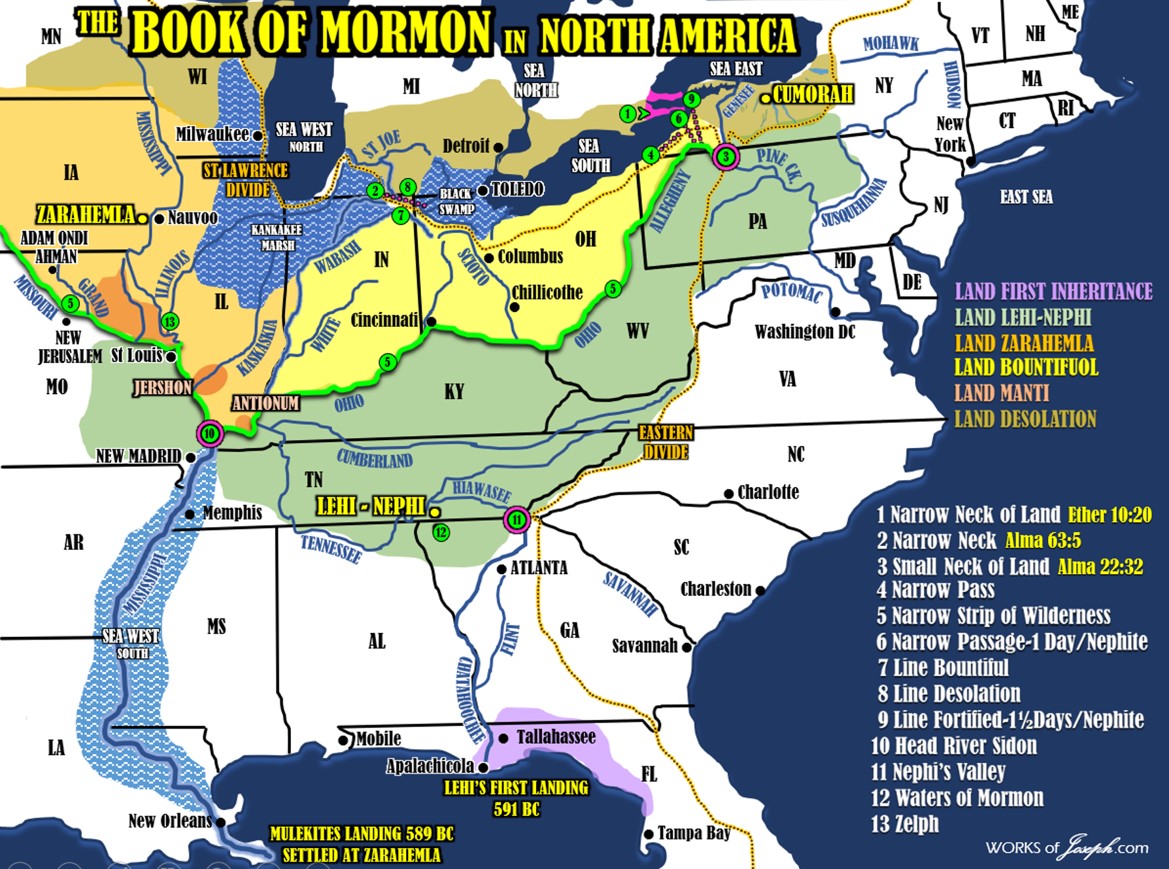
The third quotation from this scholar shows that he didn’t even consider a site outside of Mesoamerica, presumably because of the Winchester articles. Hopefully he, and those who have collaborated with him, will now recognize that the foundations for the Mesoamerican theories have collapsed, leaving behind nothing but swirling dust and the smoke curling out of the smoking gun that is Benjamin Winchester’s.
Why Zarahemla?
It has long been somewhat curious that the final Mesoamerican Times and Seasons article focused on Zarahemla. Why Zarahemla? Why didn’t Winchester write about the city of Bountiful, or the city of Nephi or some other Book of Mormon location?
The site across the Mississippi River from Nauvoo had been named Zarahemla by the Lord in D&C 125:3. Some authors have stated, incorrectly, that the site was referred to as Zarahemla prior to this revelation, but the historical record shows this is not the case. The saints’ use of the term Zarahemla for the land across the river from Nauvoo followed the revelation.
The Times and Seasons published only one description of the development activity in Zarahemla, Iowa. The author stood by the temple and looked across the river, writing “The Temple also commands a fine view of Zarahemla, and the beautiful prairie that stretches along, at its wonted distance from the river for several miles. Several buildings are in progress in Zarahemla.“
As you may already have guessed, the author of that article was Benjamin Winchester.
Winchester first formulated his Mesoamerican theory in March 1841–the same month that, 850 miles away in Nauvoo, Joseph Smith had received the revelation now known as D&C 125. Was the Lord preparing Joseph for what Winchester would eventually propose? Was it Winchester’s missionary zeal that led him to link the Book of Mormon to a best-selling book about Mesoamerica? Did this theory of Winchester’s ultimately injure the Church as Joseph predicted?
Everyone can assess the evidence and decide, but in the end, best-selling books and public fascination do not have enduring value. Only the truth does.
Notes:
- Vern G. Swanson, “The Book of Mormon Art of Arnold Friberg, ‘Painter of Scripture’” Journal of Book of Mormon Studies 10/1 (Neal A. Maxwell Institute for Religious Scholarship, Brigham Young University, Provo, Utah 2001): 26-35, 33. ↩
- Joseph Smith, “Mormonism,” The American Revivalist and Rochester Observer 7/6 (February 2, 1833). Only the last two paragraphs of Joseph’s letter to the newspaper were printed. The entire letter appeared eleven years later in the November 15, 18. issue of the Times and Seasons. ↩
- Vern G. Swanson, “The Book of Mormon Art of Arnold Friberg, ‘Painter of Scripture, Journal of Book of Mormon Studies 10/1 (Neal A. Maxwell Institute for Religious Scholarship, Brigham Young University, Provo, Utah 2001): 26-35, 33. ↩
- Brant A. Gardner, ‘An Exploration in Critical Methodology: Critiquing a Critique,” FARMS Review 16/2 (Neal A Maxwell Institute for Religious Scholarship, Brigham Young University, Provo, Utah, 2004): 173-223, p. 218 ↩
- John L.Sorenson, Mormon’s Codex (The Neal A Maxwell Institute for Religious Scholarship and Deseret Book, Salt Lake City, Utah, 2013), p. 688. ↩
- Ibid, p. 694. ↩
- John L. Sorenson, The Geography of Book of Mormon Events: A Source Book (The Foundation for Ancient Research and Mormon Studies, Provo, Utah 1992): 407. ↩
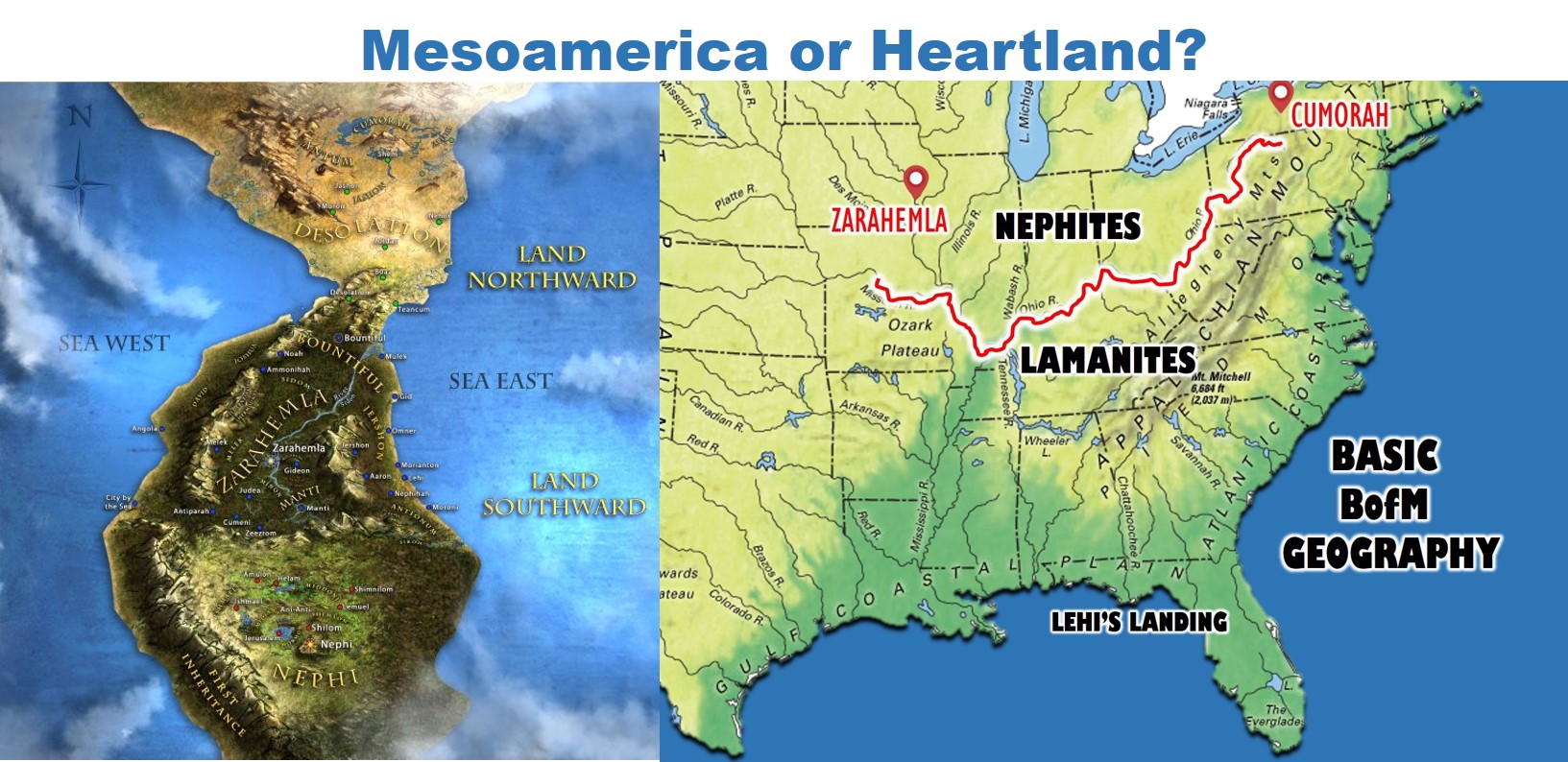
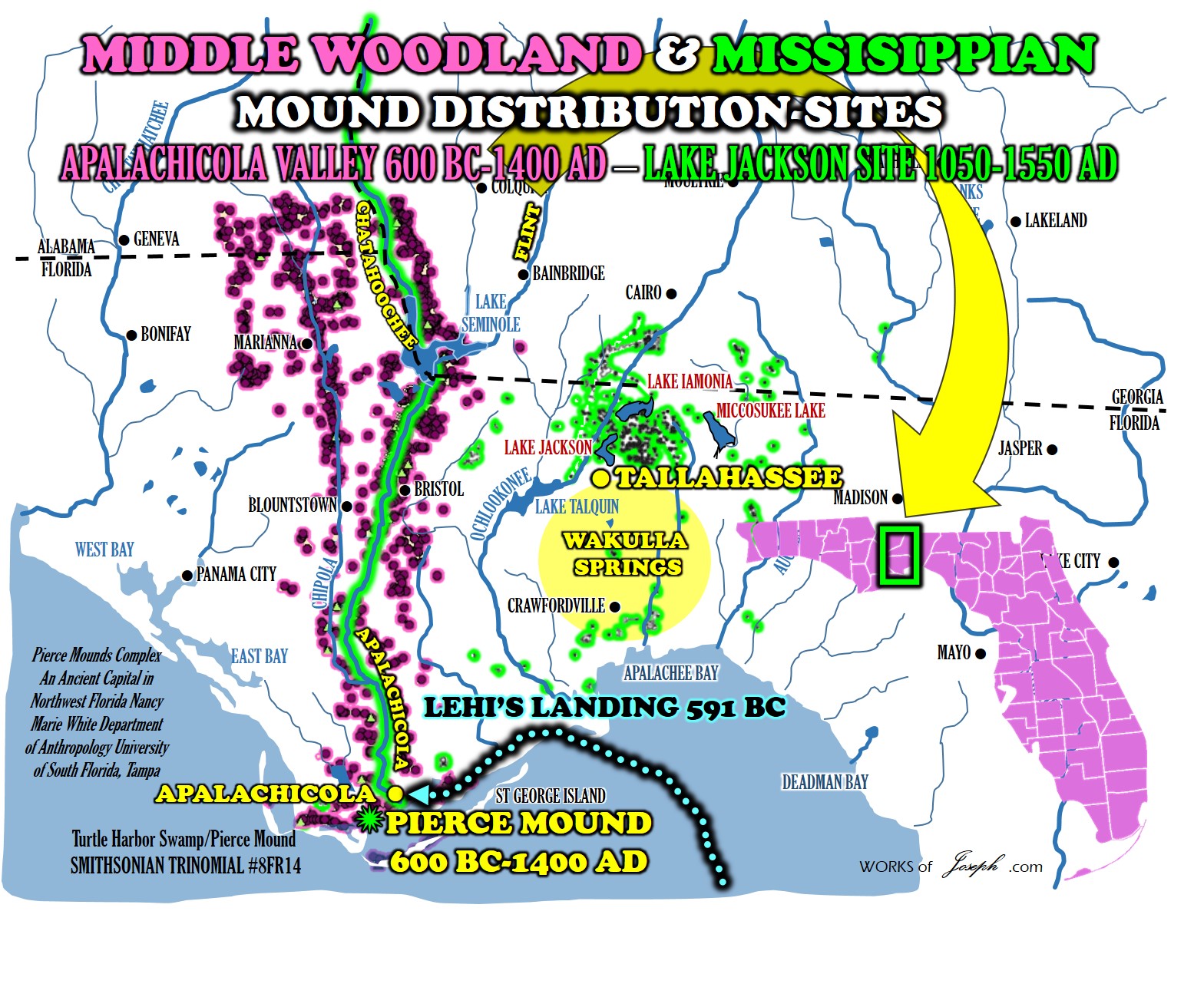
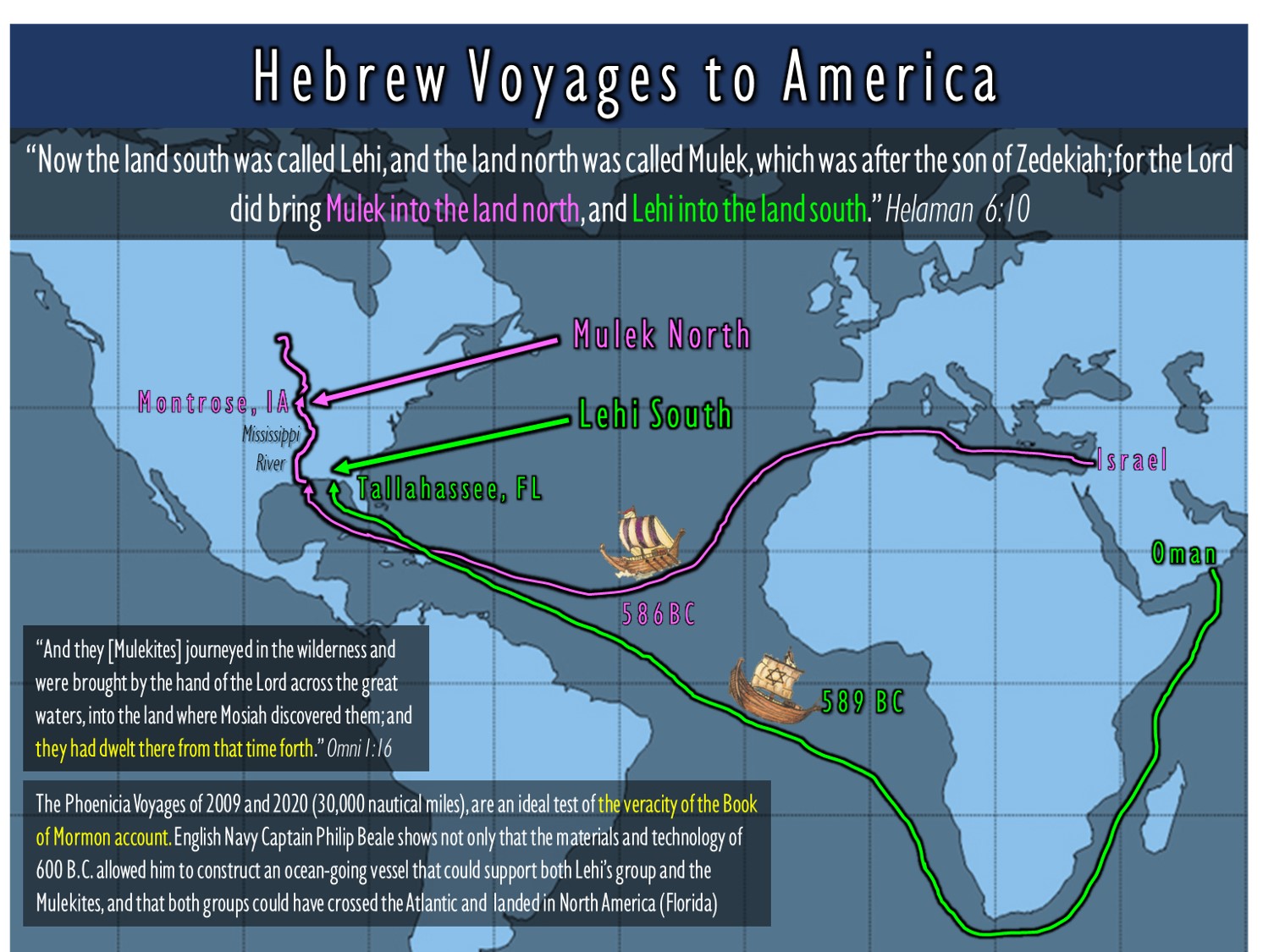 Thesis: The Mulekites c. 589 BC may have landed at the Gulf of America by the Mississippi River, and continued up the Mississippi and settled upriver at Montrose, IA or Zarahemla. (D&C 125:3) The Mulekites had always remained at their first location when Mosiah found them. Omni 1:16 “And they journeyed in the wilderness and were brought by the hand of the Lord across the great waters, into the land where Mosiah discovered them; and they had dwelt there from that time forth.” The Lehi Landing c. 591 BC or the Land of First Inheritance was possibly near Tallahassee Florida. Nephi could then travel up the Chattahoochee River to its source at Unicoi Gap, GA. The source of the Hiwassee River could then take the Nephites where the first temple may have been built in Chattanooga, TN.
Thesis: The Mulekites c. 589 BC may have landed at the Gulf of America by the Mississippi River, and continued up the Mississippi and settled upriver at Montrose, IA or Zarahemla. (D&C 125:3) The Mulekites had always remained at their first location when Mosiah found them. Omni 1:16 “And they journeyed in the wilderness and were brought by the hand of the Lord across the great waters, into the land where Mosiah discovered them; and they had dwelt there from that time forth.” The Lehi Landing c. 591 BC or the Land of First Inheritance was possibly near Tallahassee Florida. Nephi could then travel up the Chattahoochee River to its source at Unicoi Gap, GA. The source of the Hiwassee River could then take the Nephites where the first temple may have been built in Chattanooga, TN.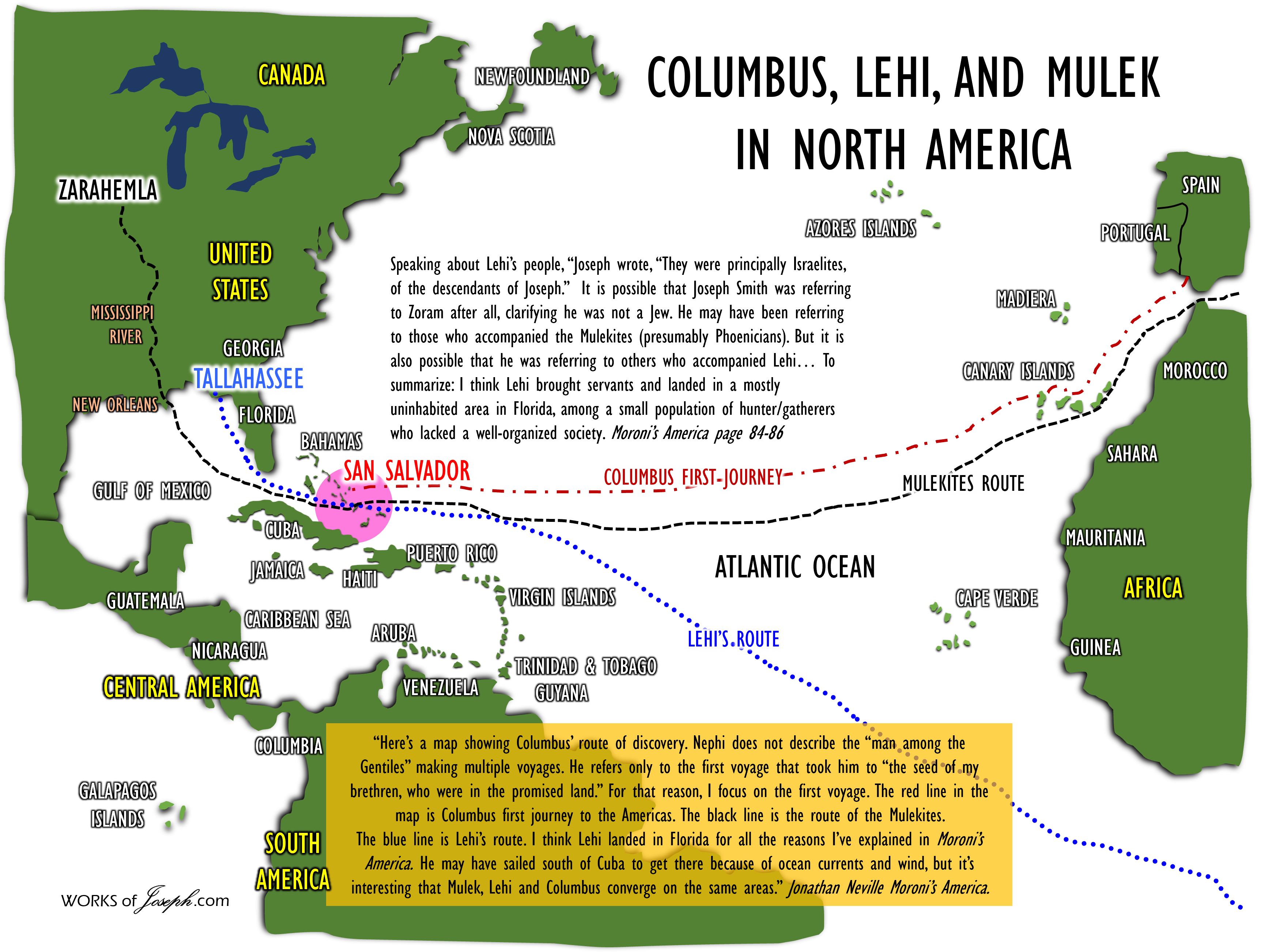

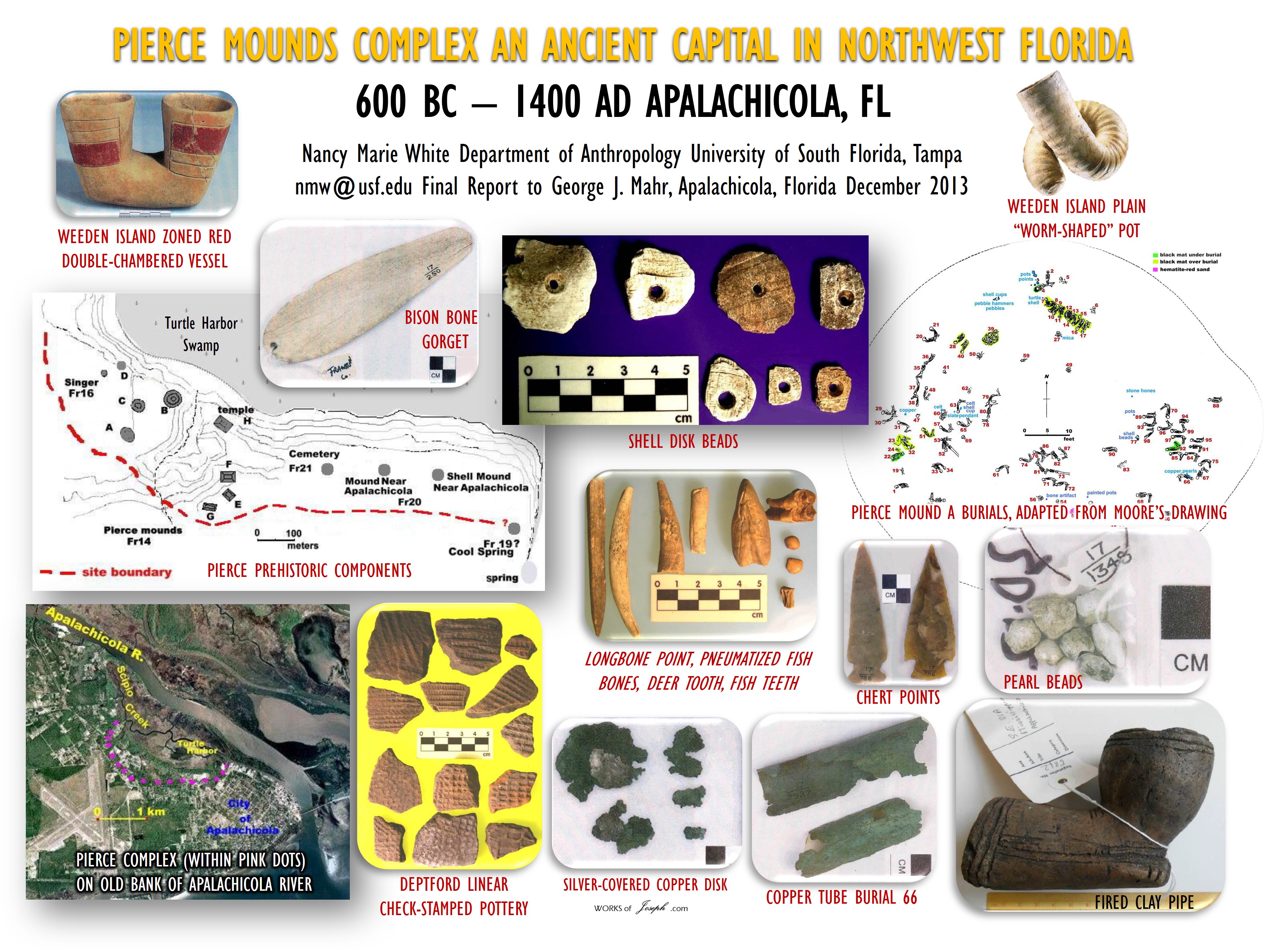
 PIERCE MOUND A (8FR14A) Location and Description The most spectacular mound at Pierce has been Mound A, mostly because Moore (1902:217-228) dug it thoroughly and recovered 99 burials and exotic and elaborate grave goods. He devoted the most pages to its description and clearly stated that it was the southwesternmost mound in the group, so it is unknown why later researchers thought it was one of the other mounds. Moore’s original field notes locate Mound A at the “edge of scrub” and say “to E & W md extends in sort of roadway,” a setting much changed, as it was recently in heavy forest and then cleared, with little evidence of a roadway. Moore said it was 8 feet high, 96 feet east-west and 76 feet north-south, implying an oval, which is indeed its shape in the unpublished notes. He referred to the “summit plateau” as 40 x 34 feet but much broadened “to prepare for interments made in recent times “– a statement with no explanation. It is hard to believe he would be allowed to dig in a cemetery with recent graves.”
PIERCE MOUND A (8FR14A) Location and Description The most spectacular mound at Pierce has been Mound A, mostly because Moore (1902:217-228) dug it thoroughly and recovered 99 burials and exotic and elaborate grave goods. He devoted the most pages to its description and clearly stated that it was the southwesternmost mound in the group, so it is unknown why later researchers thought it was one of the other mounds. Moore’s original field notes locate Mound A at the “edge of scrub” and say “to E & W md extends in sort of roadway,” a setting much changed, as it was recently in heavy forest and then cleared, with little evidence of a roadway. Moore said it was 8 feet high, 96 feet east-west and 76 feet north-south, implying an oval, which is indeed its shape in the unpublished notes. He referred to the “summit plateau” as 40 x 34 feet but much broadened “to prepare for interments made in recent times “– a statement with no explanation. It is hard to believe he would be allowed to dig in a cemetery with recent graves.” Fine Tupelo is more expensive because it cost more to produce this excellent specialty honey. To gain access to the river locations where the honey is produced requires expensive labor and equipment. In order to get fine, unmixed Tupelo honey, colonies must be stripped of all stores just as the white Tupelo bloom begins. The bees must have clean combs in which to place the Tupelo honey. Then the new crop must be removed before it can be mixed with additional honey sources. The timing of these operations are critical and years of experience are needed to produce a fine product that will certify as Tupelo honey.
Fine Tupelo is more expensive because it cost more to produce this excellent specialty honey. To gain access to the river locations where the honey is produced requires expensive labor and equipment. In order to get fine, unmixed Tupelo honey, colonies must be stripped of all stores just as the white Tupelo bloom begins. The bees must have clean combs in which to place the Tupelo honey. Then the new crop must be removed before it can be mixed with additional honey sources. The timing of these operations are critical and years of experience are needed to produce a fine product that will certify as Tupelo honey.
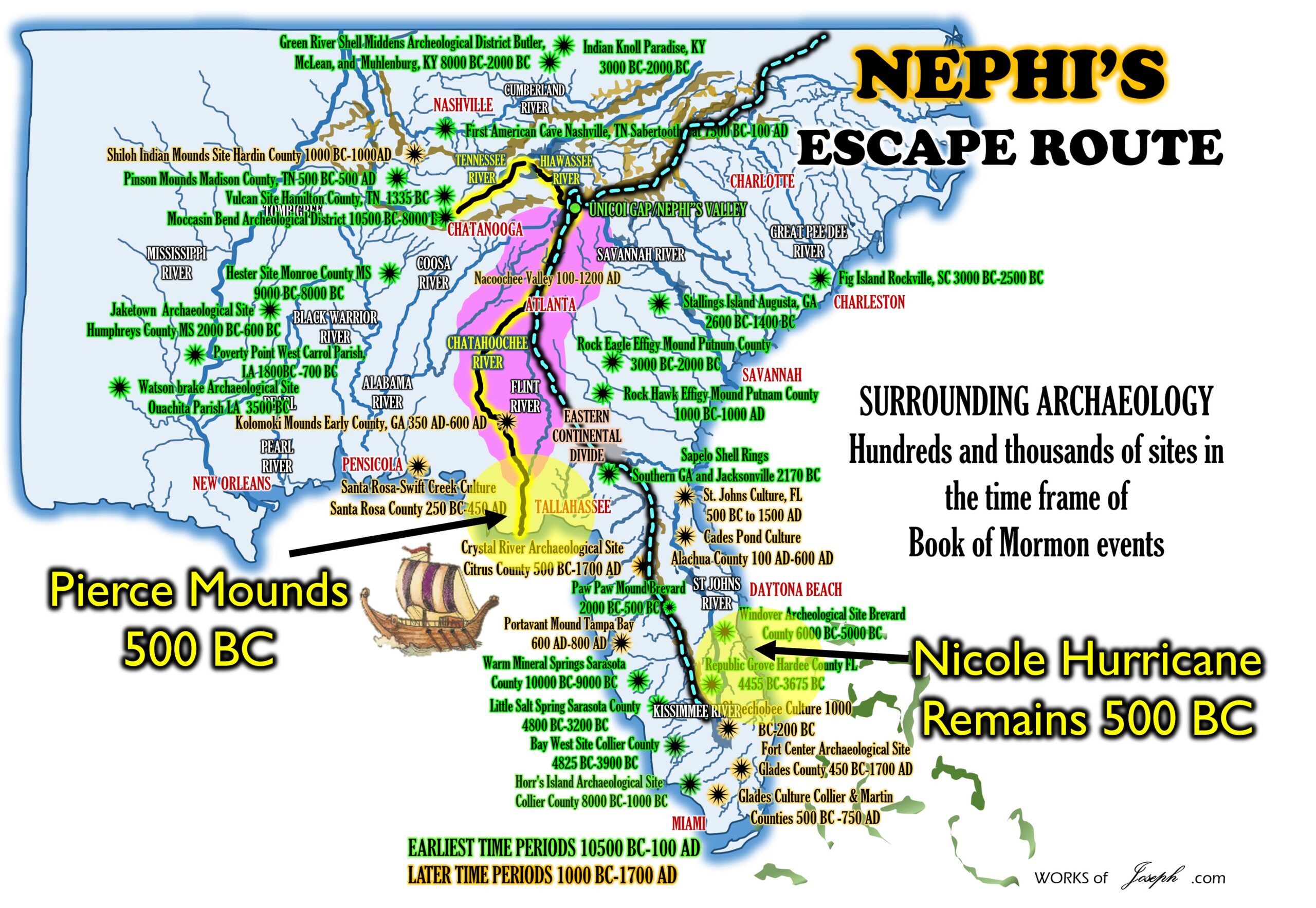 Summary:
Summary: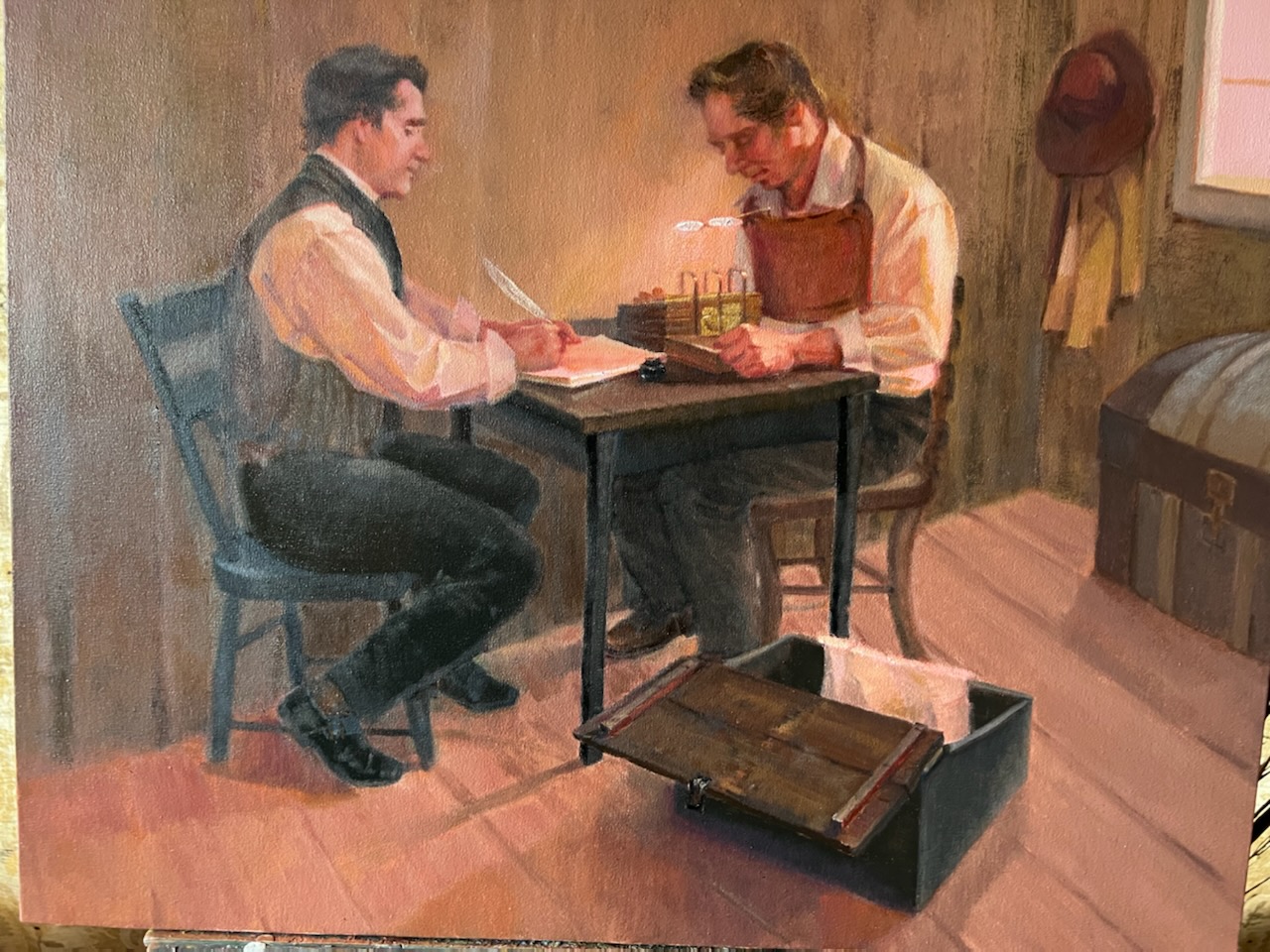
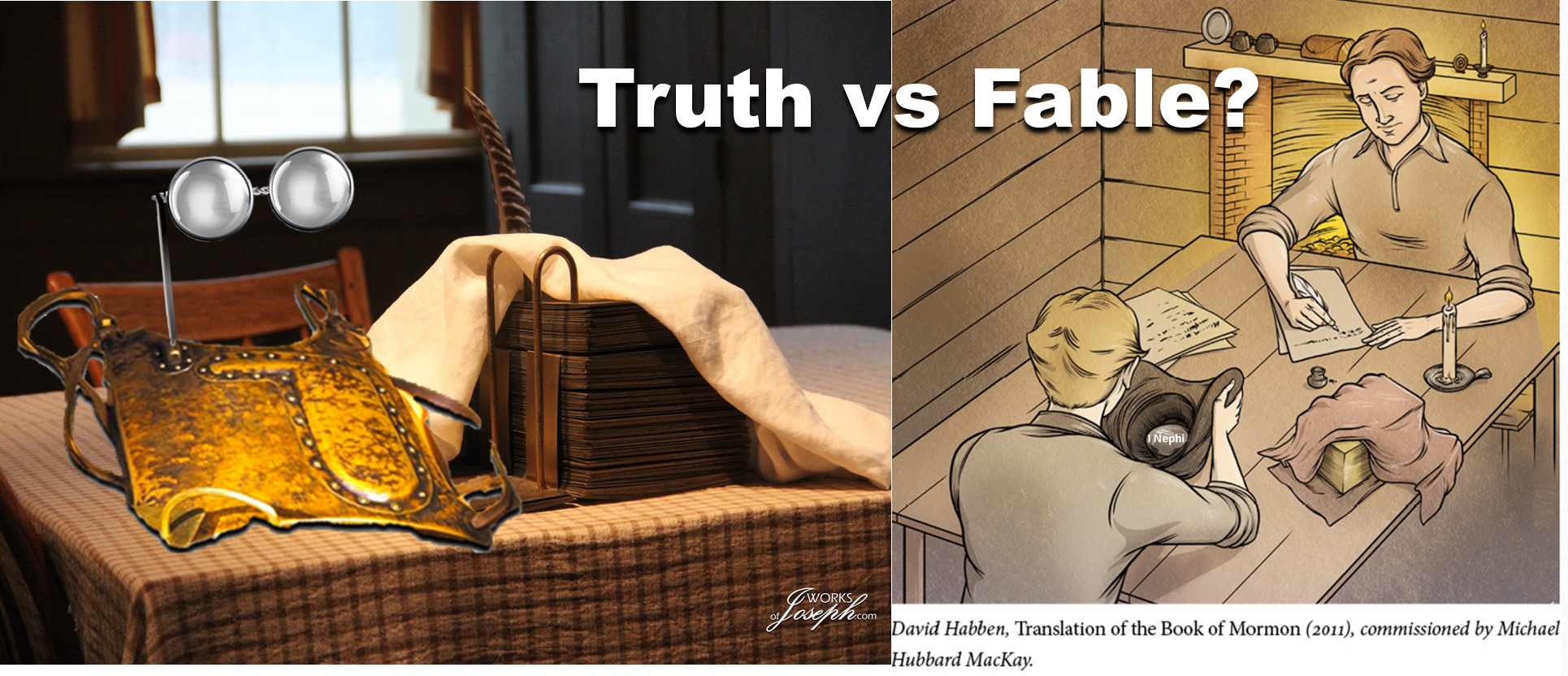 1- Historical Prattle–
1- Historical Prattle–
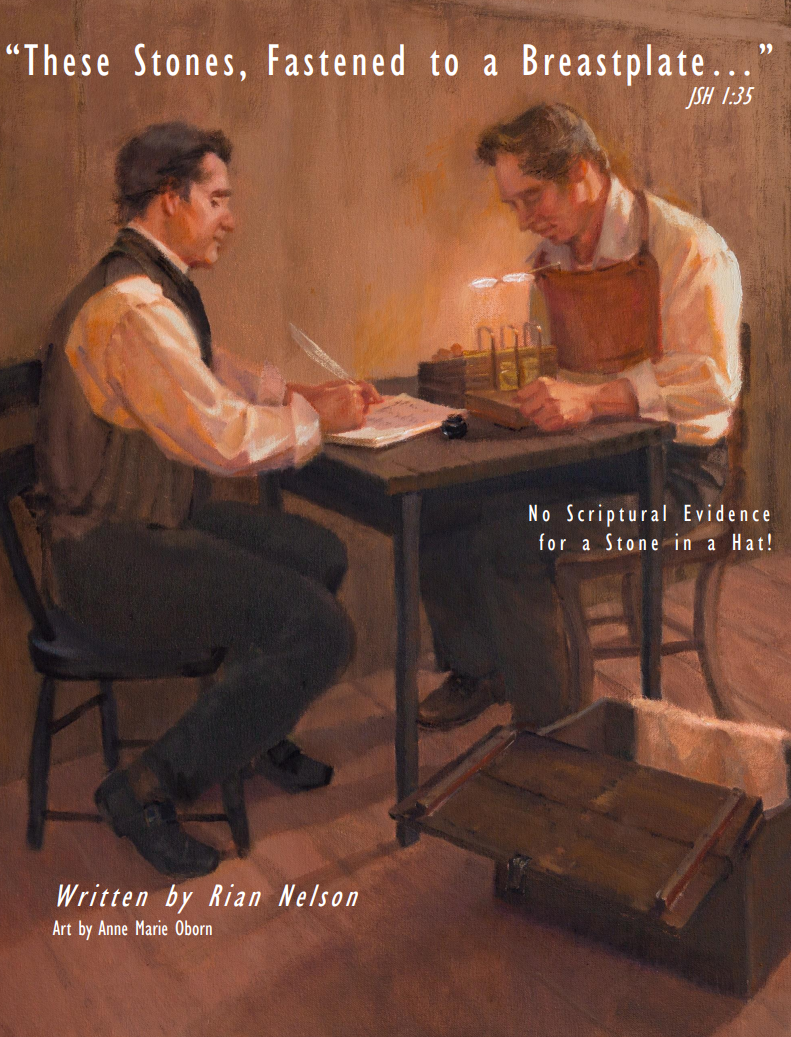

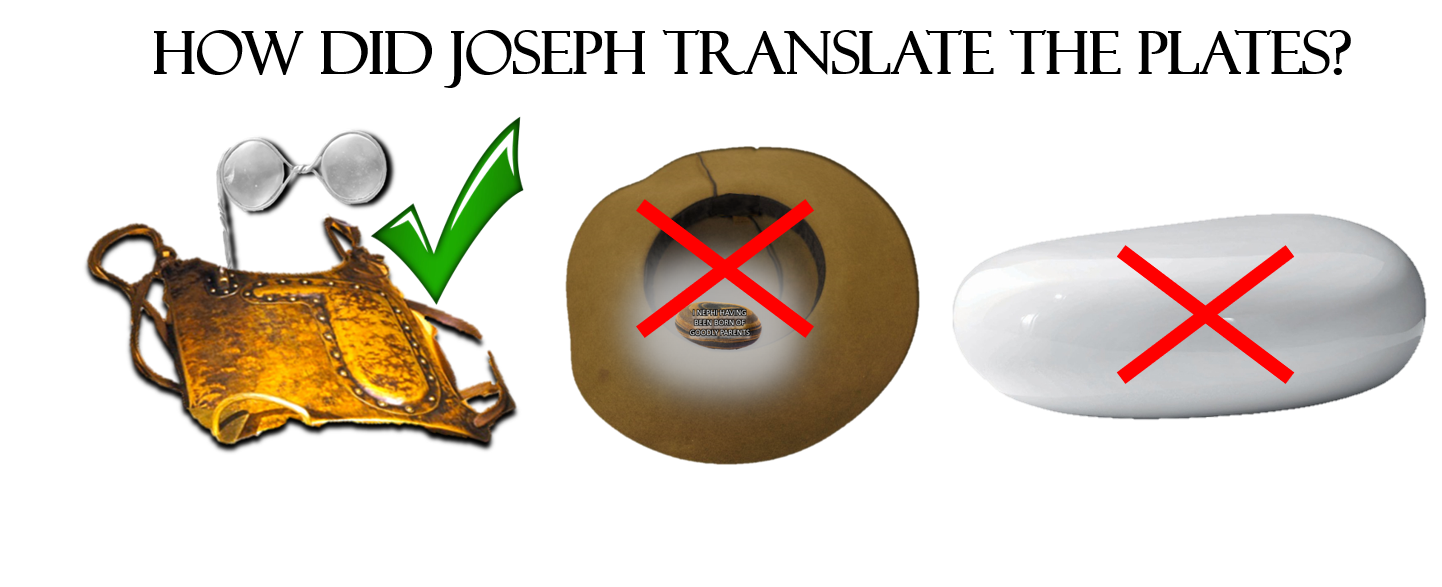 Question: Why was Joseph Smith so reluctant to disclose details relative to the process of translation?
Question: Why was Joseph Smith so reluctant to disclose details relative to the process of translation? “A few days after these men appeared again, a few of us went to see them and Cowdery was requested to state how the plates were found, which he did. He stated that Smith looked onto or through the transparent stones to translate what was on the plates. I then asked him if he had ever looked through the stones to see what he could see in them; his reply was that he was not permitted to look into them. I asked him who debarred him from looking into them; he remained sometime in silence, then said that he had so much confidence in his friend Smith, who told him that
“A few days after these men appeared again, a few of us went to see them and Cowdery was requested to state how the plates were found, which he did. He stated that Smith looked onto or through the transparent stones to translate what was on the plates. I then asked him if he had ever looked through the stones to see what he could see in them; his reply was that he was not permitted to look into them. I asked him who debarred him from looking into them; he remained sometime in silence, then said that he had so much confidence in his friend Smith, who told him that 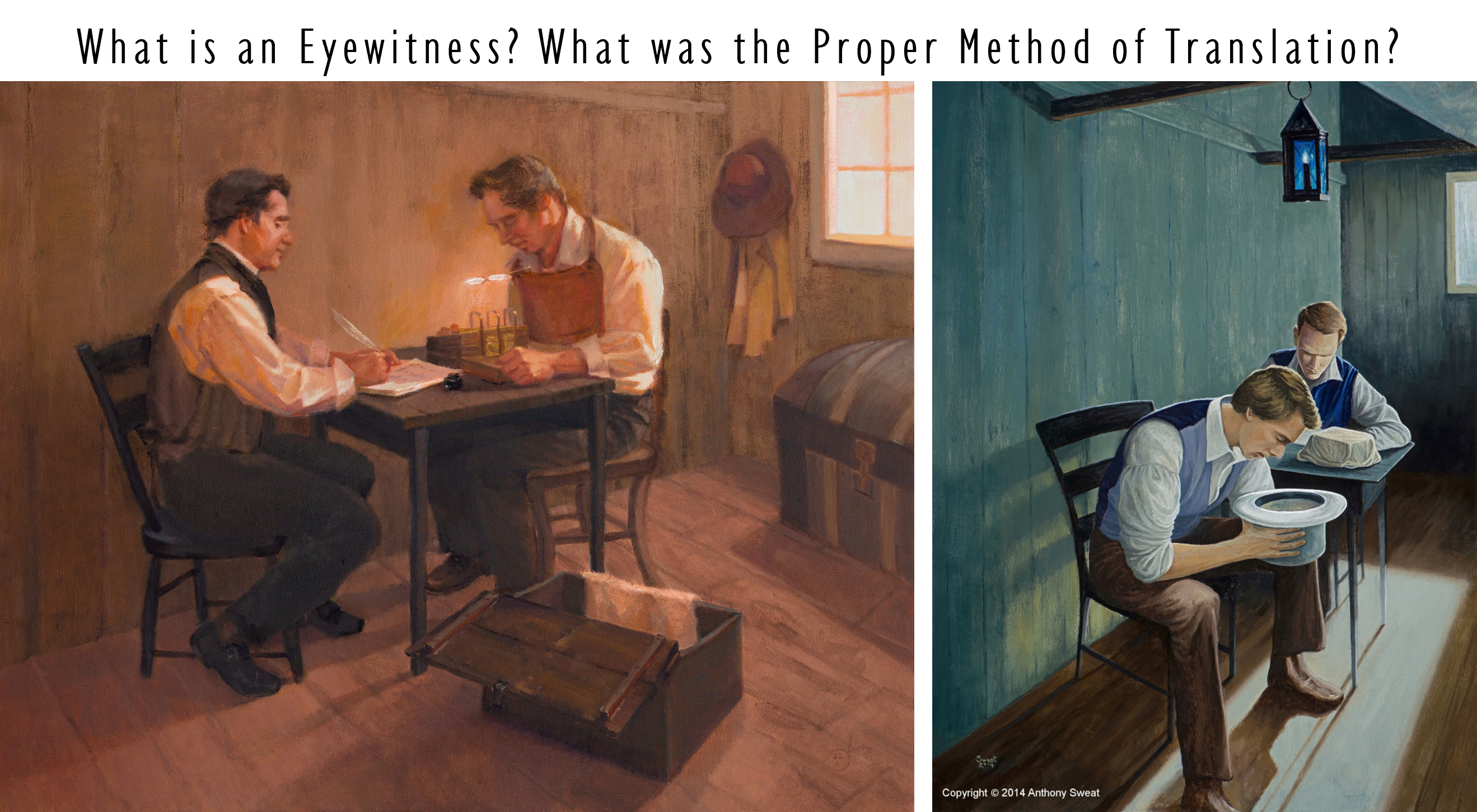 Oliver was twice cautioned not to trifle with sacred things, having reference to the seeric aids that would be used in translation. “Do not ask,” he was warned, “for that which you ought not” (D&C 8:10; see 6:12). And again, Joseph Smith was told that “if they [meaning the world] will not believe my words, they would not believe you, my servant Joseph, if it were possible that you should show them all these things which I have committed unto you” (D&C 5:7).
Oliver was twice cautioned not to trifle with sacred things, having reference to the seeric aids that would be used in translation. “Do not ask,” he was warned, “for that which you ought not” (D&C 8:10; see 6:12). And again, Joseph Smith was told that “if they [meaning the world] will not believe my words, they would not believe you, my servant Joseph, if it were possible that you should show them all these things which I have committed unto you” (D&C 5:7).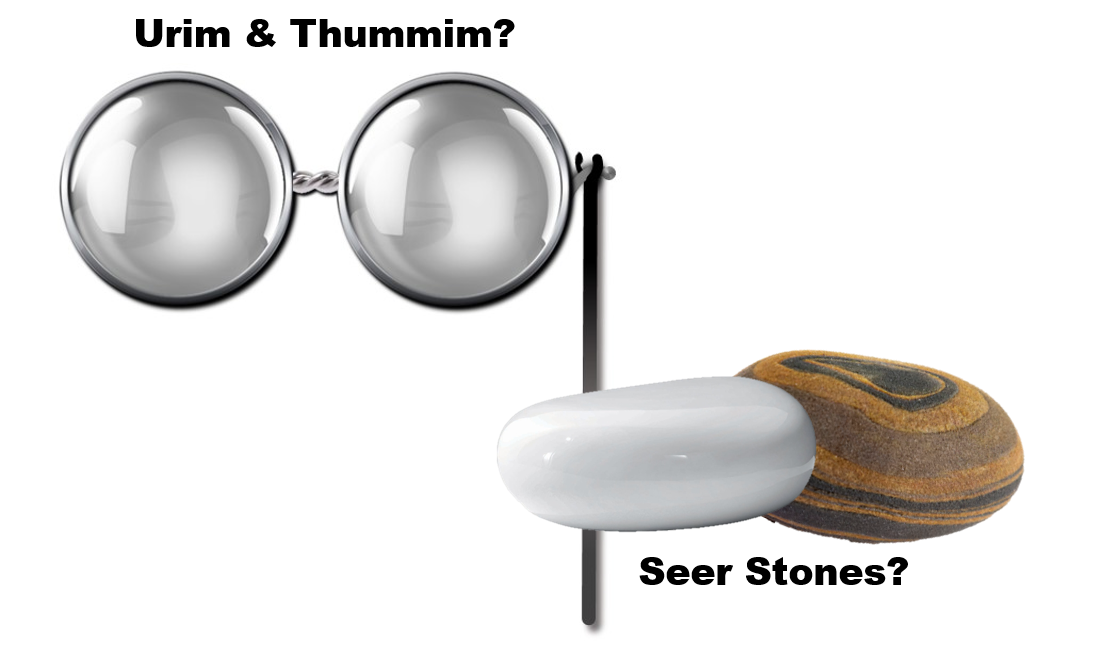 Question: Did Joseph Smith say anything about the process of translation?
Question: Did Joseph Smith say anything about the process of translation?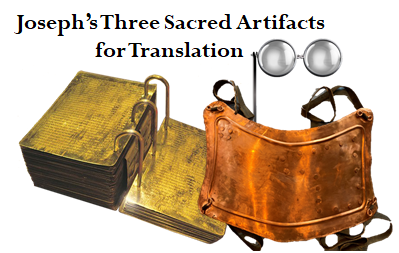
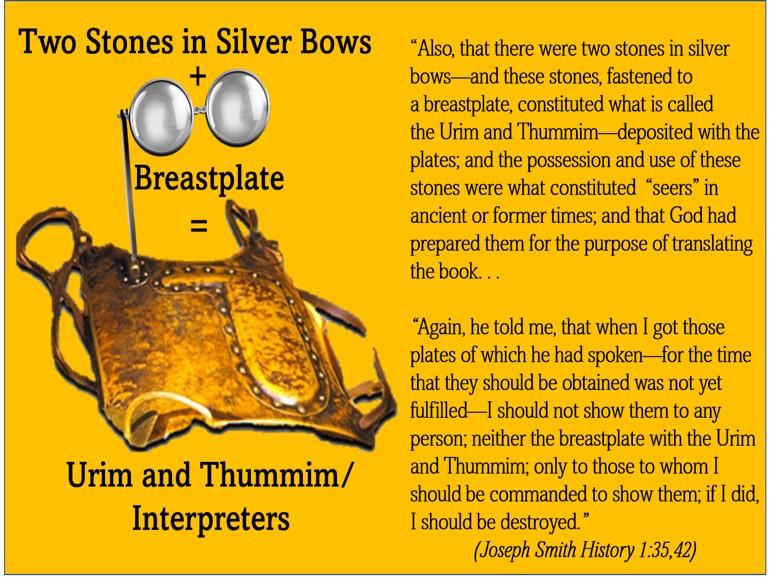 The testimony borne by Oliver Cowdery upon his return to the Church was as follows: “Friends and Brethren: My name is Cowdery, Oliver Cowdery. In the early history of this Church, I stood identified with her, and one in her councils. True it is that the gifts and callings of God are without repentance; not because I was better than the rest of mankind was I called, to fulfill the purposes of God. He called me to a high and holy calling.
The testimony borne by Oliver Cowdery upon his return to the Church was as follows: “Friends and Brethren: My name is Cowdery, Oliver Cowdery. In the early history of this Church, I stood identified with her, and one in her councils. True it is that the gifts and callings of God are without repentance; not because I was better than the rest of mankind was I called, to fulfill the purposes of God. He called me to a high and holy calling. “You must study it out in your mind,” the Lord told him, “then [that is after having arrived at your own best determination as to what the proper meaning is] you must ask me if it be right, and if it is right I will cause that your bosom shall burn within you; therefore, you shall feel that it is right. But if it be not right you shall have no such feelings, but you shall have a stupor of thought that shall cause you to forget the thing which is wrong; therefore, you cannot write that which is sacred save it be given you from me” (D&C 9:8-9). In this context let us give at least brief consideration to the preparation that Joseph Smith made in order to have the sense and feel of this ancient record he was translating. First, it would be well to observe that
“You must study it out in your mind,” the Lord told him, “then [that is after having arrived at your own best determination as to what the proper meaning is] you must ask me if it be right, and if it is right I will cause that your bosom shall burn within you; therefore, you shall feel that it is right. But if it be not right you shall have no such feelings, but you shall have a stupor of thought that shall cause you to forget the thing which is wrong; therefore, you cannot write that which is sacred save it be given you from me” (D&C 9:8-9). In this context let us give at least brief consideration to the preparation that Joseph Smith made in order to have the sense and feel of this ancient record he was translating. First, it would be well to observe that 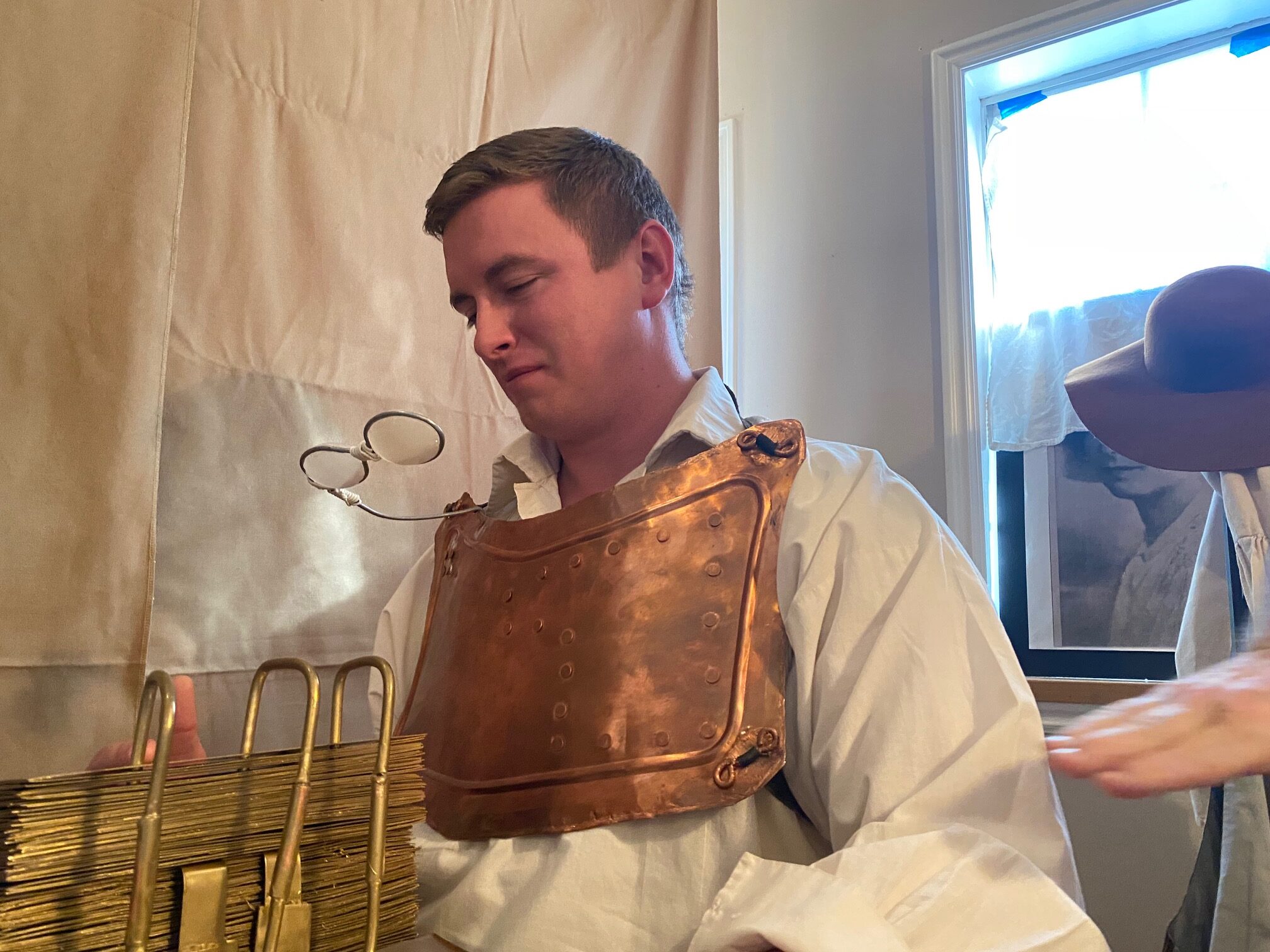 “We were convinced that God was about to bring to light something that we might stay our minds upon, something that would give us a more perfect knowledge of the plan of salvation and the redemption of the human family than anything which had been taught us heretofore, and we rejoiced in it with exceeding great joy. The sweetest union and happiness pervaded our house. No jar nor discord disturbed our peace, and tranquility reigned in our midst. “In the course of our evening conversations, Joseph gave us some of the most amusing recitals which could be imagined.
“We were convinced that God was about to bring to light something that we might stay our minds upon, something that would give us a more perfect knowledge of the plan of salvation and the redemption of the human family than anything which had been taught us heretofore, and we rejoiced in it with exceeding great joy. The sweetest union and happiness pervaded our house. No jar nor discord disturbed our peace, and tranquility reigned in our midst. “In the course of our evening conversations, Joseph gave us some of the most amusing recitals which could be imagined.  Question: What light does he shed on the matter?
Question: What light does he shed on the matter? Fourth, Joseph Smith repeatedly testified to having both the plates and the Urim and Thummim returned to him.
Fourth, Joseph Smith repeatedly testified to having both the plates and the Urim and Thummim returned to him. 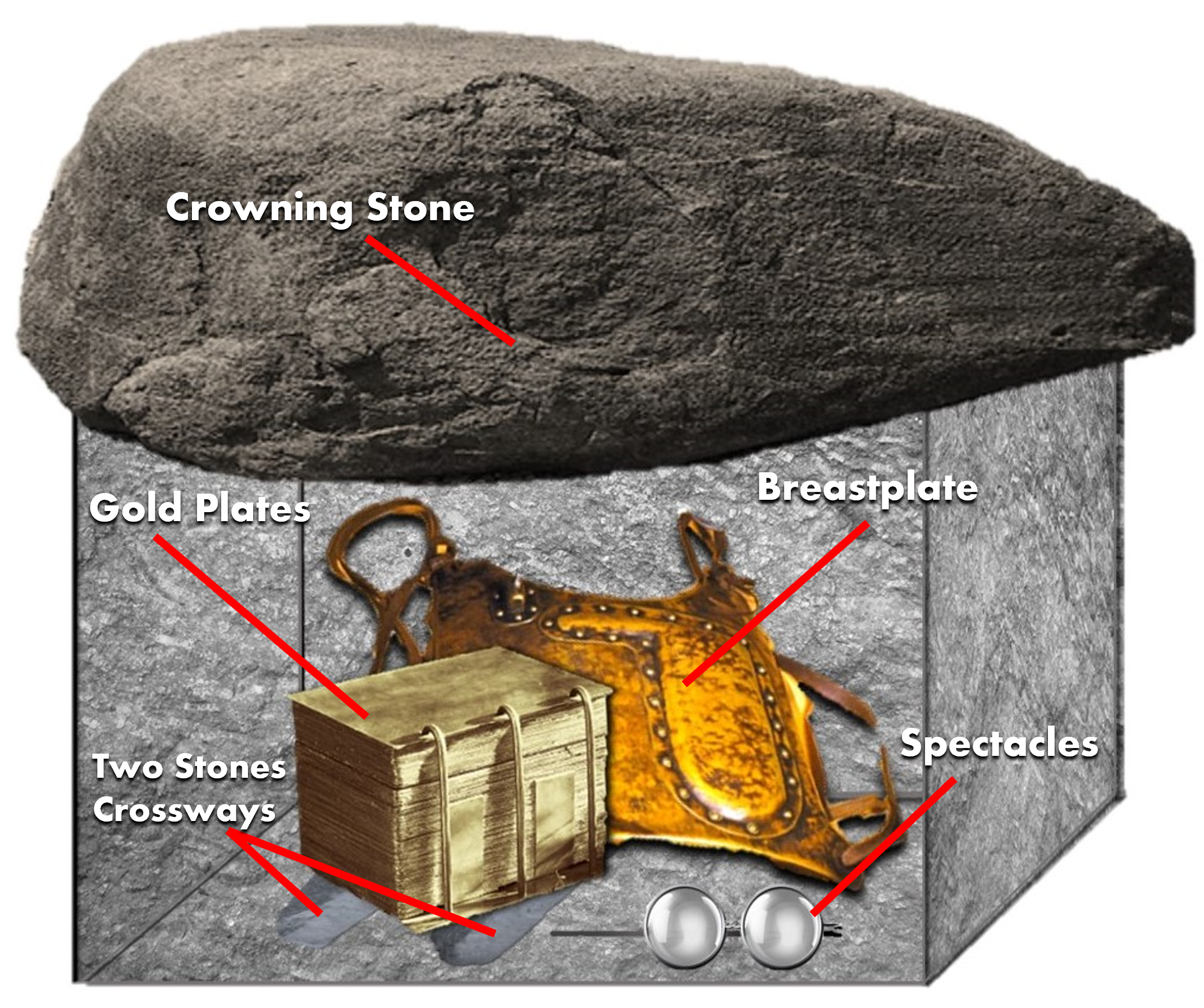
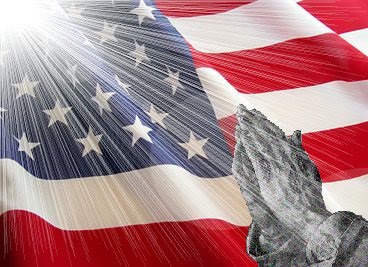
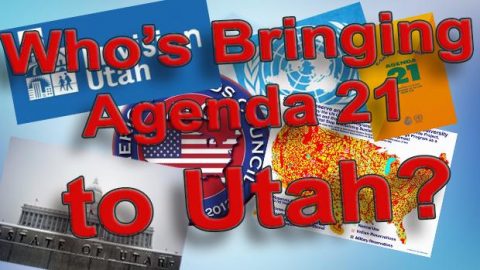
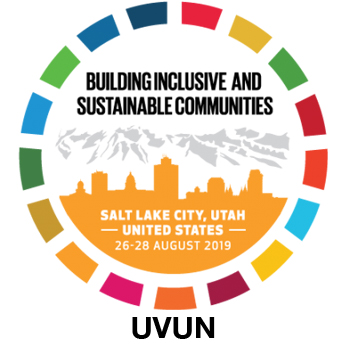

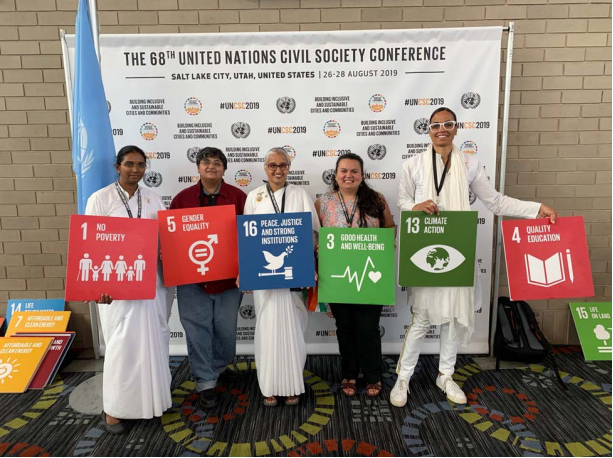

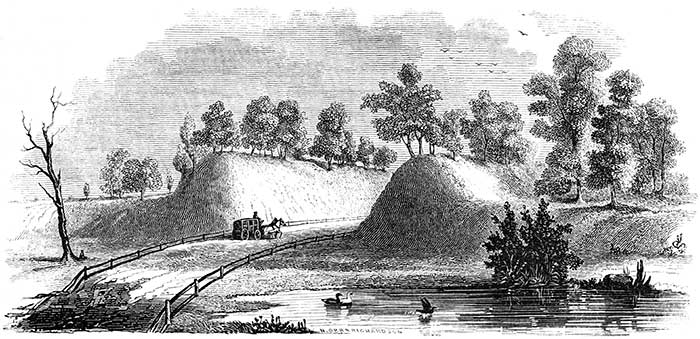



 Dr. Brad Lepper, the present-day champion of the Great Hopewell Road, claims that traces of the road remain at four additional places along the 60-mile (97 km) line connecting Newark and Chillicothe. Parts of the road can be seen from the air and with infrared photography. There is precedent for such a sacred road at other complexes.[2] More “ground truthing” needs to be performed but the evidence is suggestive.[1]
Dr. Brad Lepper, the present-day champion of the Great Hopewell Road, claims that traces of the road remain at four additional places along the 60-mile (97 km) line connecting Newark and Chillicothe. Parts of the road can be seen from the air and with infrared photography. There is precedent for such a sacred road at other complexes.[2] More “ground truthing” needs to be performed but the evidence is suggestive.[1]

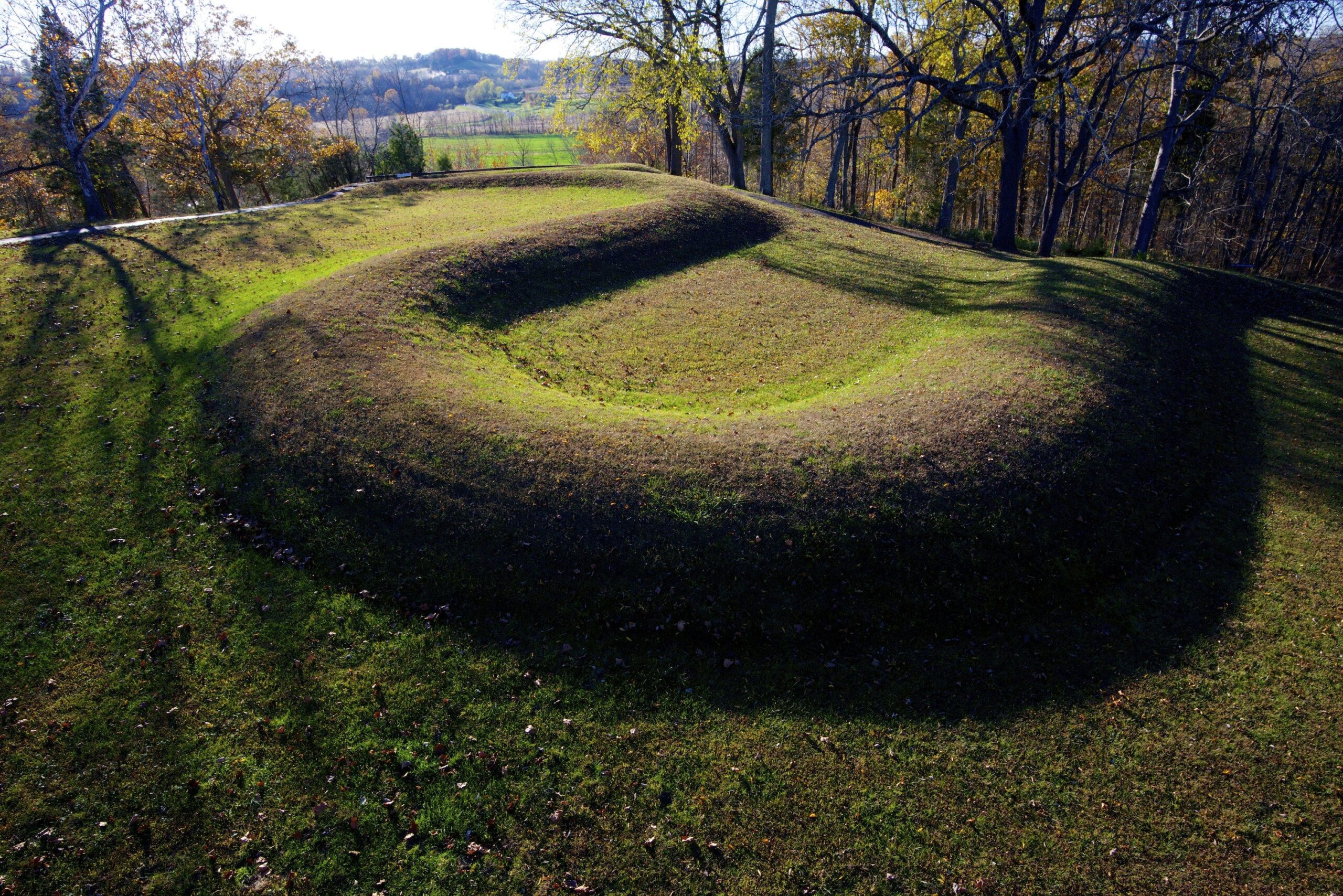 Piketon Pike County Ohio
Piketon Pike County Ohio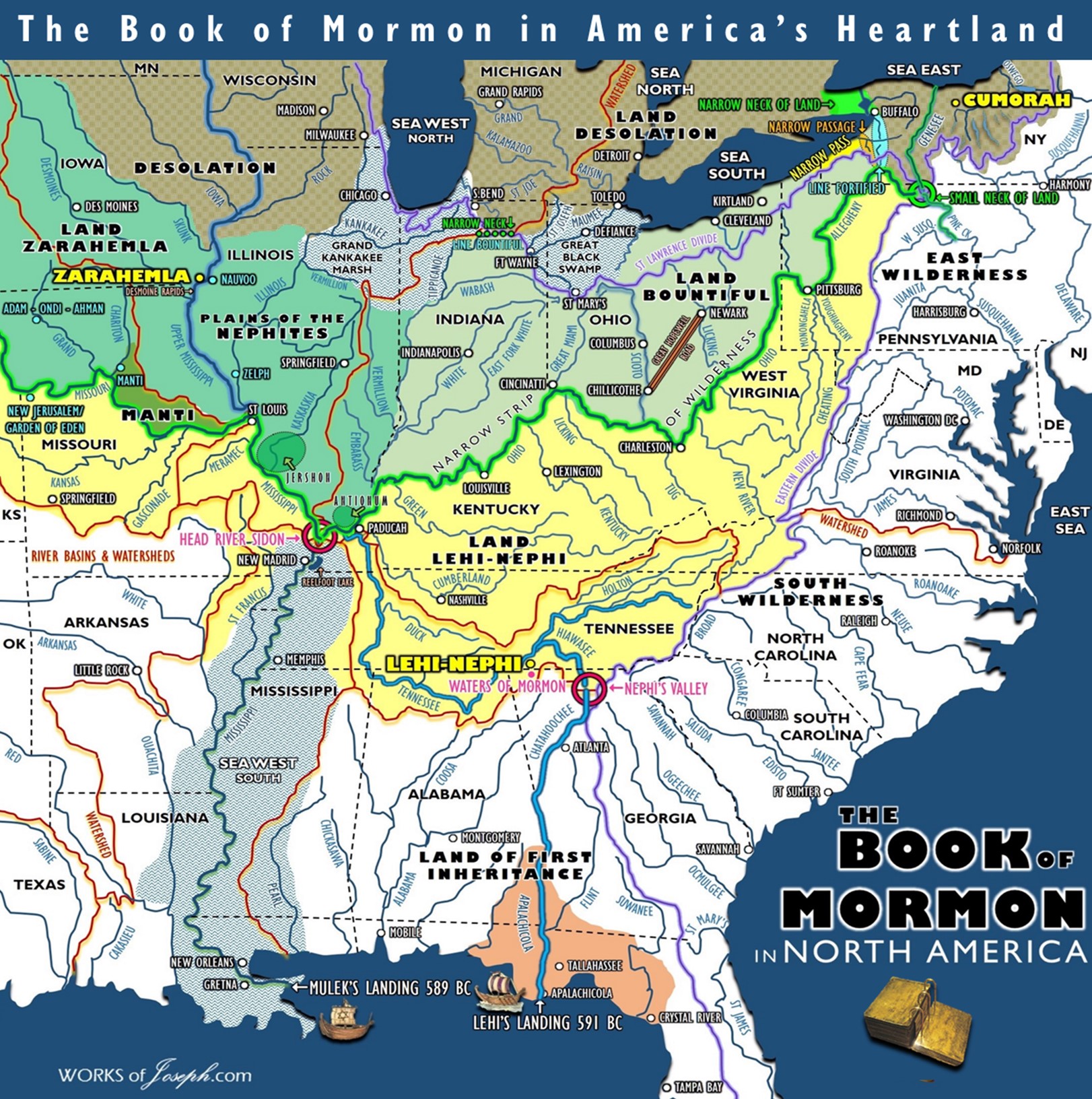


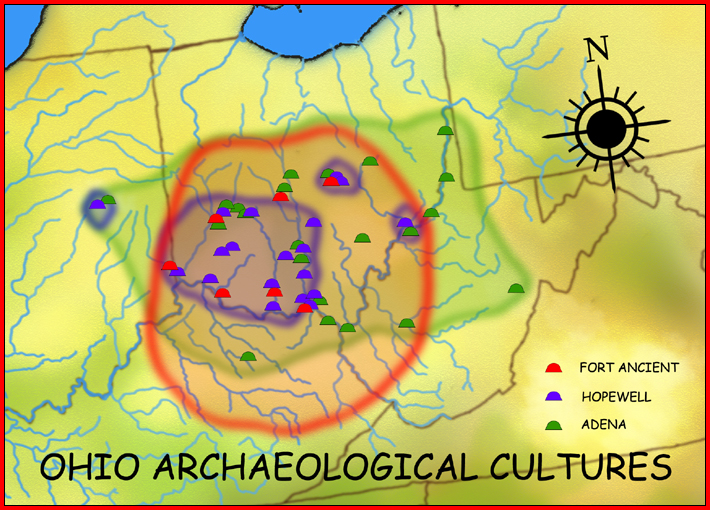
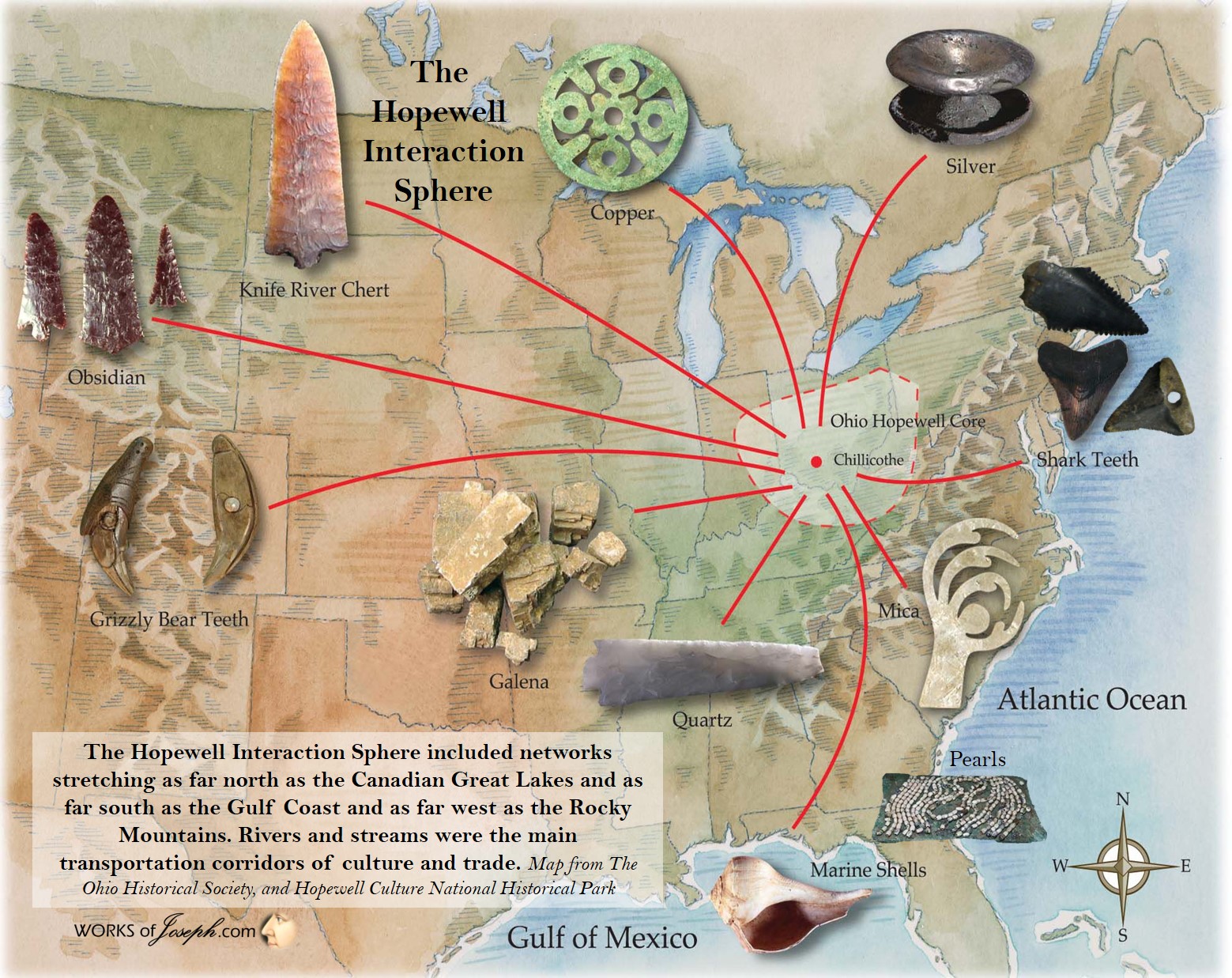
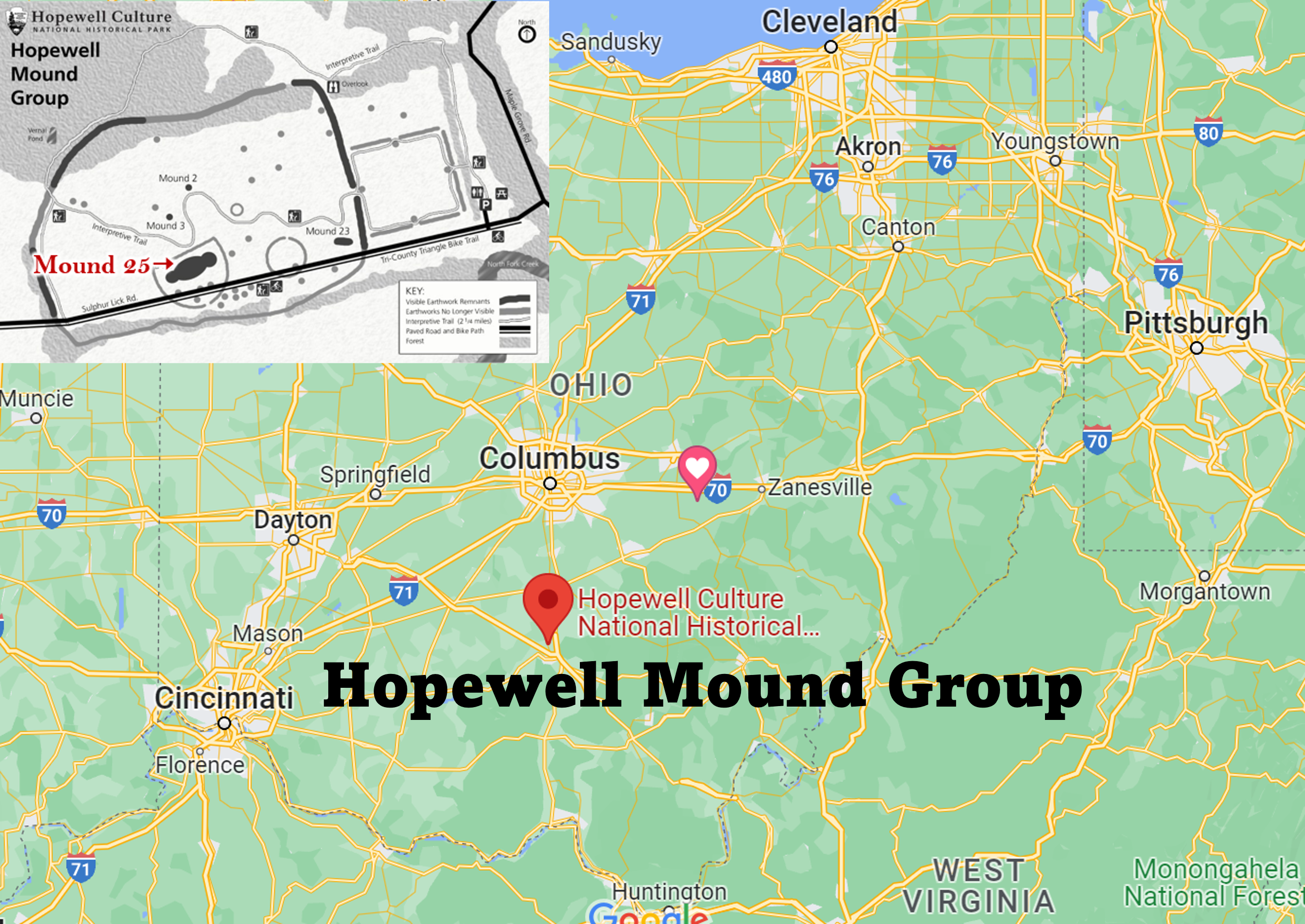
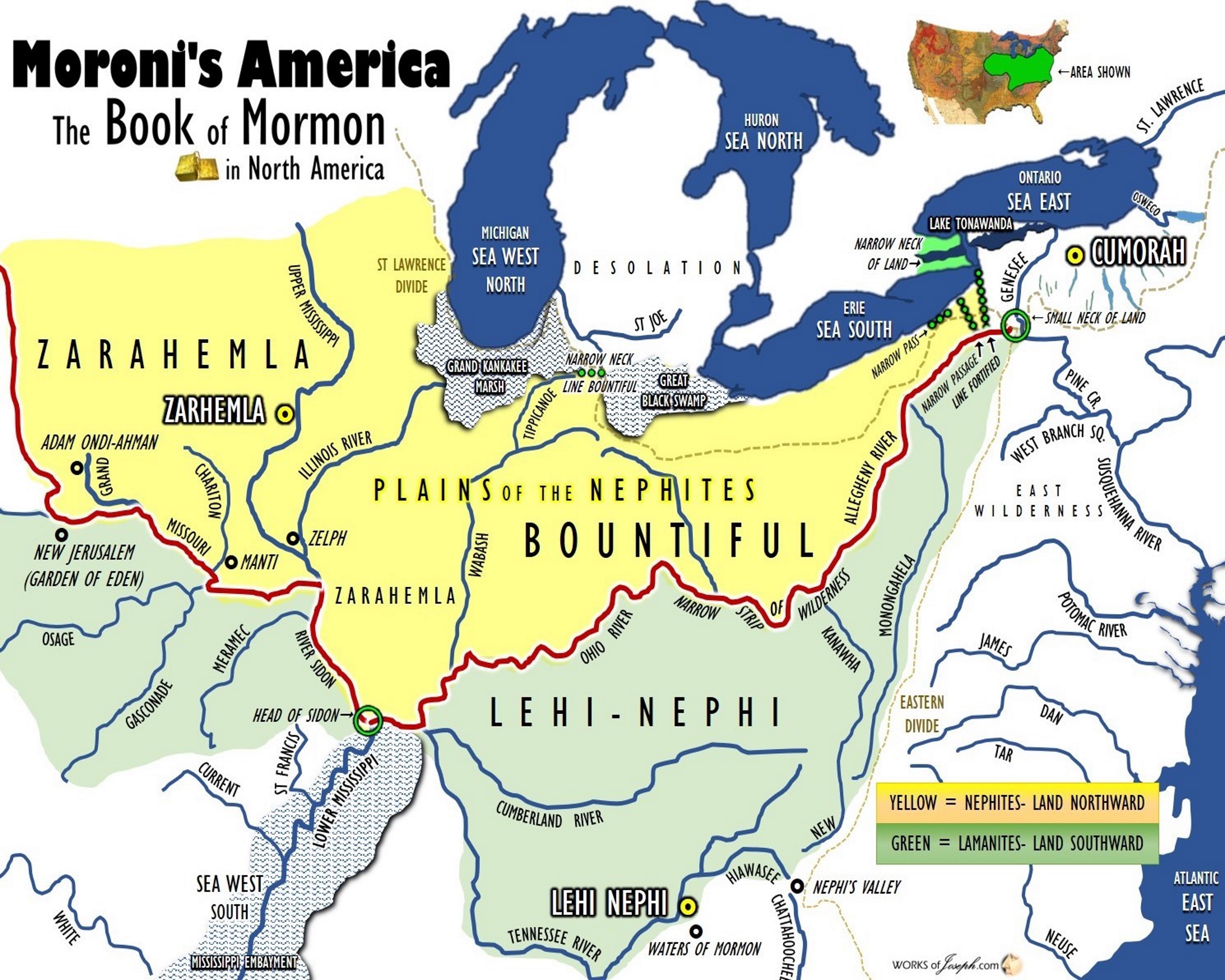

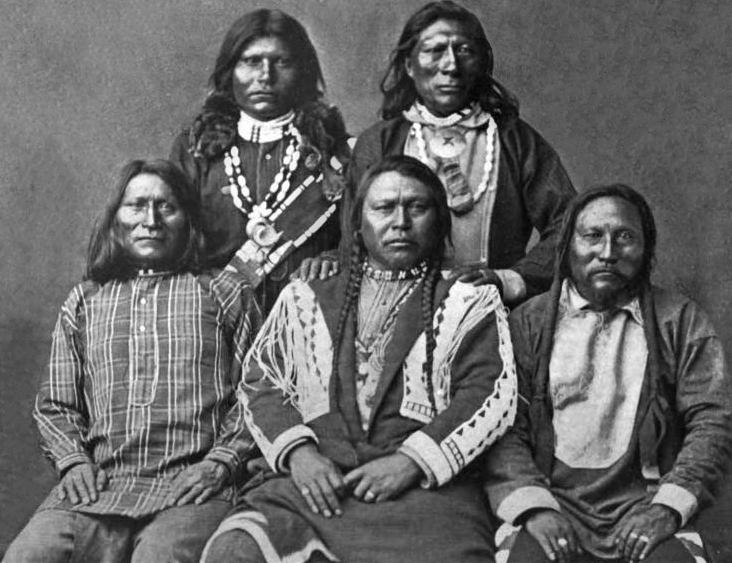

 Early the following morning, about 3 o’clock, I dreamed that I saw a large band of Indians come down and pitch camp on the creek above us. I was so forcibly impressed that I awoke the other two men, and told them I felt confident that the dream was true, and that we would prove it at daylight. They agreed with me, so I told them to make as dark a fire as was possible, and to get breakfast, while I would go on the high bluff that overlooked camp and the country adjacent, where I would watch everything that moved, and if there were friends or foes in the country we would see them or their lights before they should see ours. We all arose at once, the others preparing the meal and saddling the horses ready for a hasty move, while I went up on the bluff and there kept a sharp lookout until the dawn. At the first streaks of daylight I saw a blue smoke creeping up through the willows, perhaps a mile and a half above me, then another and another, until it was plain there was a camp of Indians just where I had dreamed they were. Soon the tops of lodges appeared, then a band of ponies was driven up. By this time it was fairly daylight.
Early the following morning, about 3 o’clock, I dreamed that I saw a large band of Indians come down and pitch camp on the creek above us. I was so forcibly impressed that I awoke the other two men, and told them I felt confident that the dream was true, and that we would prove it at daylight. They agreed with me, so I told them to make as dark a fire as was possible, and to get breakfast, while I would go on the high bluff that overlooked camp and the country adjacent, where I would watch everything that moved, and if there were friends or foes in the country we would see them or their lights before they should see ours. We all arose at once, the others preparing the meal and saddling the horses ready for a hasty move, while I went up on the bluff and there kept a sharp lookout until the dawn. At the first streaks of daylight I saw a blue smoke creeping up through the willows, perhaps a mile and a half above me, then another and another, until it was plain there was a camp of Indians just where I had dreamed they were. Soon the tops of lodges appeared, then a band of ponies was driven up. By this time it was fairly daylight.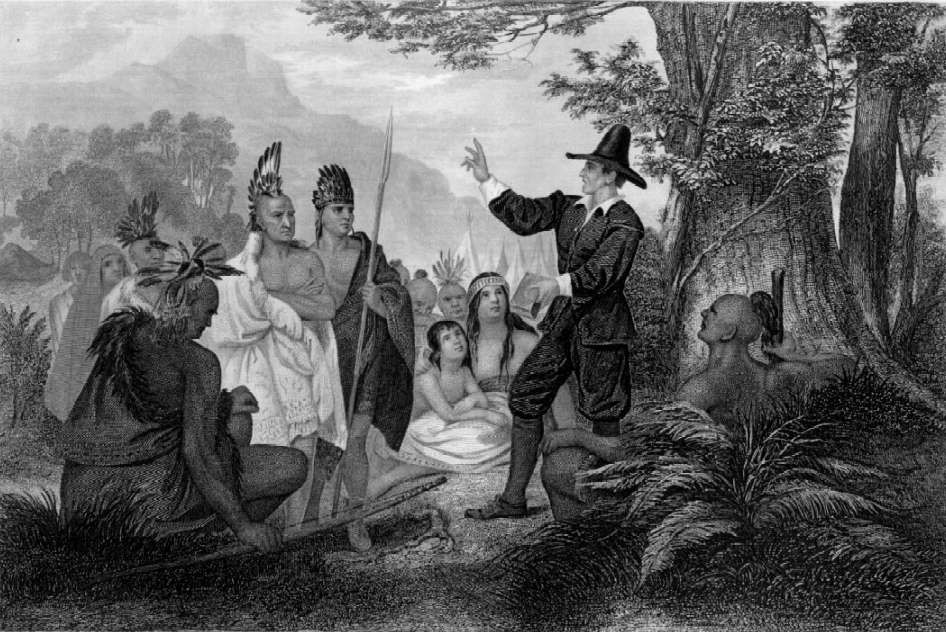

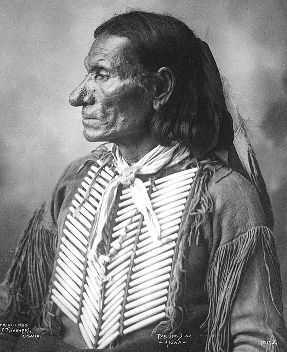
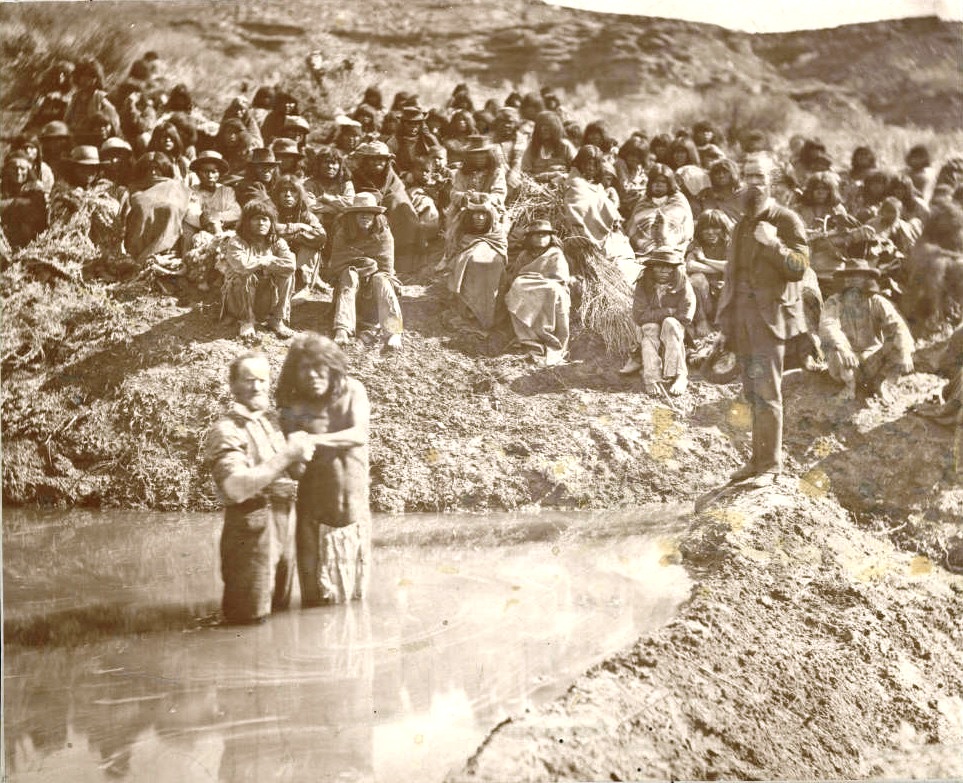
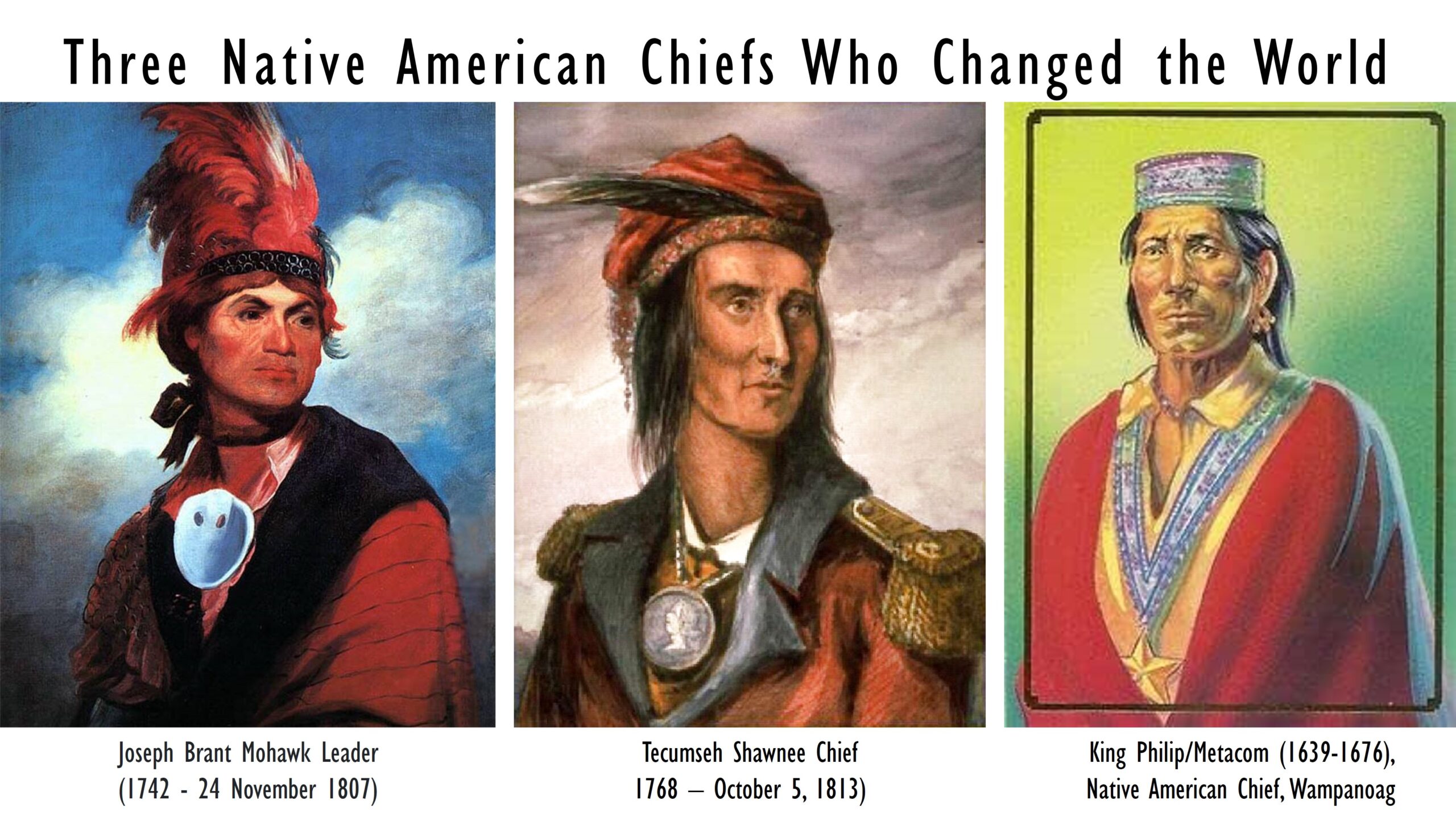
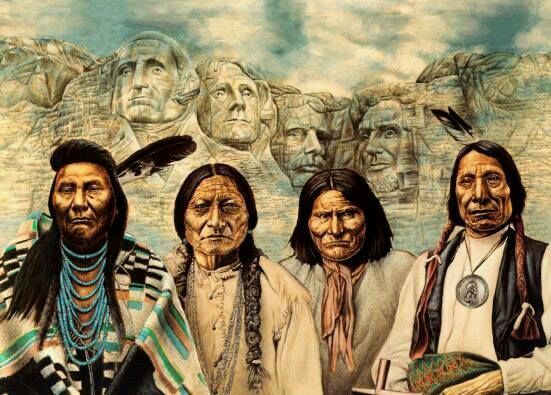
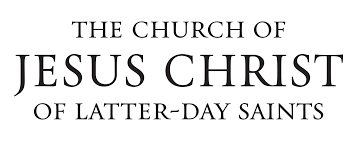
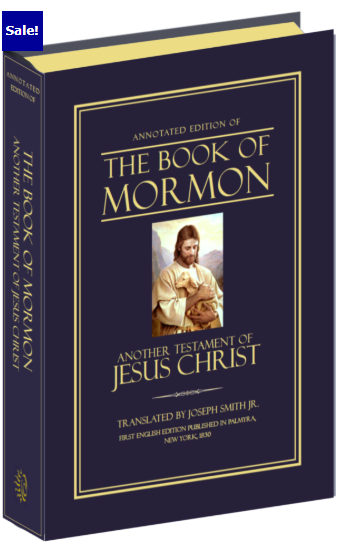
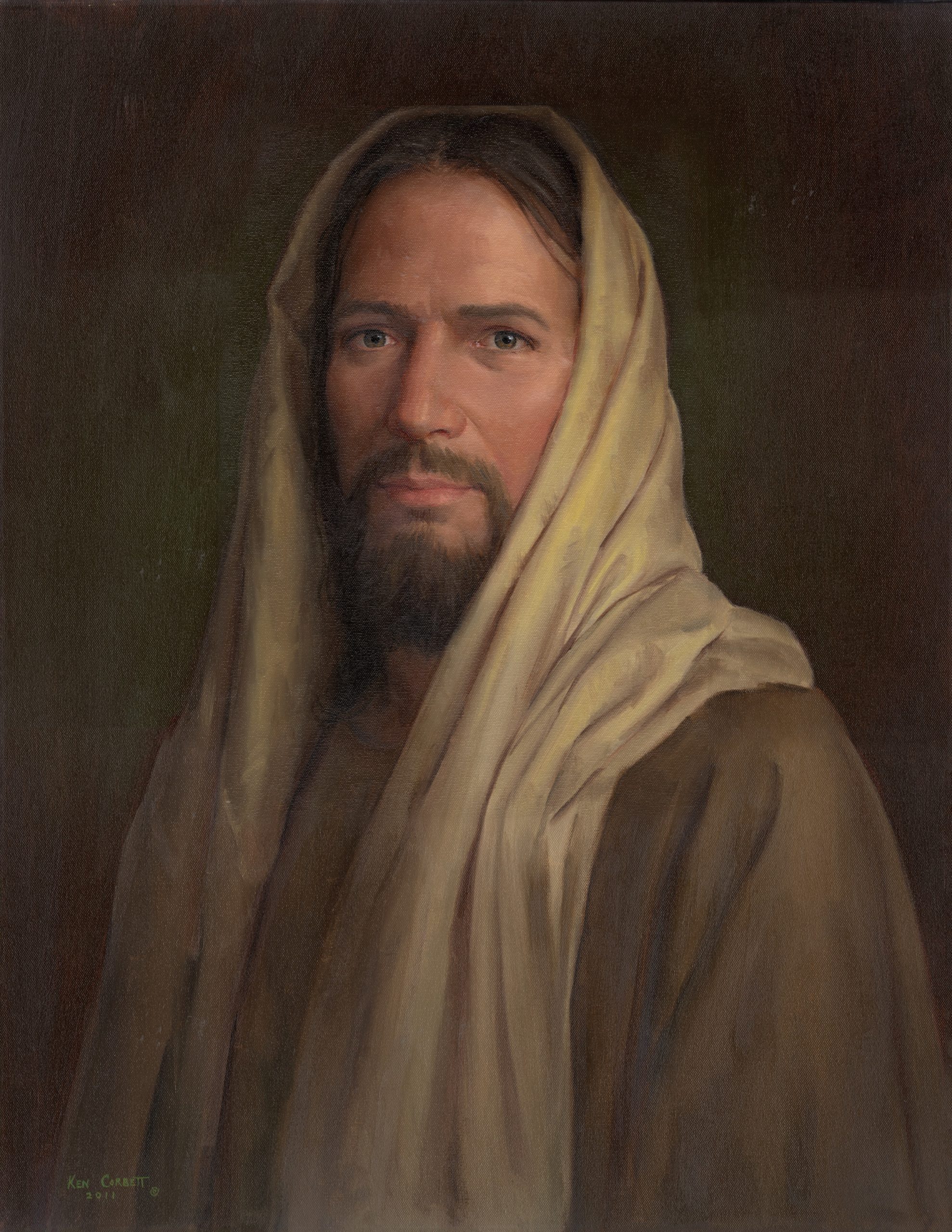

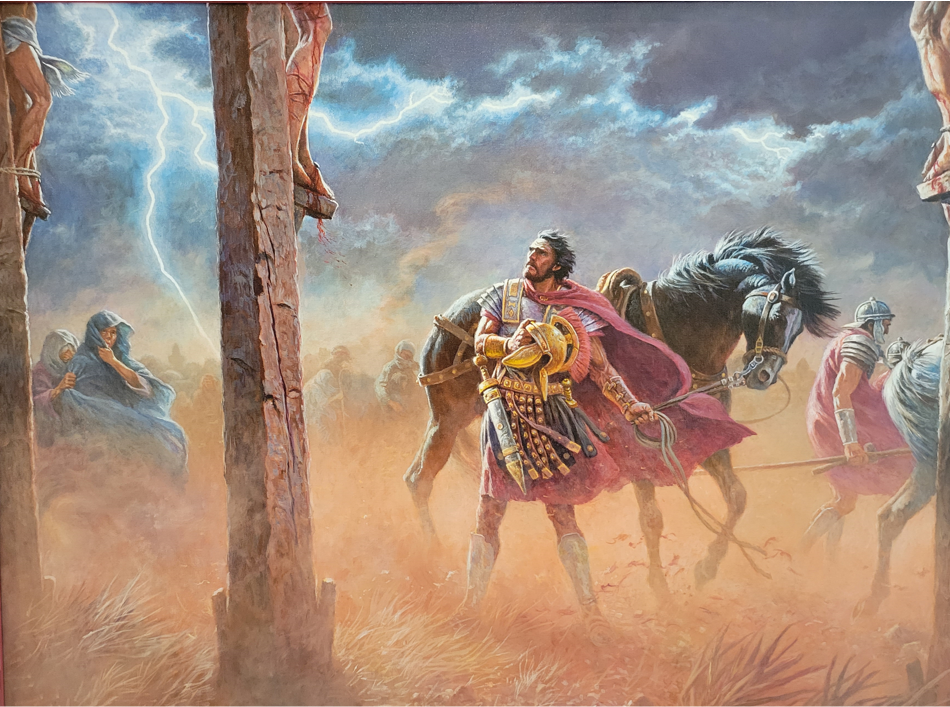

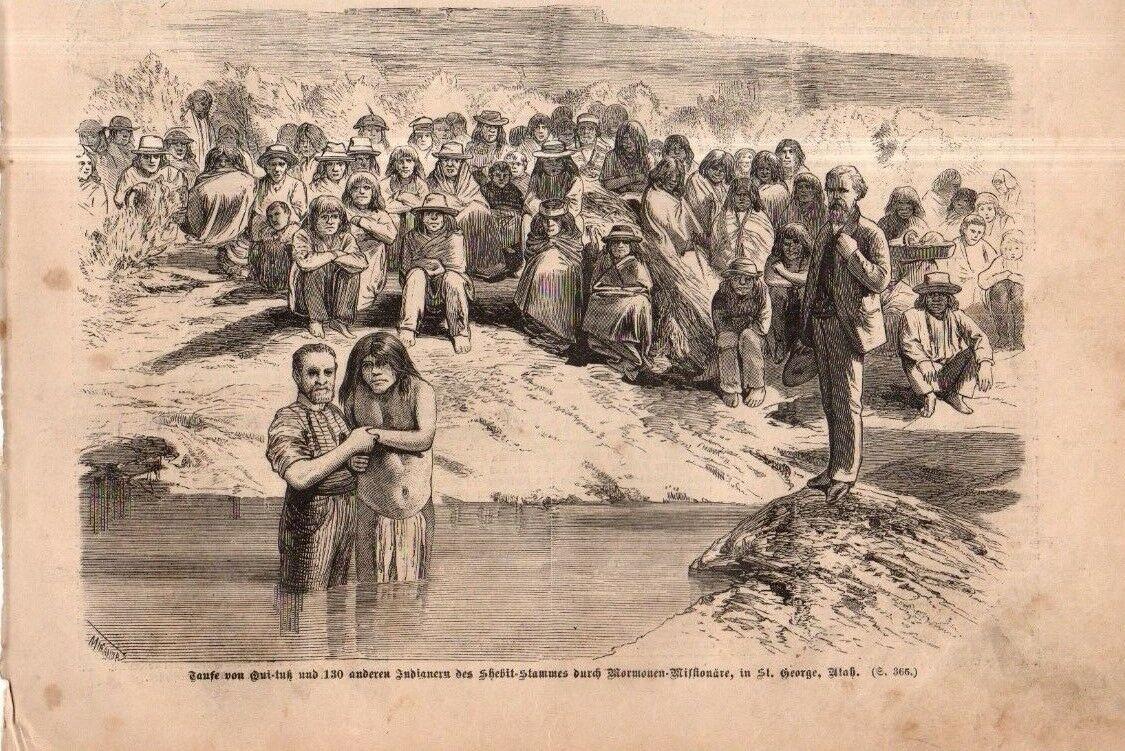 Perhaps you may inquire—“May not this great work, the redemption of these Indian tribes, take place after we have returned to our inheritances?”
Perhaps you may inquire—“May not this great work, the redemption of these Indian tribes, take place after we have returned to our inheritances?” 

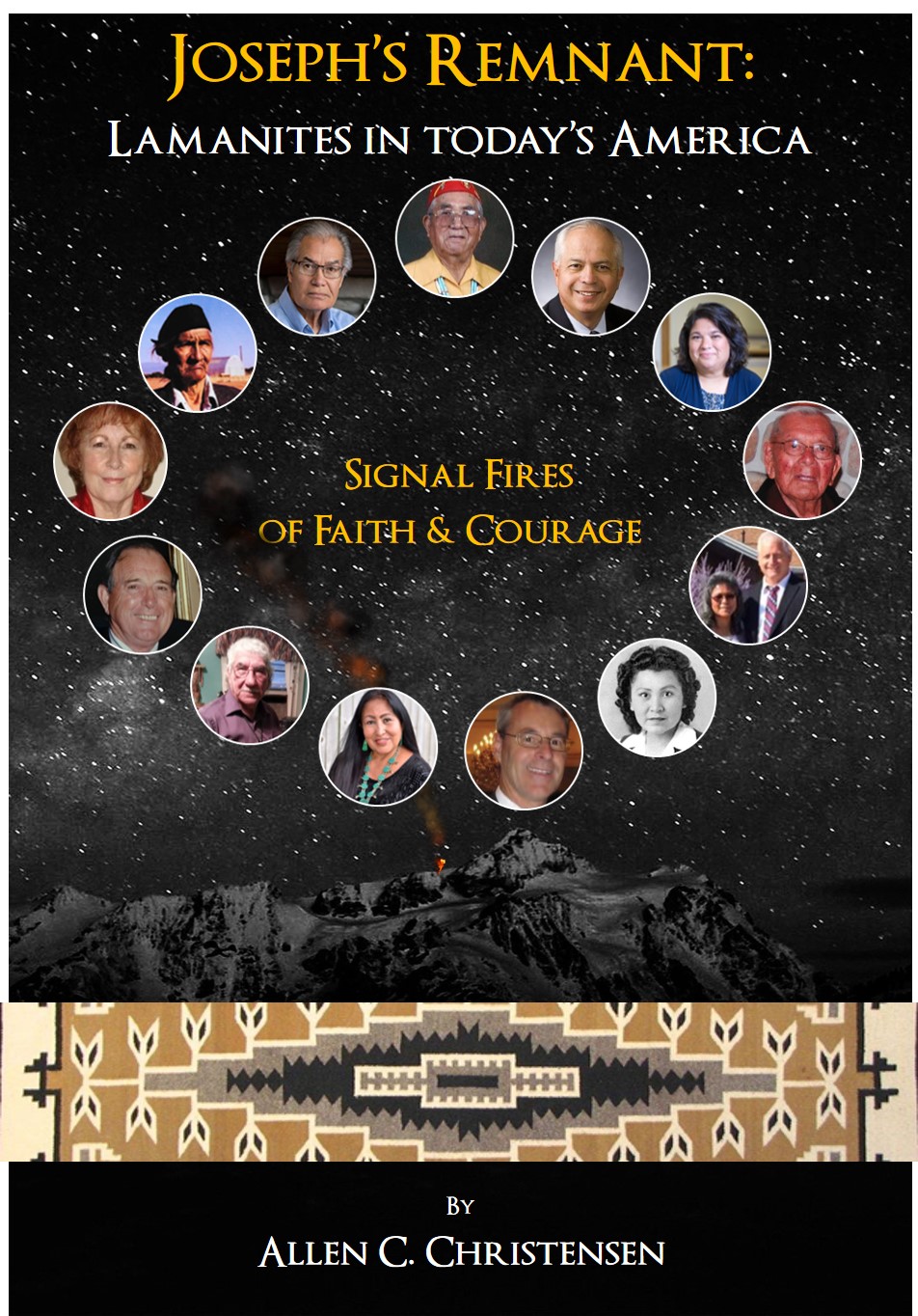
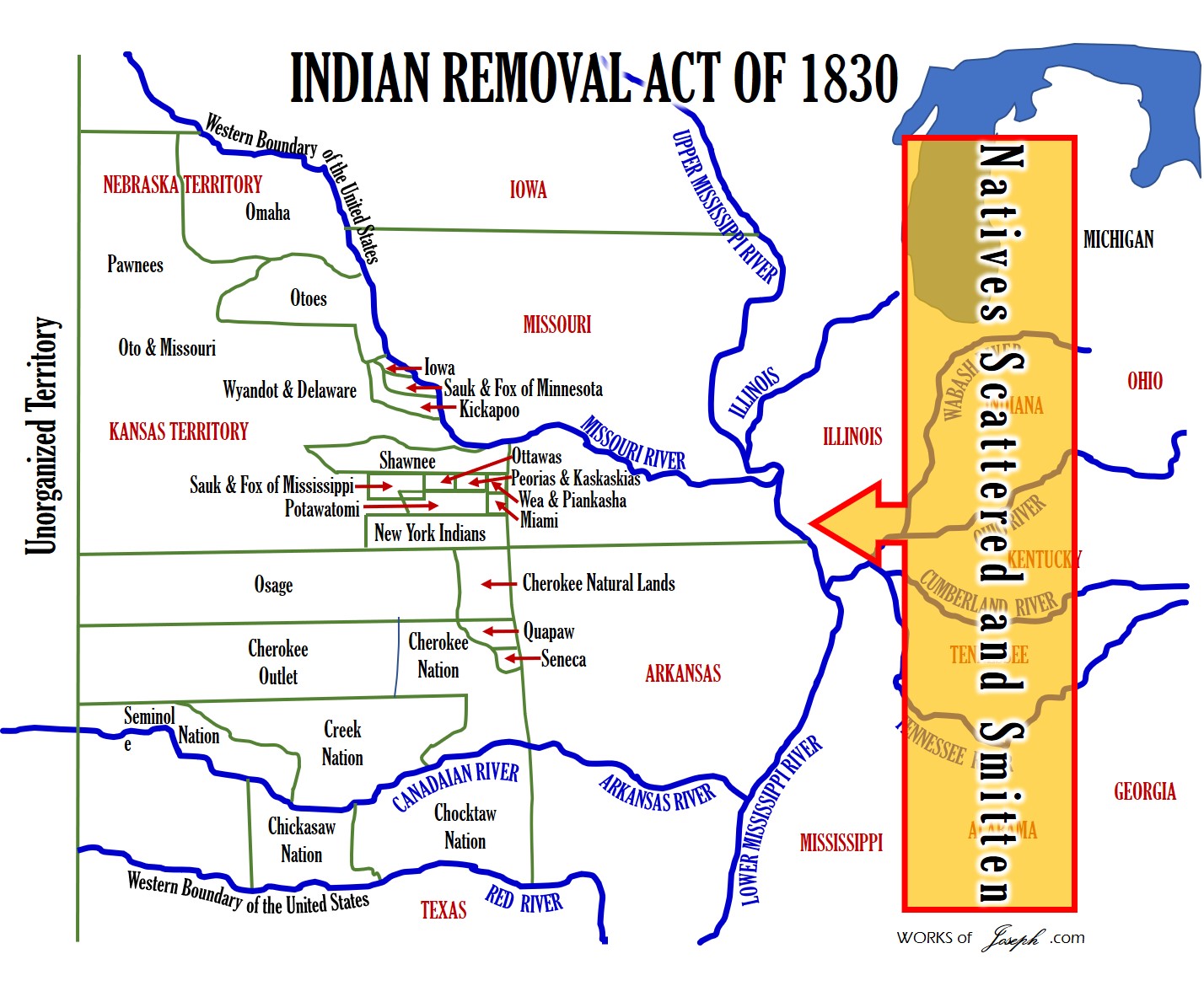 It seems then that this people, at some future time in their sojourn here in this land, may possibly be in bondage greater than they are at the present time.
It seems then that this people, at some future time in their sojourn here in this land, may possibly be in bondage greater than they are at the present time.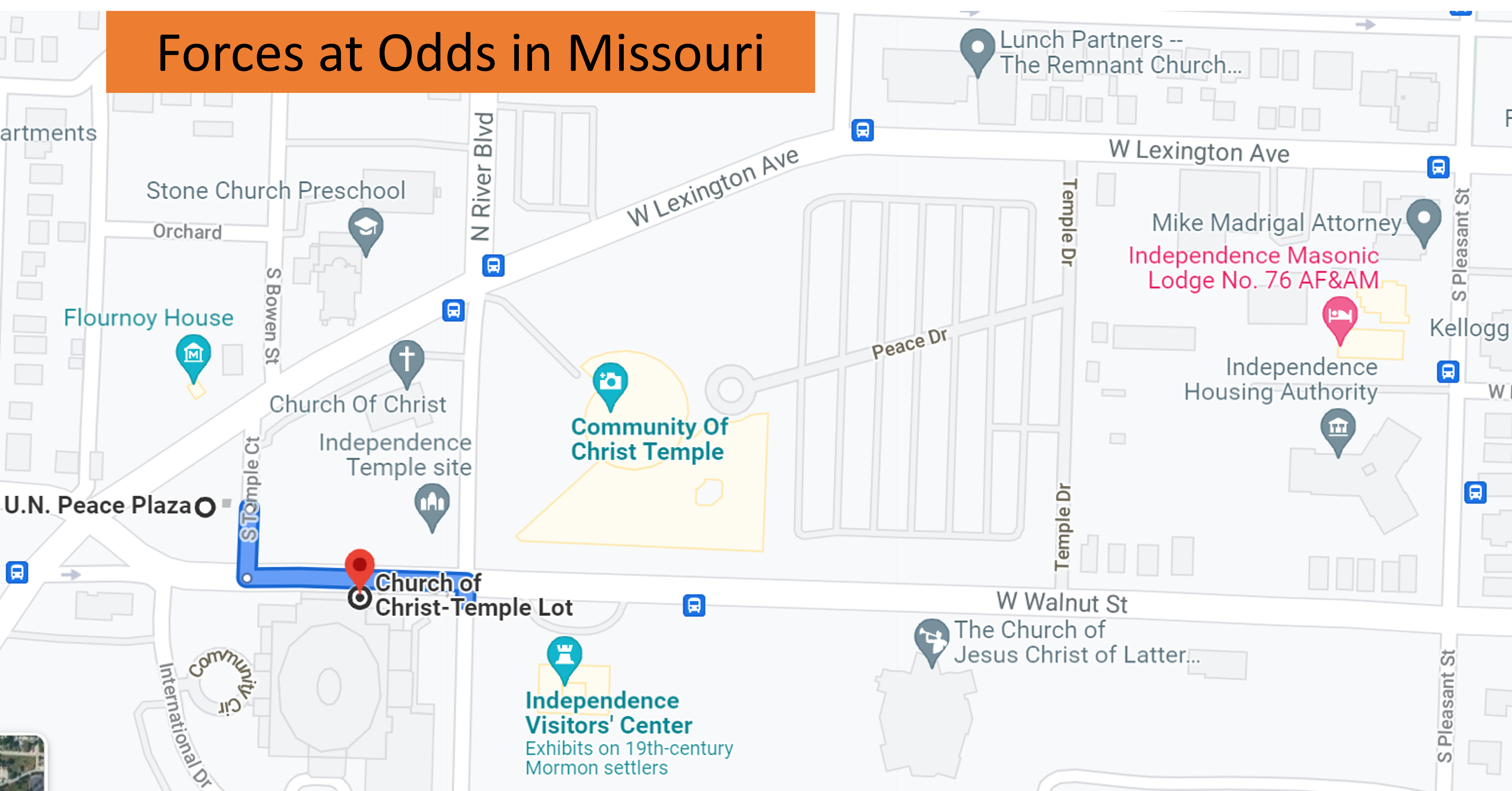
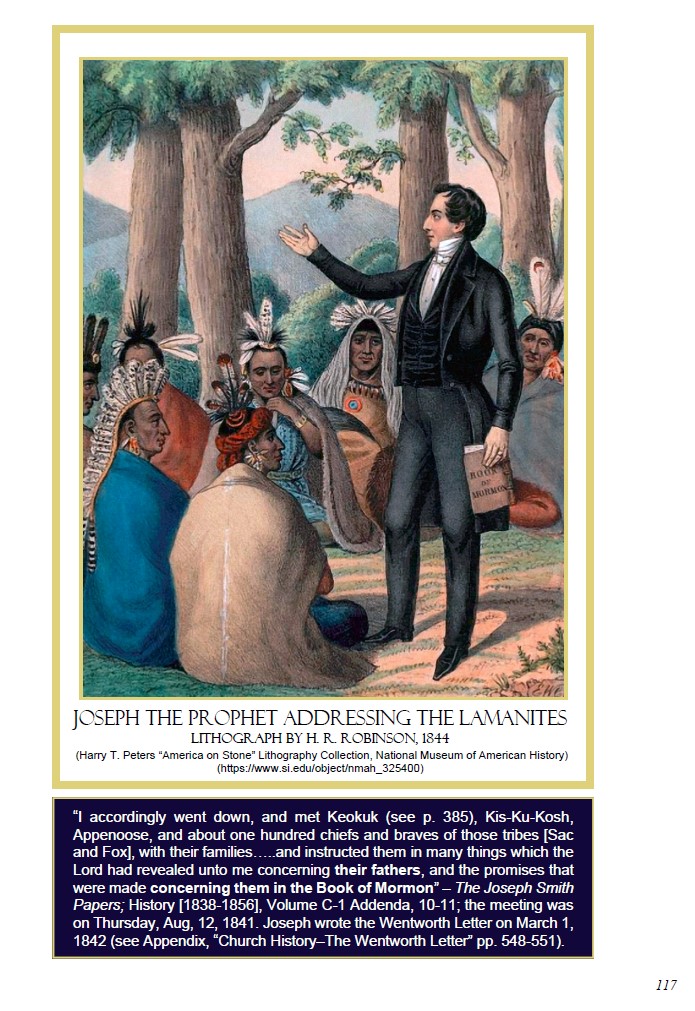
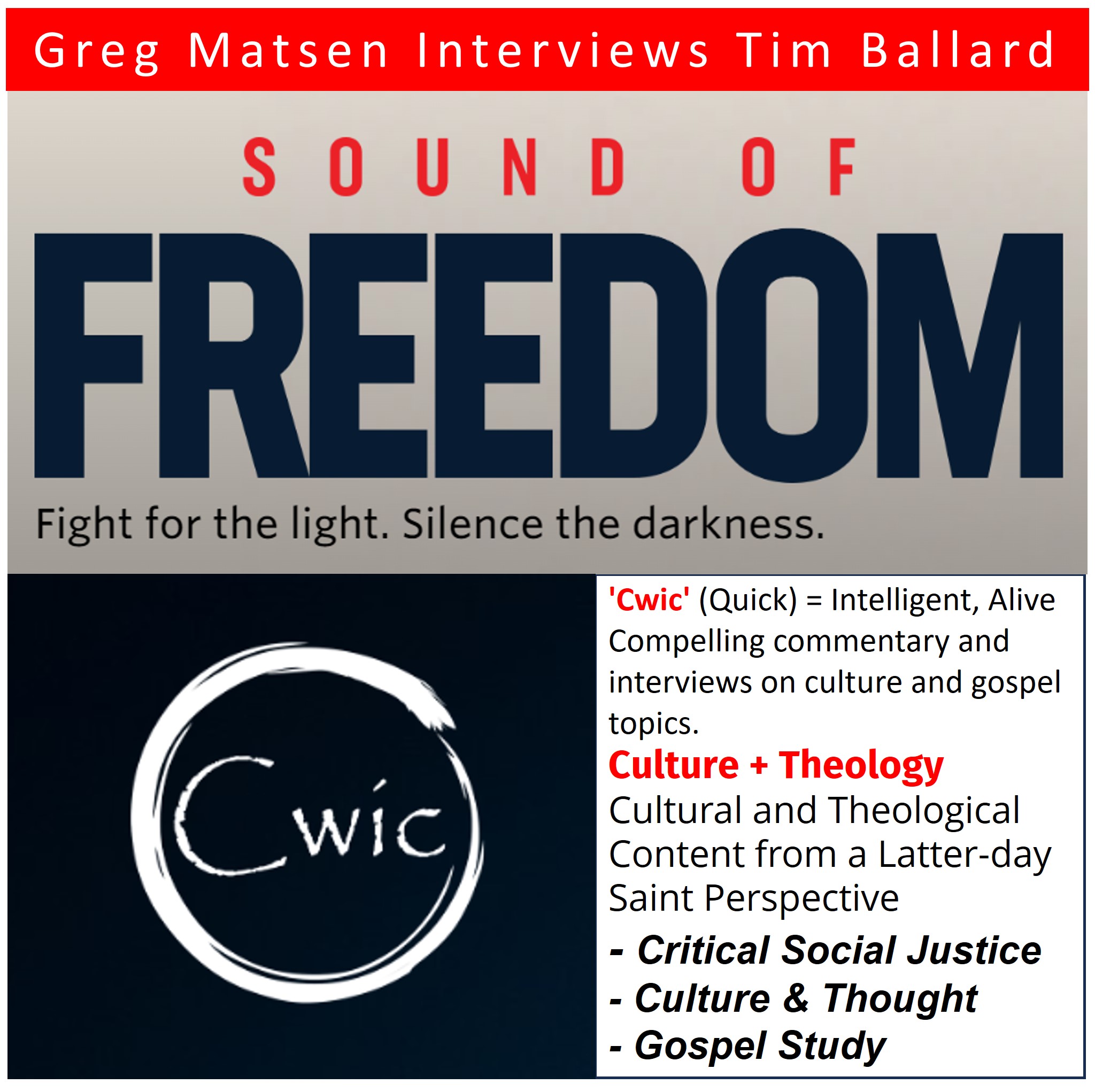
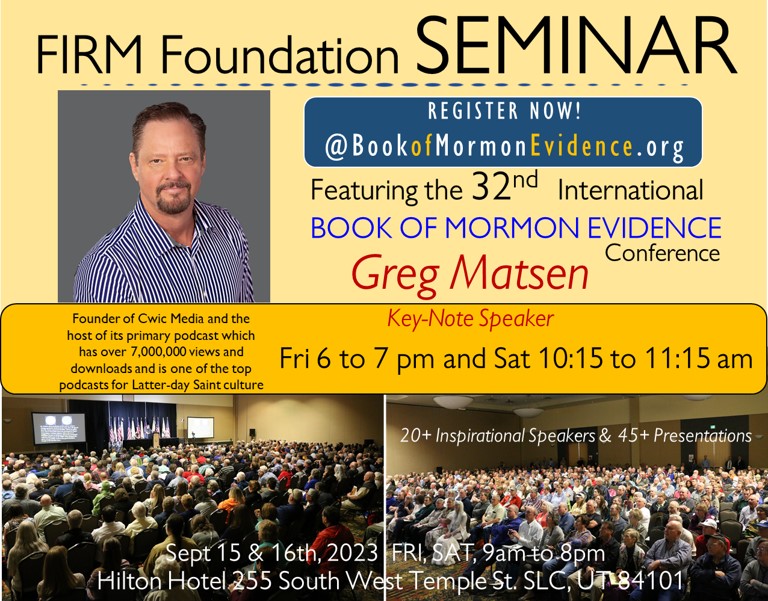
 Thank you for Cwic Show, and we thank God for a satellite
Thank you for Cwic Show, and we thank God for a satellite 
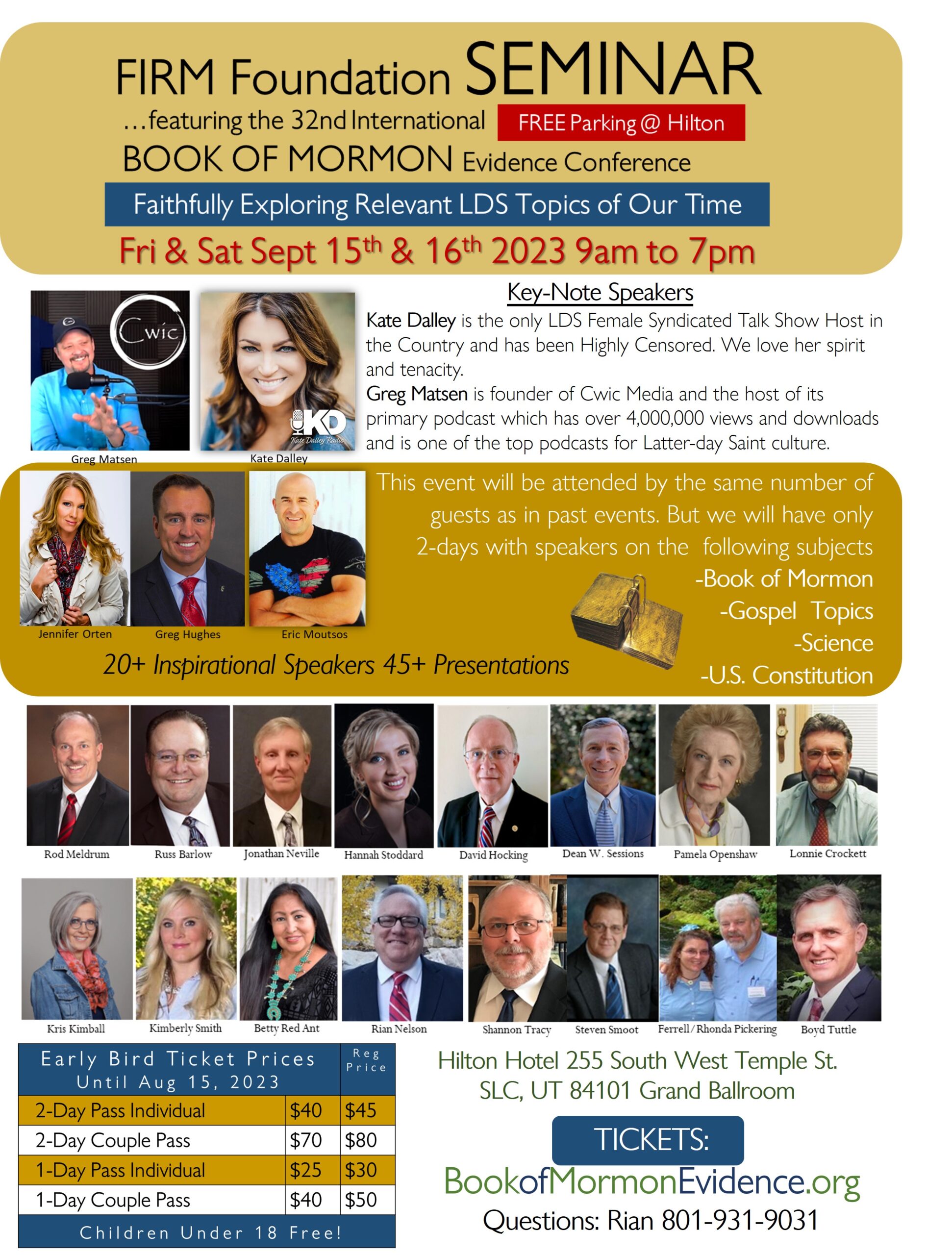
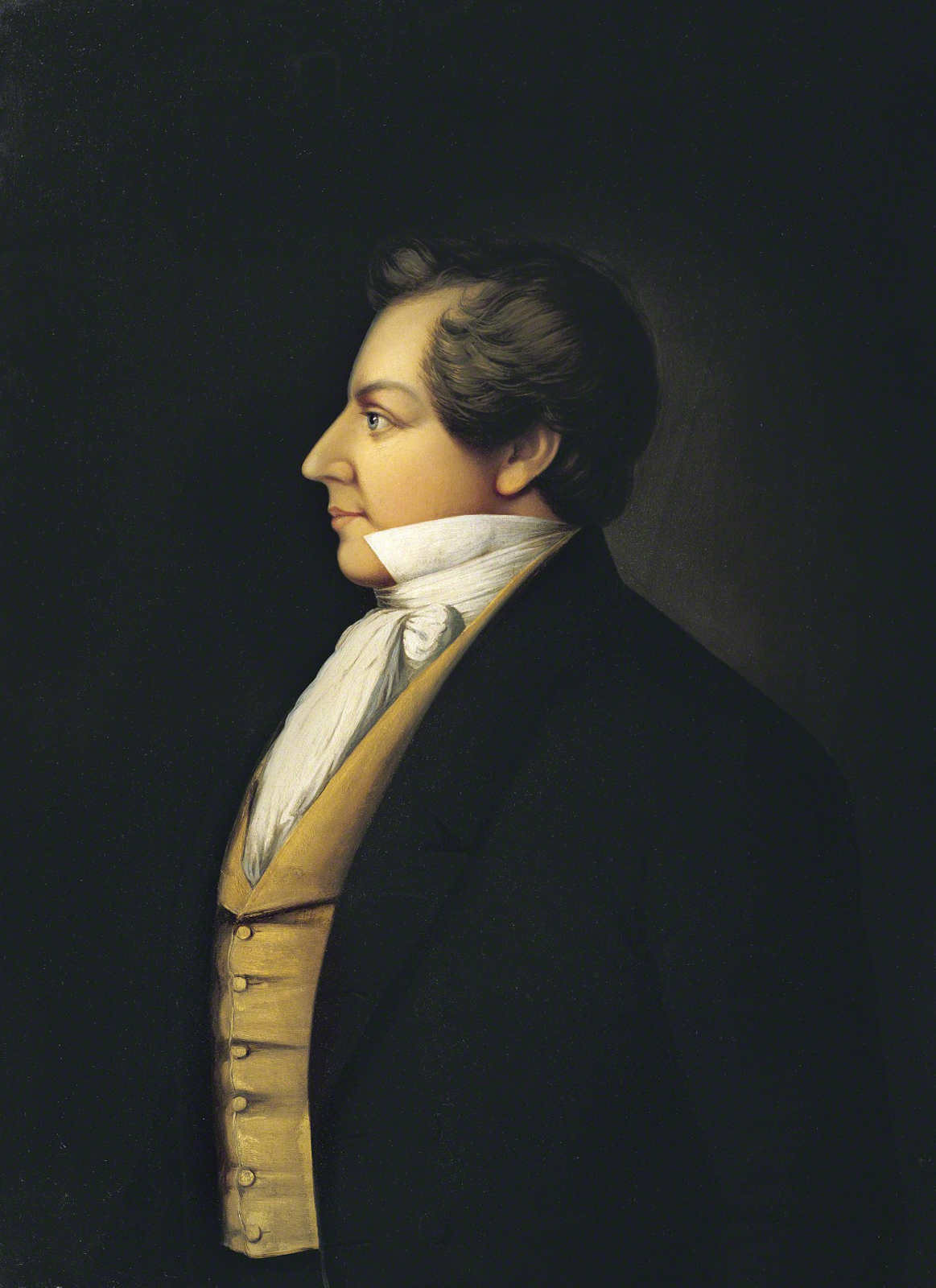


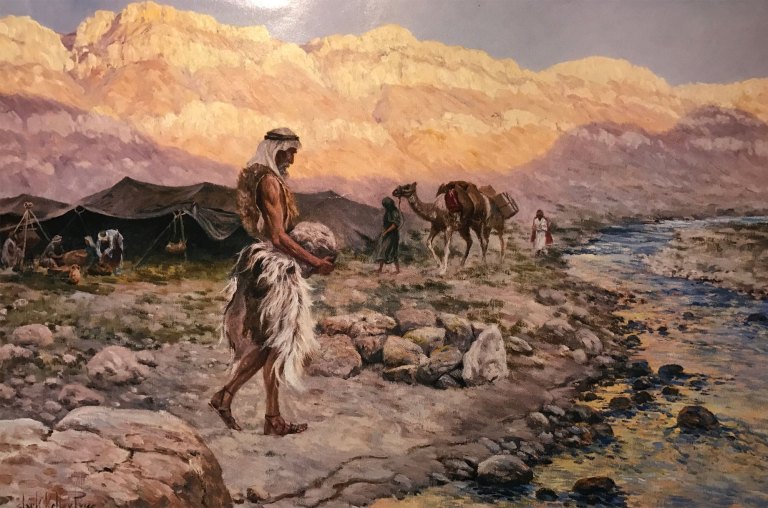
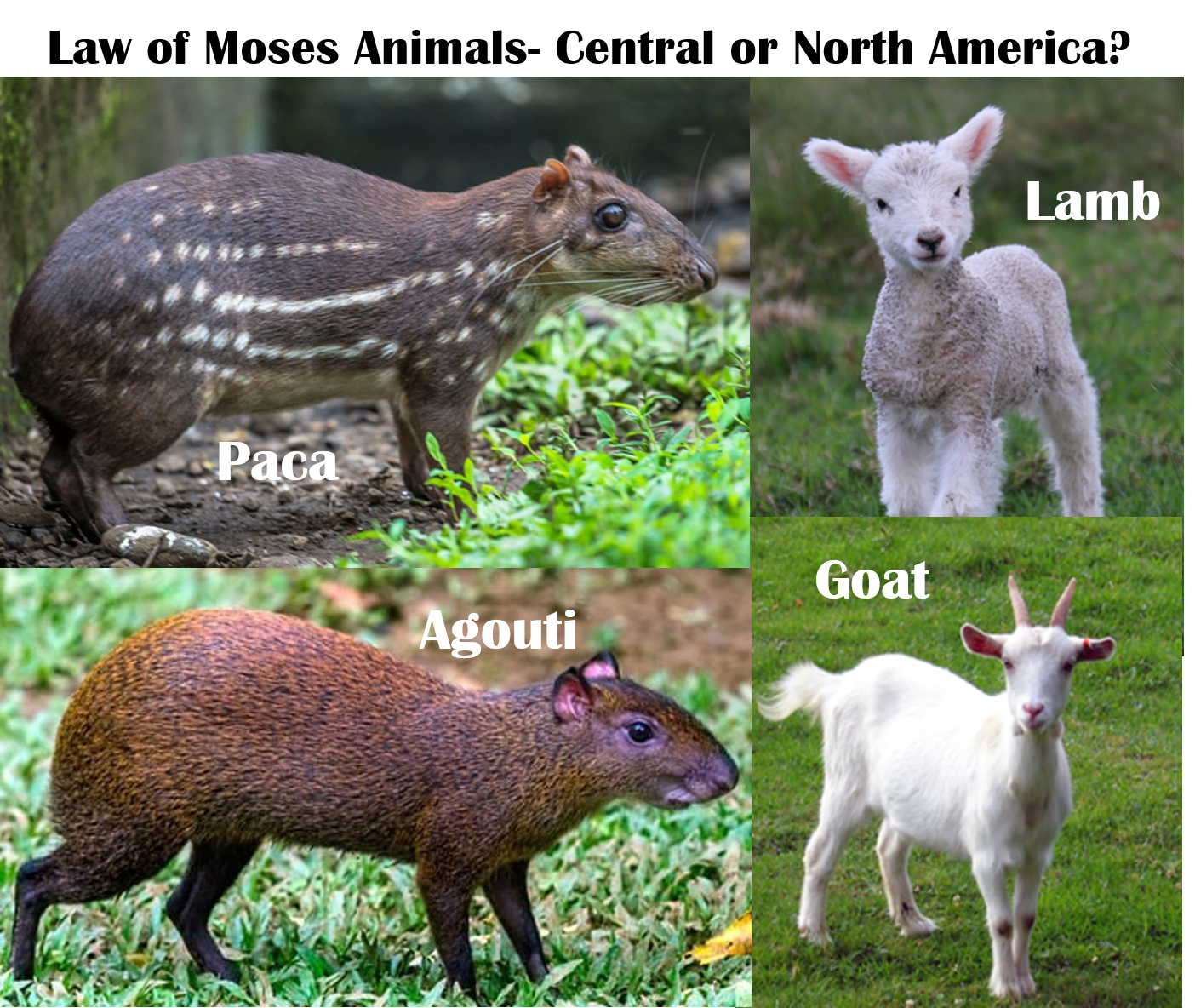


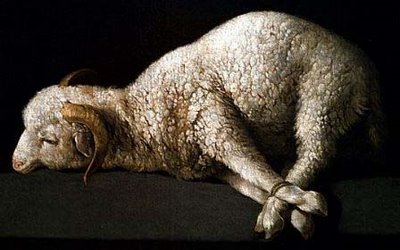

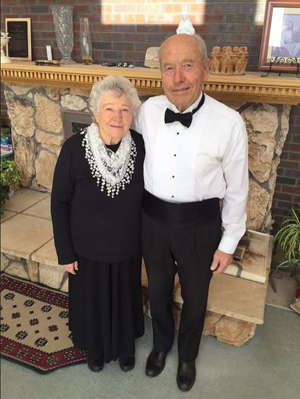
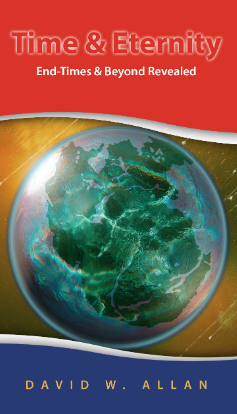
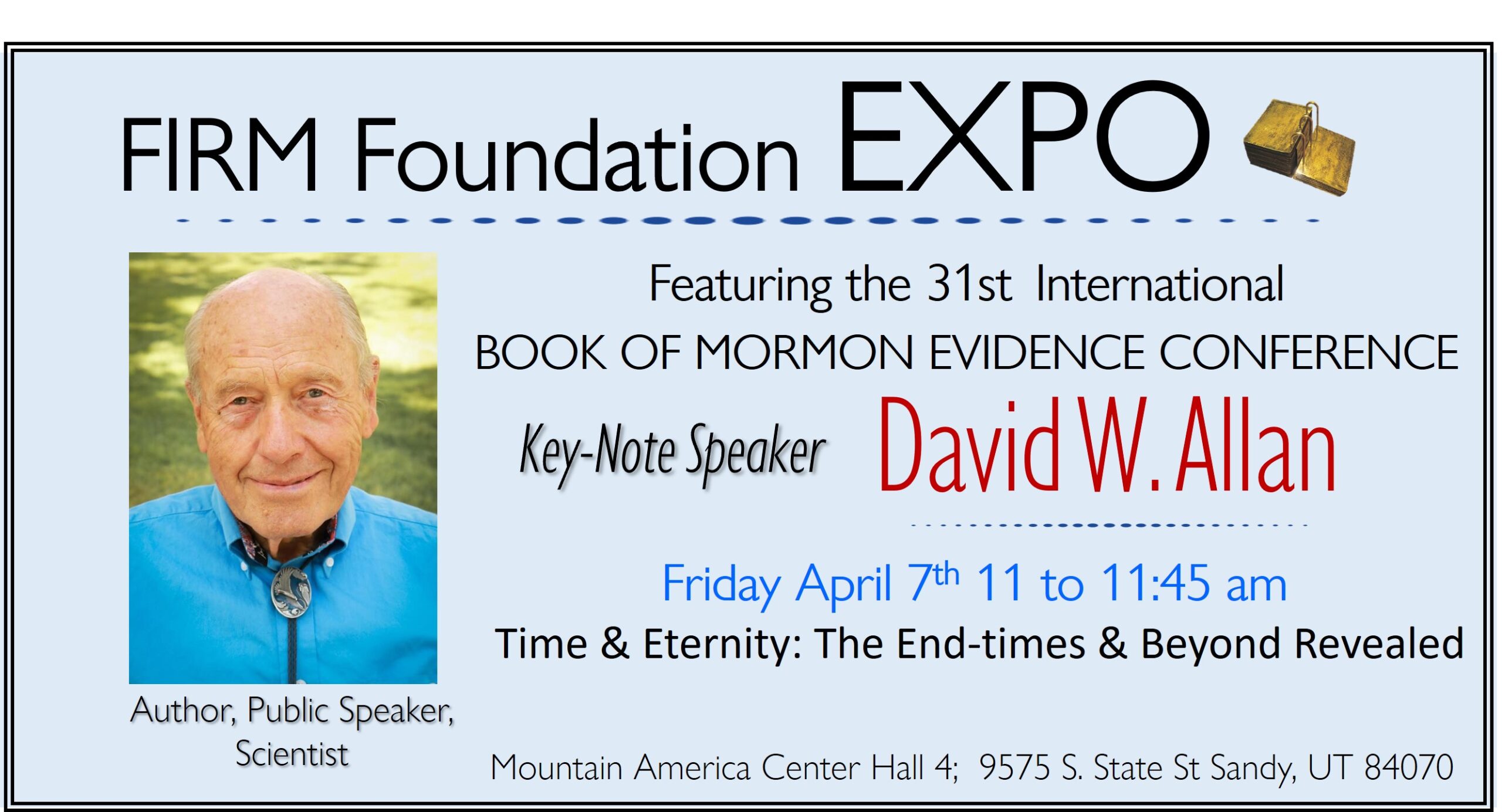
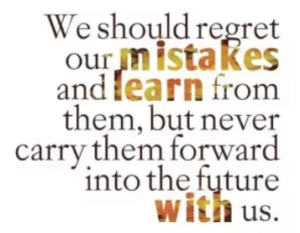 This week the Securities Exchange Commission fined the LDS Church and Ensign Peak Investments for apparent mis filings of its holdings.
This week the Securities Exchange Commission fined the LDS Church and Ensign Peak Investments for apparent mis filings of its holdings.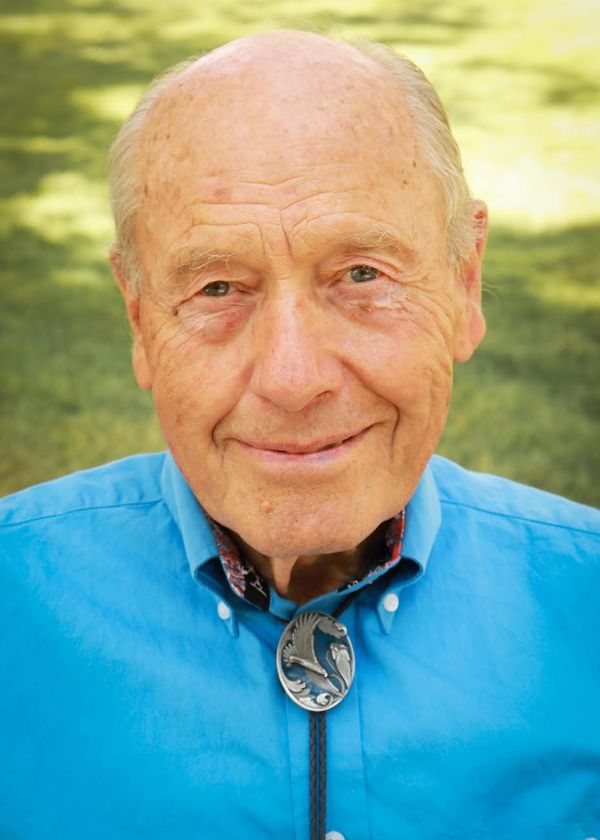
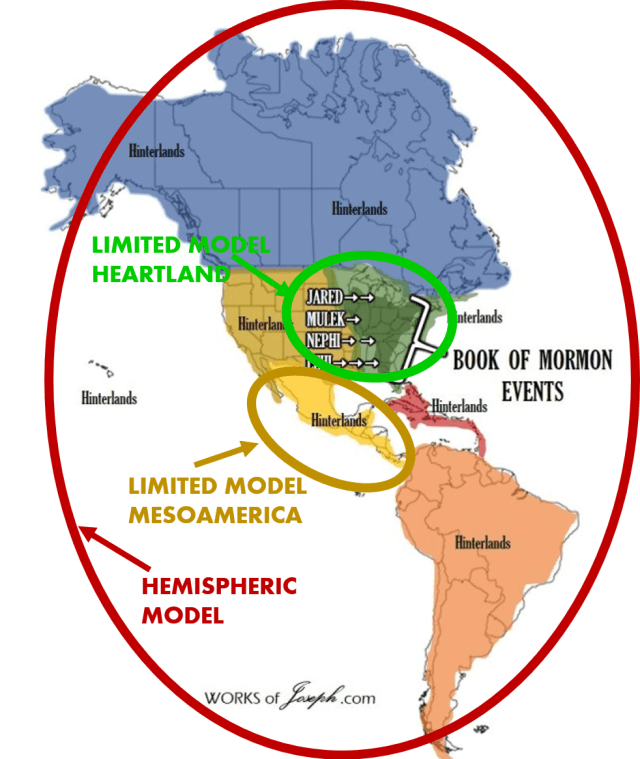 the Lamanites are, and where they lived, has been a topic of interest for many years in The Church of Jesus Christ of Latter-day Saints. I was taught in the 1970’s what is called the “Hemispheric Model” about the Book of Mormon. (Map Left)
the Lamanites are, and where they lived, has been a topic of interest for many years in The Church of Jesus Christ of Latter-day Saints. I was taught in the 1970’s what is called the “Hemispheric Model” about the Book of Mormon. (Map Left)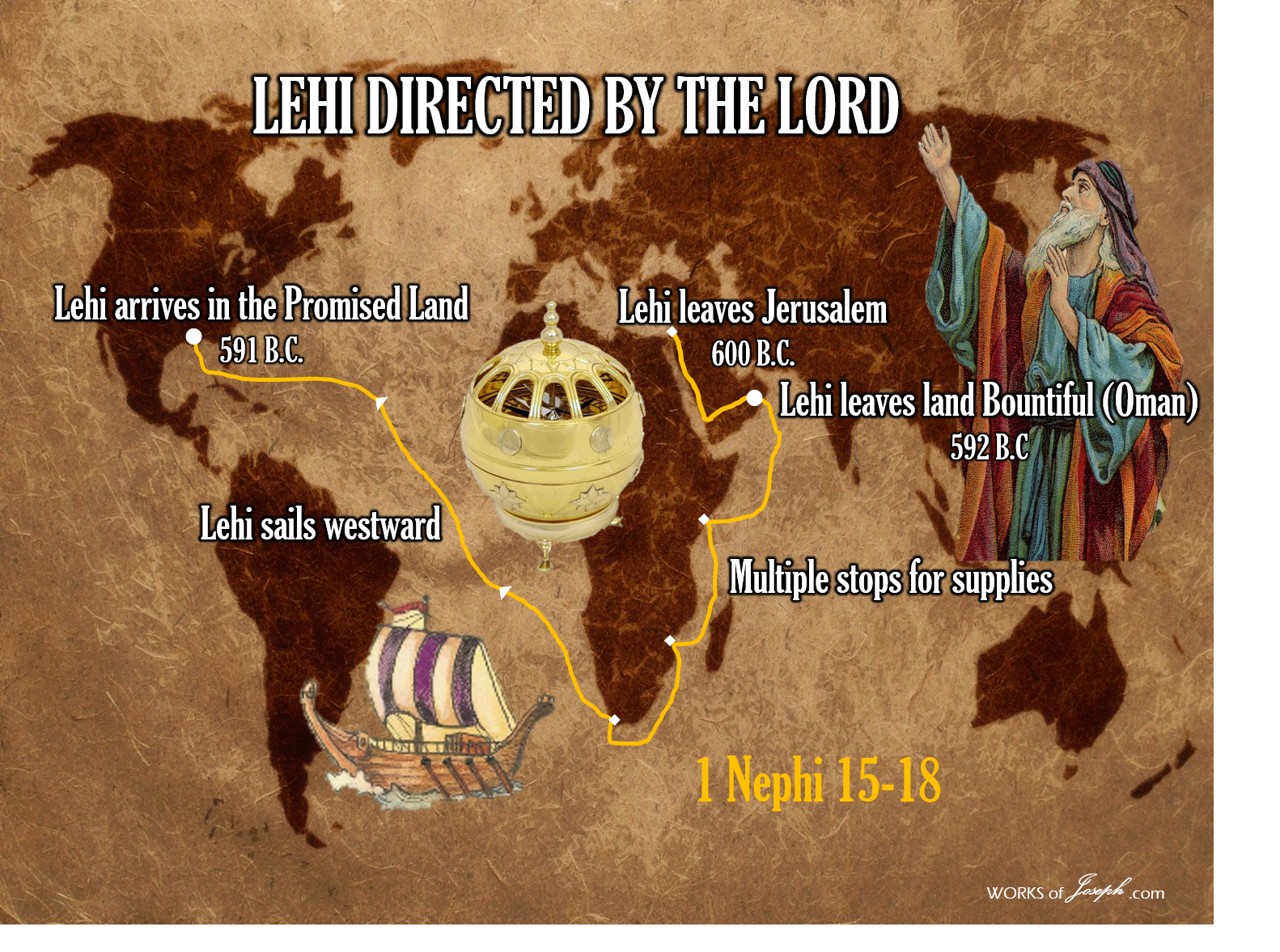 Heartlanders believe after landing near Tallahassee, Florida, the Nephites escaped from Laman and Lemuel north possibly on the Chattahoochee River that goes all the way through Unicoi Gap, GA into Tennessee, then on the Tennessee River north to Missouri, and traveling east across what Joseph Smith called “Plains of the Nephites, (JS Papers) Indiana, Illinois, and Ohio and ended at NY Cumorah. (This is the same pattern as the Ancient Hopewell Culture who historically traveled that same route and direction from 550 BC to 400 AD). Our friend Philip Beale estimates the time to accomplish this route in a sailing ship to be 4 to 6 months. Philip has proven that on two different voyages, one in 2009 and the other in 2020 in a replica Phoenicia sailing ship.
Heartlanders believe after landing near Tallahassee, Florida, the Nephites escaped from Laman and Lemuel north possibly on the Chattahoochee River that goes all the way through Unicoi Gap, GA into Tennessee, then on the Tennessee River north to Missouri, and traveling east across what Joseph Smith called “Plains of the Nephites, (JS Papers) Indiana, Illinois, and Ohio and ended at NY Cumorah. (This is the same pattern as the Ancient Hopewell Culture who historically traveled that same route and direction from 550 BC to 400 AD). Our friend Philip Beale estimates the time to accomplish this route in a sailing ship to be 4 to 6 months. Philip has proven that on two different voyages, one in 2009 and the other in 2020 in a replica Phoenicia sailing ship. 

 The Book of Mormon text mentions only one site–Cumorah–that relates to a modern location. Cumorah is where the last great battles were fought, and is also the place where Joseph Smith obtained the plates. Some people believe there is one Cumorah; others believe there are two, one in New York and another–the scene of the last battles–in Mesoamerica. This raises the question, how did Joseph Smith’s Cumorah end up in Mesoamerica?
The Book of Mormon text mentions only one site–Cumorah–that relates to a modern location. Cumorah is where the last great battles were fought, and is also the place where Joseph Smith obtained the plates. Some people believe there is one Cumorah; others believe there are two, one in New York and another–the scene of the last battles–in Mesoamerica. This raises the question, how did Joseph Smith’s Cumorah end up in Mesoamerica?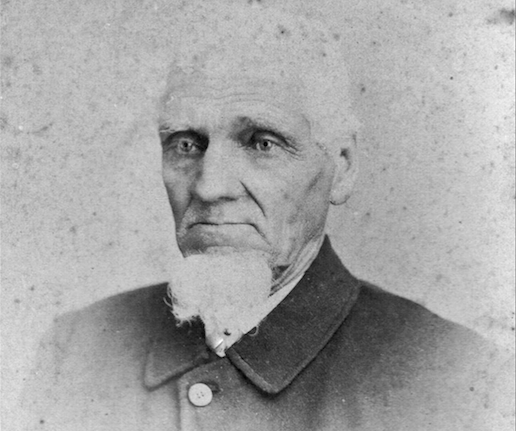
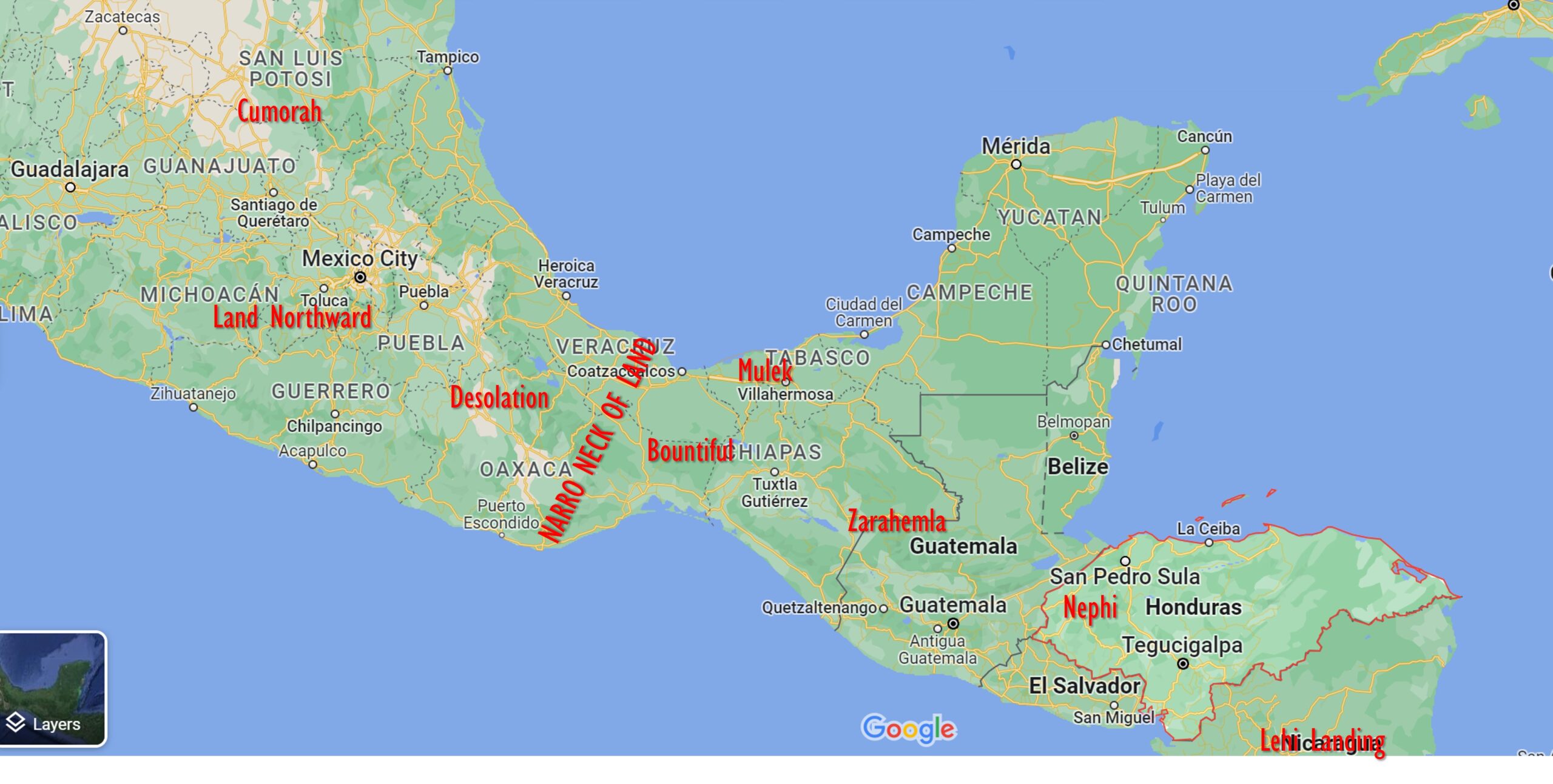 For 173 years, faithful Mormons have been searching in Mesoamerica for evidences of the Book of Mormon. Scientific expeditions have been conducted. Books have been published, films produced, tours undertaken, and artwork and photos created and displayed, not only in chapels and temples but in the pages of the Book of Mormon itself. And yet, after all this time, energy and expense, not a single piece of evidence of the Book of Mormon civilizations has been discovered in Mesoamerica. At best, scholars find parallels and similarities. They’ve made an honest and sincere–but terribly costly–mistake.
For 173 years, faithful Mormons have been searching in Mesoamerica for evidences of the Book of Mormon. Scientific expeditions have been conducted. Books have been published, films produced, tours undertaken, and artwork and photos created and displayed, not only in chapels and temples but in the pages of the Book of Mormon itself. And yet, after all this time, energy and expense, not a single piece of evidence of the Book of Mormon civilizations has been discovered in Mesoamerica. At best, scholars find parallels and similarities. They’ve made an honest and sincere–but terribly costly–mistake.

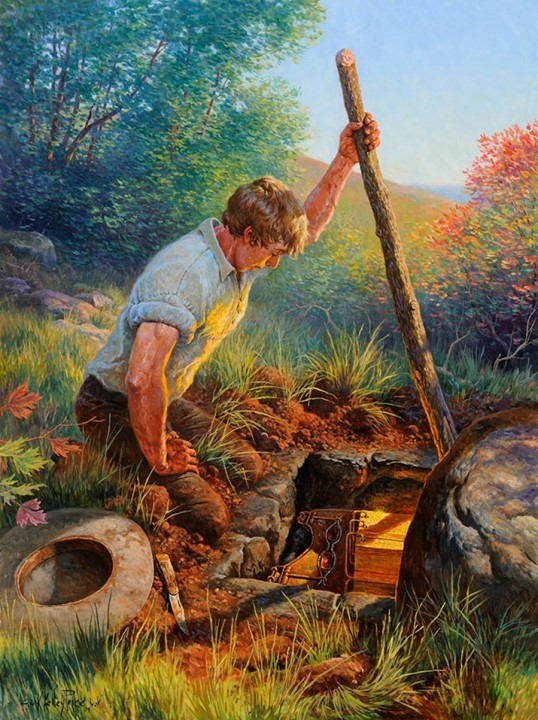




 “Moroni’s father was commander of the armies of this ancient people, known as Nephites. His name was Mormon. The war of which we speak took place here in America some four hundred years after Christ. As the fighting neared its end, Mormon gathered the remnant of his forces about a hill which they called Cumorah, located in what is now the western part of the state of New York… When finished with his record, Moroni was to hide it up in that same Hill Cumorah which was their battlefield. It would come forth in modern times as the Book of Mormon, named after Moroni’s father, the historian who compiled it.”
“Moroni’s father was commander of the armies of this ancient people, known as Nephites. His name was Mormon. The war of which we speak took place here in America some four hundred years after Christ. As the fighting neared its end, Mormon gathered the remnant of his forces about a hill which they called Cumorah, located in what is now the western part of the state of New York… When finished with his record, Moroni was to hide it up in that same Hill Cumorah which was their battlefield. It would come forth in modern times as the Book of Mormon, named after Moroni’s father, the historian who compiled it.” 

 “Remarkable discoveries of evidences of America’s prehistoric civilizations in various parts of the country are frequently being reported in public prints…
“Remarkable discoveries of evidences of America’s prehistoric civilizations in various parts of the country are frequently being reported in public prints…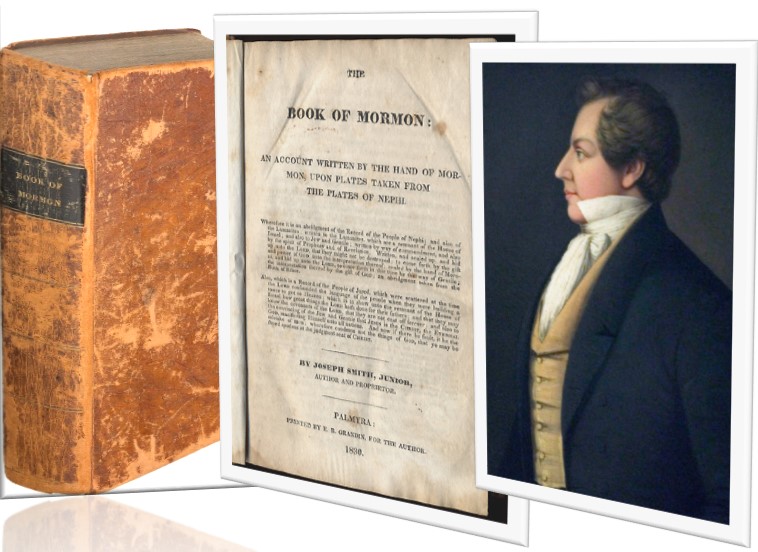
 Larry C. Porter, professor of Church history and doctrine, Brigham Young University. It is true that some critics of the Book of Mormon have claimed that Joseph Smith used historical, philosophical, literary, and religious ideas circulating during his lifetime to create the Book of Mormon—making it merely a reflection of western New York culture in the early nineteenth century.
Larry C. Porter, professor of Church history and doctrine, Brigham Young University. It is true that some critics of the Book of Mormon have claimed that Joseph Smith used historical, philosophical, literary, and religious ideas circulating during his lifetime to create the Book of Mormon—making it merely a reflection of western New York culture in the early nineteenth century.
 To such an argument we have the convincing testimony of the Spirit that the Book of Mormon is what it declares itself to be—
To such an argument we have the convincing testimony of the Spirit that the Book of Mormon is what it declares itself to be— The Book of Mormon is:
The Book of Mormon is: President Benson has said, “We are not required to prove that the Book of Mormon is true or is an authentic record through external evidences—
President Benson has said, “We are not required to prove that the Book of Mormon is true or is an authentic record through external evidences—
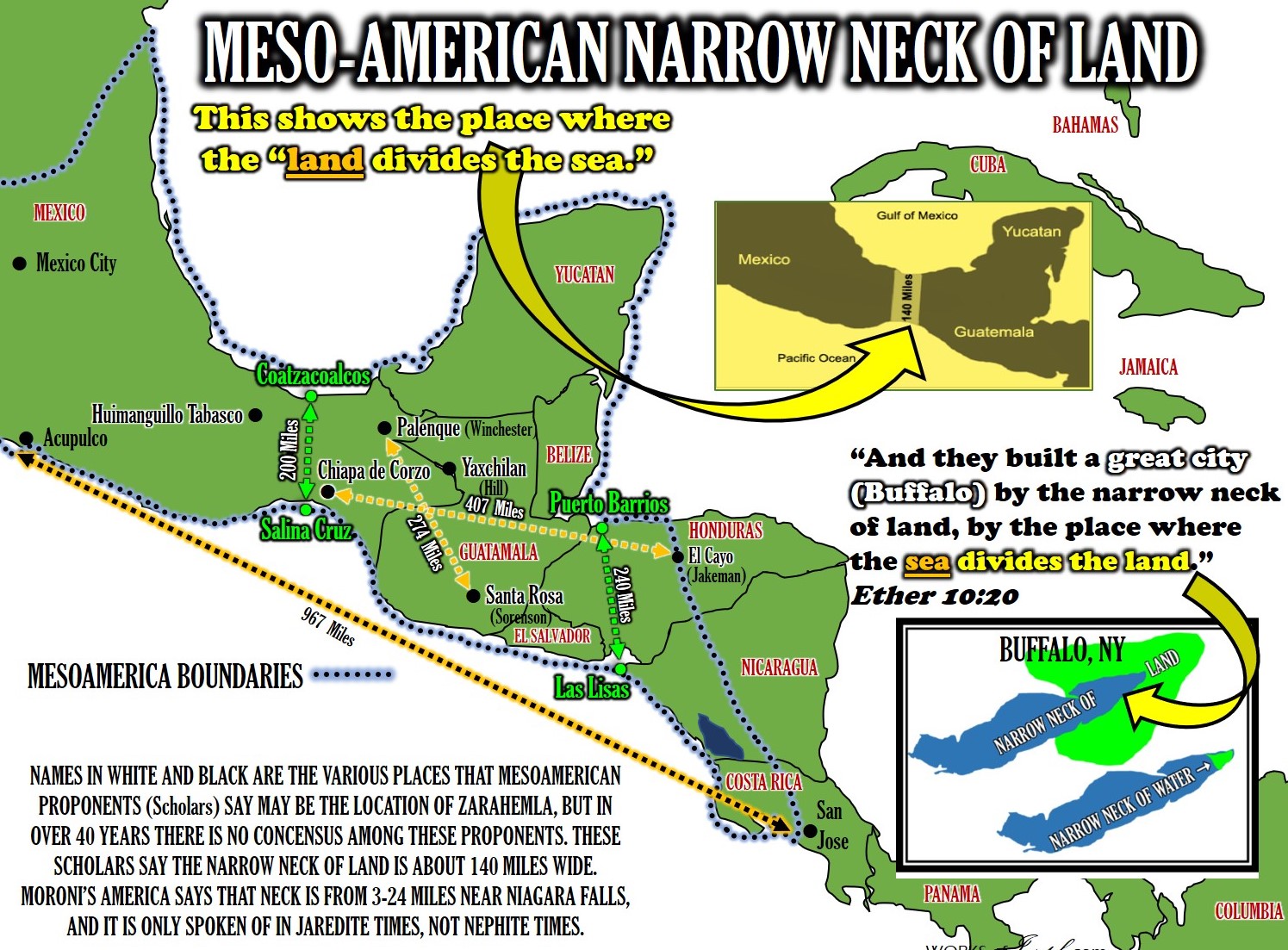
 “Here, Brother Sorenson characterizes the teachings of the prophets about the New York Cumorah as a “mistaken folk view.” This degree of derision for the prophets definitely “may startle some” members of the Church who accept what the prophets teach.” Jonathan Neville
“Here, Brother Sorenson characterizes the teachings of the prophets about the New York Cumorah as a “mistaken folk view.” This degree of derision for the prophets definitely “may startle some” members of the Church who accept what the prophets teach.” Jonathan Neville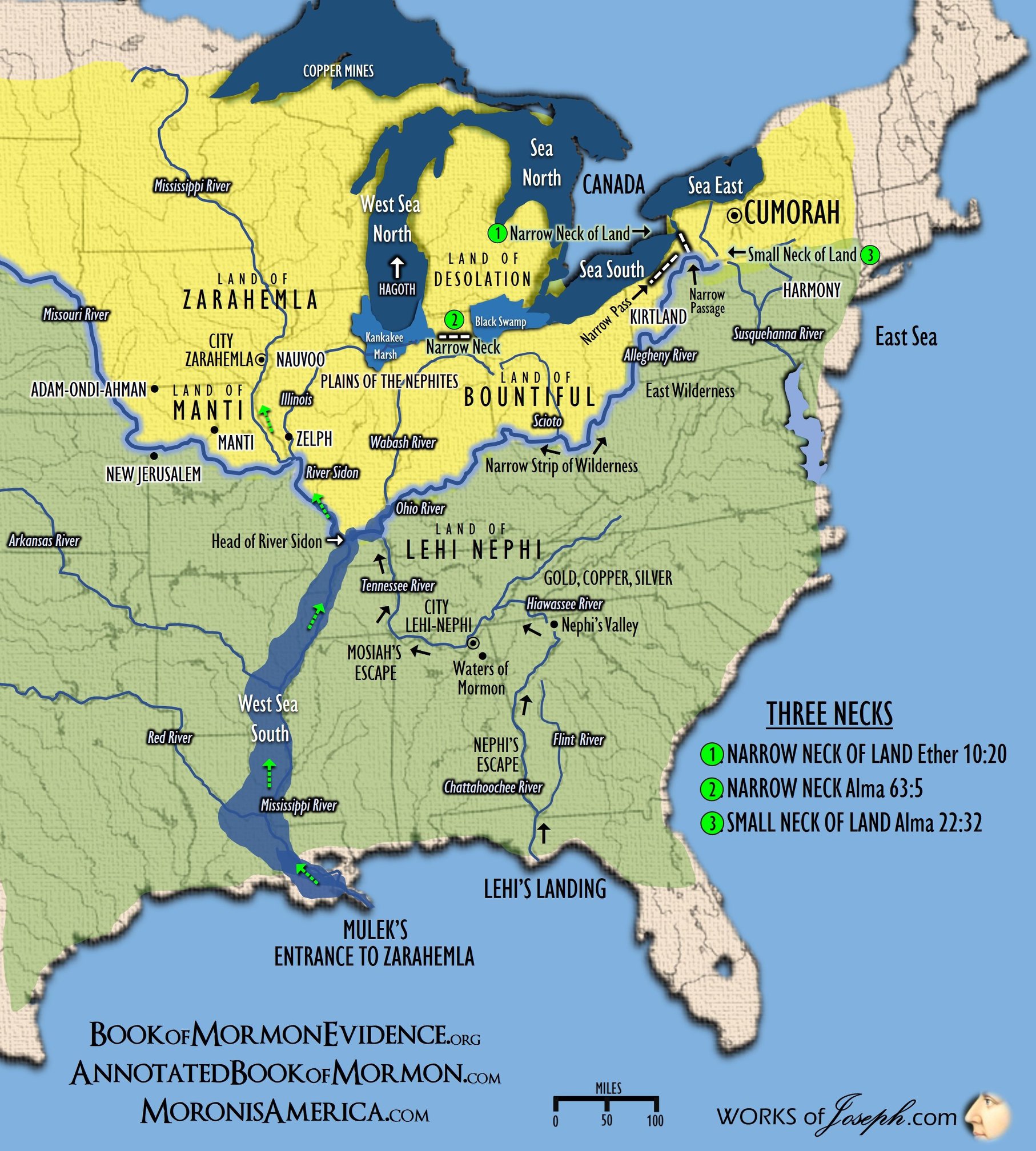
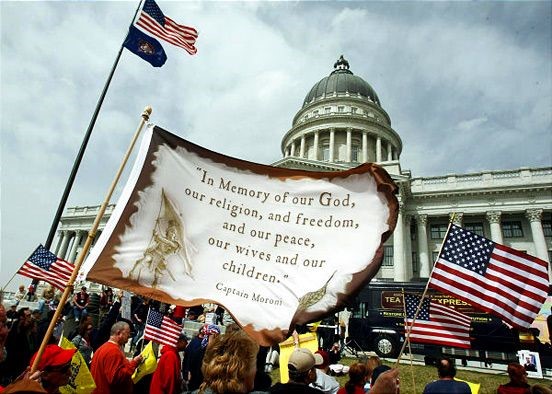
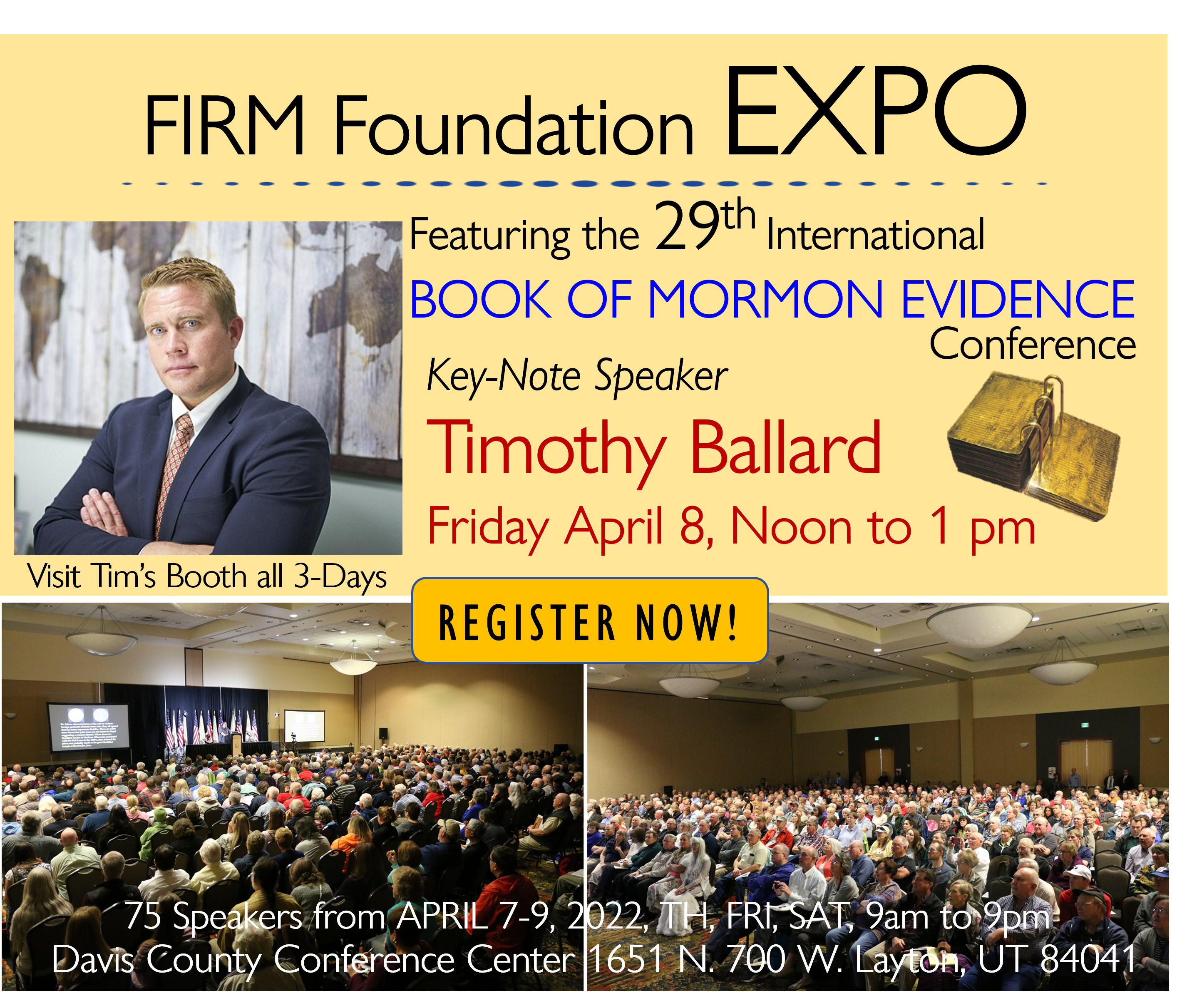
 Of the First Presidency Conference Report, October 1968, pp. 106-110
Of the First Presidency Conference Report, October 1968, pp. 106-110
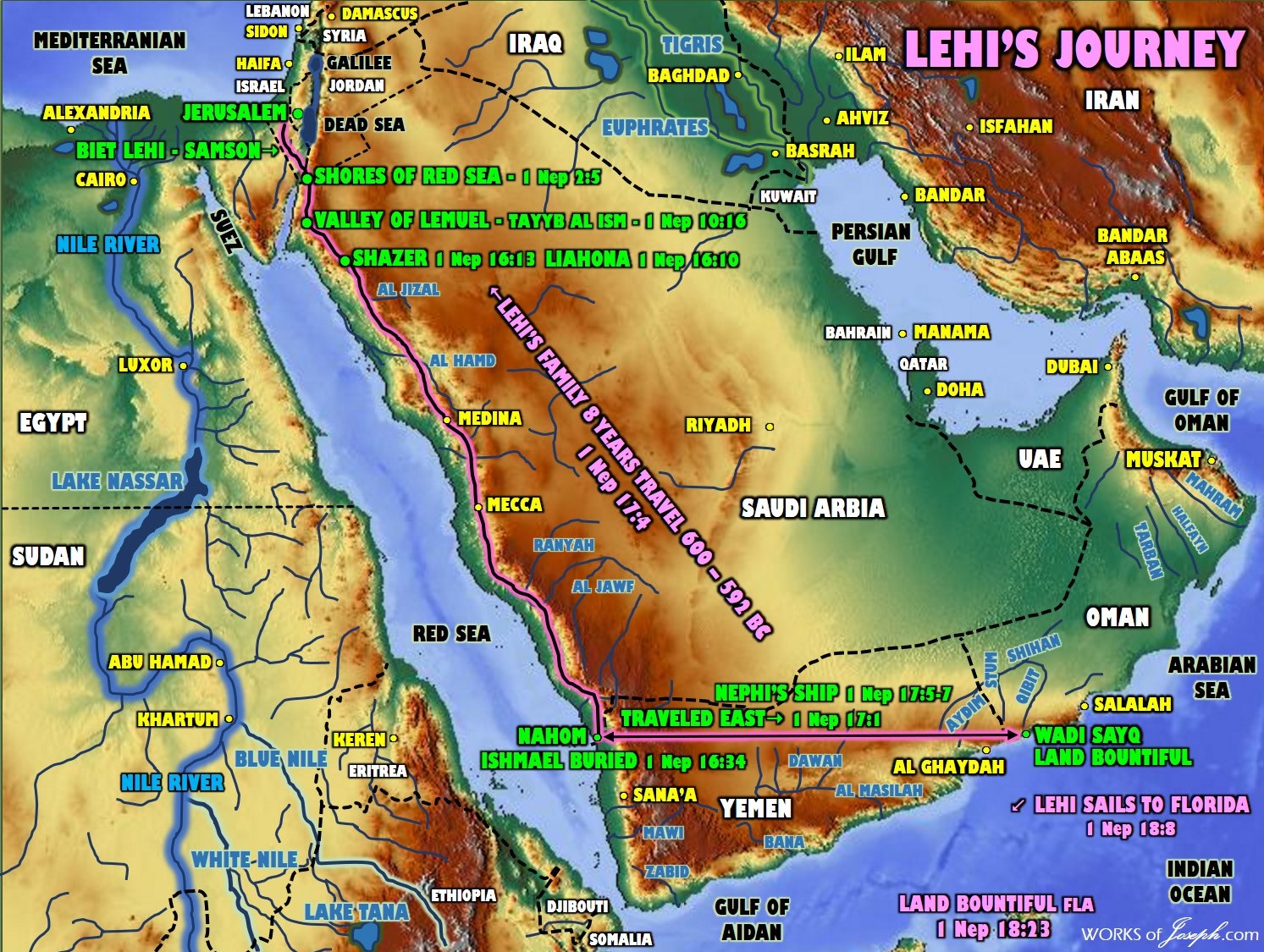
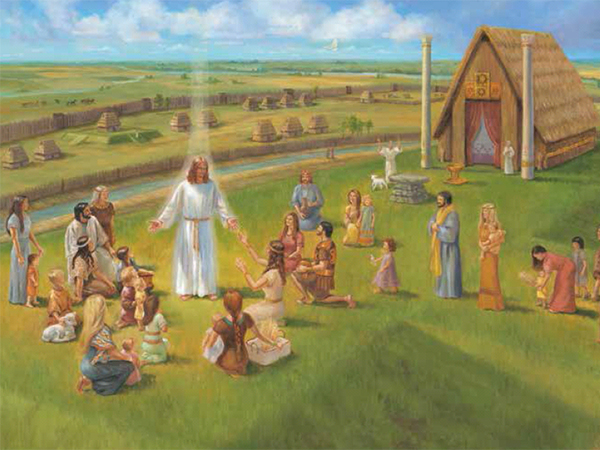
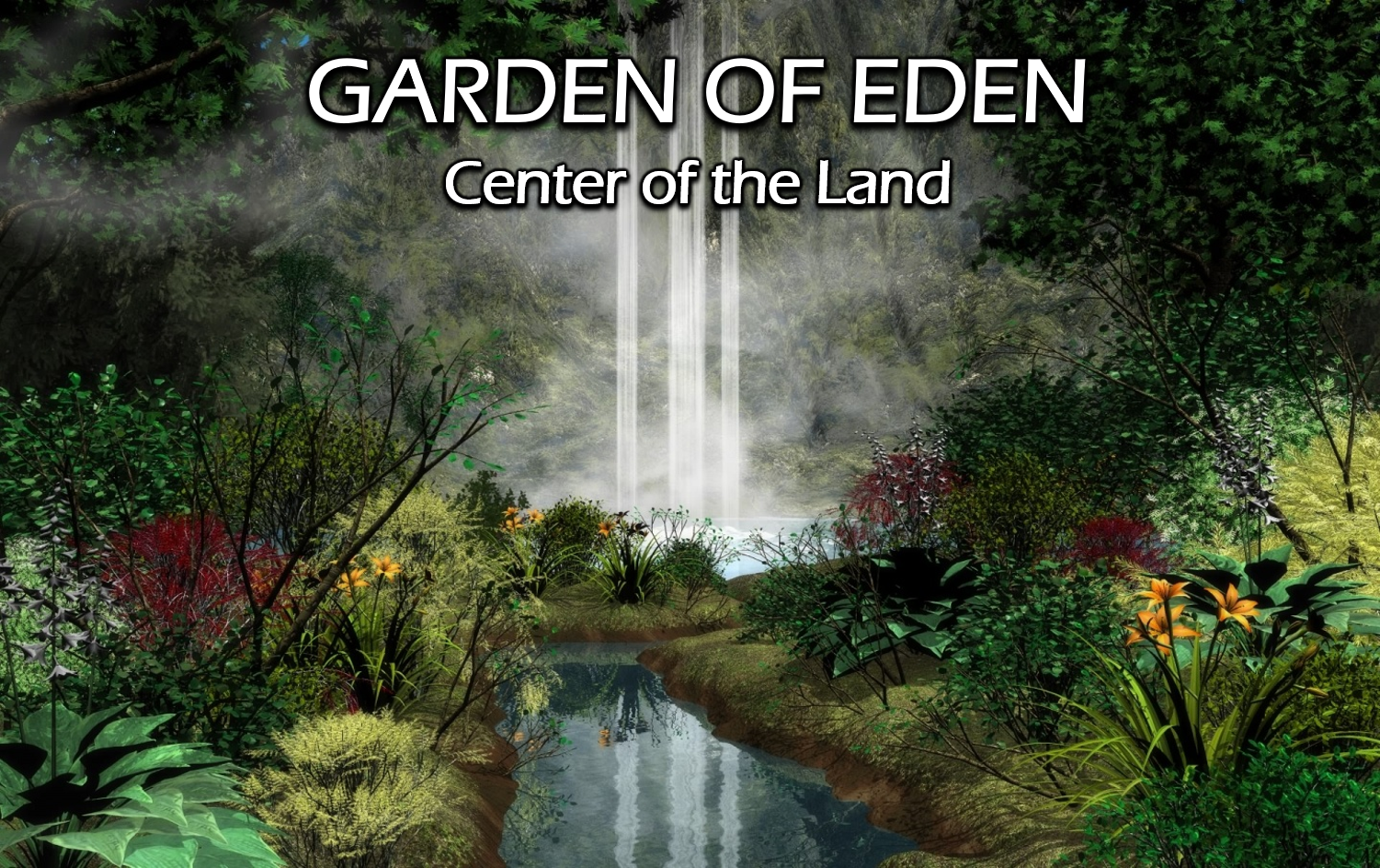
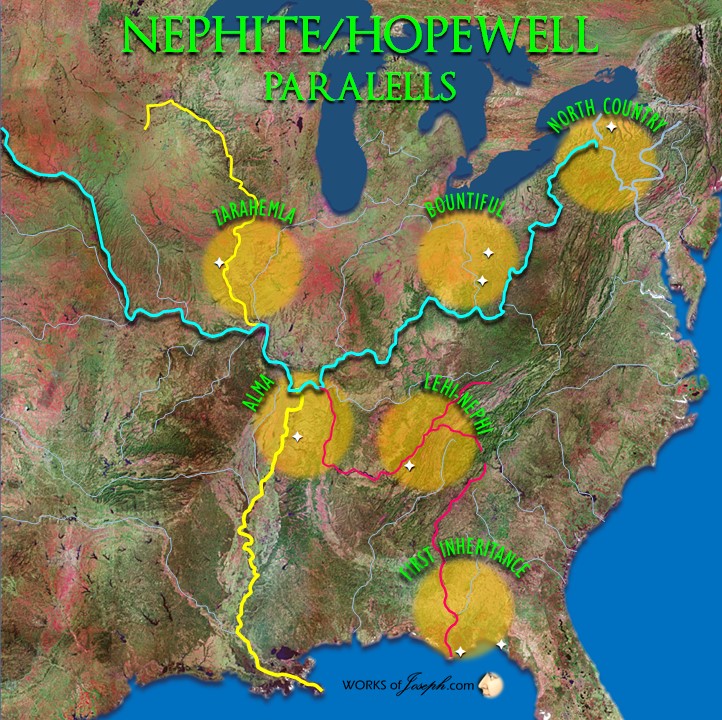
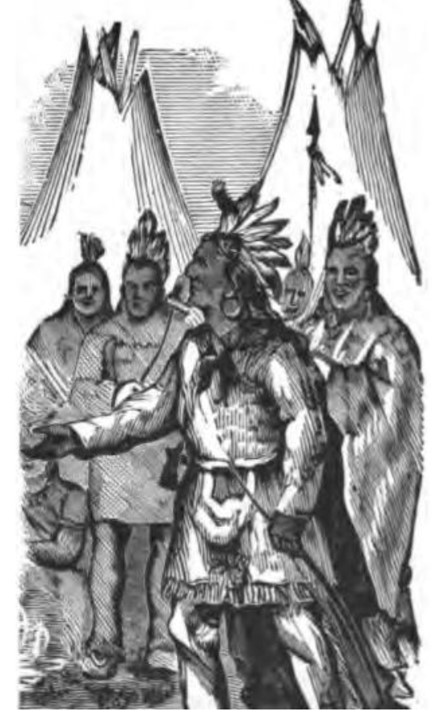
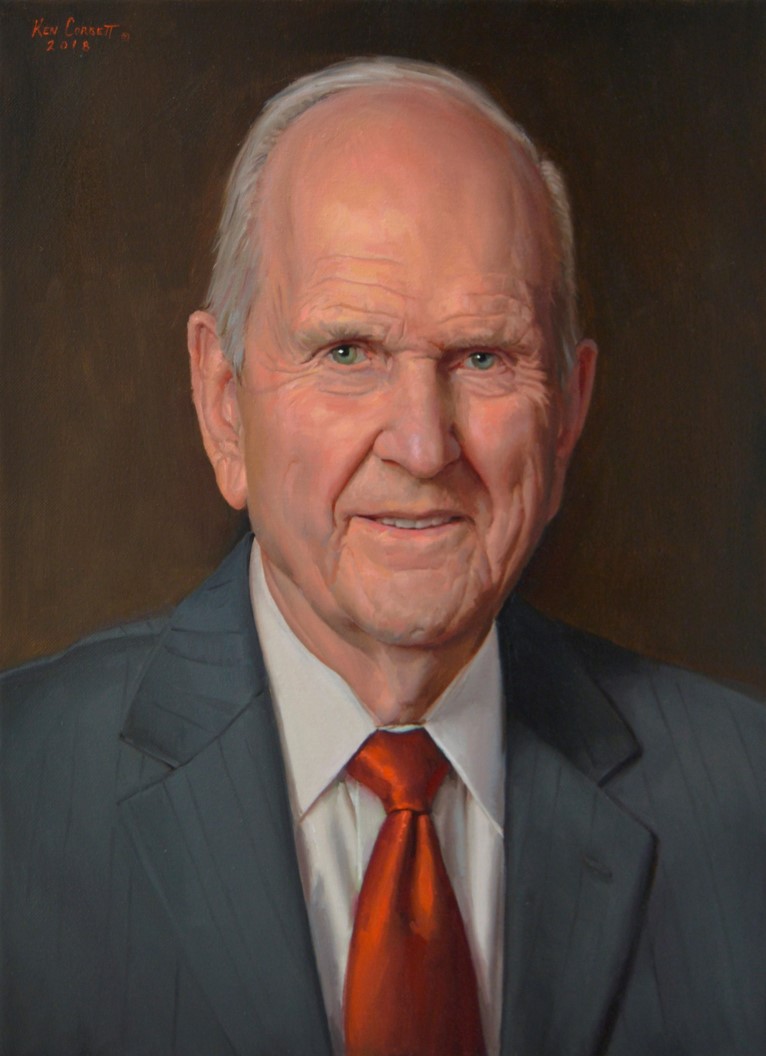
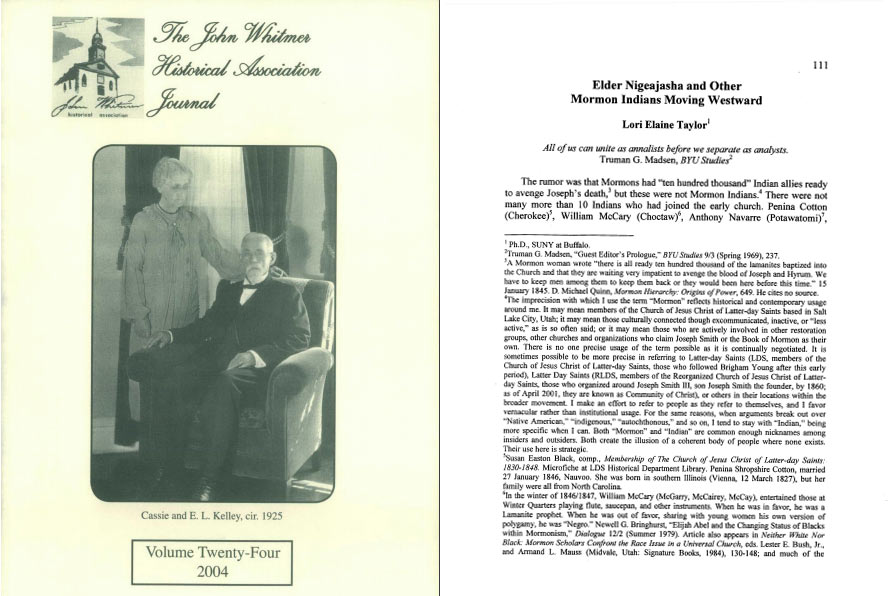
 Mormons set out to save the Lamanites. Right on the title pages of the Book of Mormon, Joseph Smith told the world who the book was for: “Written to the Lamanites, who are a remnant of the house of Israel.” Early Mormons knew who Lamanites were. The book belonged to the Indians. The common version of early Mormon contacts with Indians—the first mission to Indian territory and a few delegations to Nauvoo—does not constitute the whole of Mormon-Indian relations during that time. Mormons and Indians were overlapping and connected peoples on the frontier. As Mormons moved “on the borders by the Lamanites,” they inevitably met Indians. Sometimes Indians showed an interest in the book presented to them as the history of their ancestors. Some Indians became Mormons. Mormons did not write all they knew of Indians in part because of the explosive potential of what could be said. Because most records are silent about Indians, most grand narratives of Mormon history are silent, too. But, if we dig in and around the stories we already know, more stories of Indians, even Mormon Indians, are waiting to be told.
Mormons set out to save the Lamanites. Right on the title pages of the Book of Mormon, Joseph Smith told the world who the book was for: “Written to the Lamanites, who are a remnant of the house of Israel.” Early Mormons knew who Lamanites were. The book belonged to the Indians. The common version of early Mormon contacts with Indians—the first mission to Indian territory and a few delegations to Nauvoo—does not constitute the whole of Mormon-Indian relations during that time. Mormons and Indians were overlapping and connected peoples on the frontier. As Mormons moved “on the borders by the Lamanites,” they inevitably met Indians. Sometimes Indians showed an interest in the book presented to them as the history of their ancestors. Some Indians became Mormons. Mormons did not write all they knew of Indians in part because of the explosive potential of what could be said. Because most records are silent about Indians, most grand narratives of Mormon history are silent, too. But, if we dig in and around the stories we already know, more stories of Indians, even Mormon Indians, are waiting to be told.
 After Joseph Smith died in June of 1844 and Brigham Young asserted the authority of the Twelve Apostles to lead the church, the exploring mission given by Joseph Smith in the spring of 1844 to convert the Lamanites and find a home for the Saints was not forgotten. Joseph Smith began organizing an exploratory company for California and Oregon in early 1844.
After Joseph Smith died in June of 1844 and Brigham Young asserted the authority of the Twelve Apostles to lead the church, the exploring mission given by Joseph Smith in the spring of 1844 to convert the Lamanites and find a home for the Saints was not forgotten. Joseph Smith began organizing an exploratory company for California and Oregon in early 1844. Optimism about Lamanites and Indians flowed freely in Nauvoo, in part because of the conversion in 1840 of
Optimism about Lamanites and Indians flowed freely in Nauvoo, in part because of the conversion in 1840 of  At the beginning of 1845, rumors of Indians were still flying. “[T]here is,” wrote one woman, “all ready ten hundred thousand of the lamanites baptized into the Church and that they are waiting very impatient to avenge the blood of Joseph and Hyrum. We have to keep men among them to keep them back or they would [have] been here before this time.”
At the beginning of 1845, rumors of Indians were still flying. “[T]here is,” wrote one woman, “all ready ten hundred thousand of the lamanites baptized into the Church and that they are waiting very impatient to avenge the blood of Joseph and Hyrum. We have to keep men among them to keep them back or they would [have] been here before this time.” After two weeks overland to Indian territory in Kansas,
After two weeks overland to Indian territory in Kansas,  When they arrived in Indian territory, they were met on the short by Joseph Herring’s brother George Herring and by “Father Hendrix.”
When they arrived in Indian territory, they were met on the short by Joseph Herring’s brother George Herring and by “Father Hendrix.” Hosea Stout, chief of the Nauvoo police since the death of Jonathan Dunham, hosted many Indians. In particular, he spent a lot of time with
Hosea Stout, chief of the Nauvoo police since the death of Jonathan Dunham, hosted many Indians. In particular, he spent a lot of time with 


